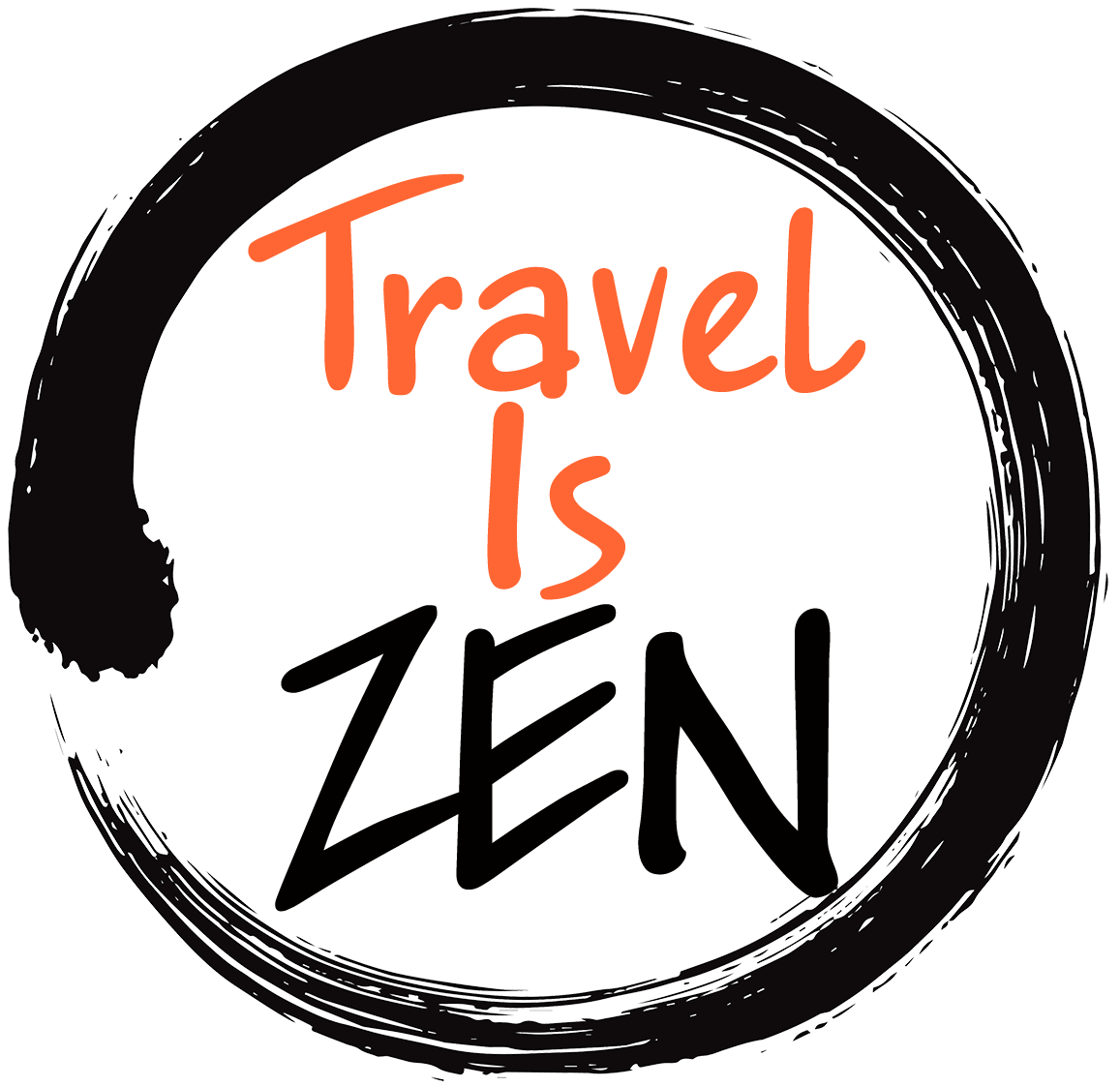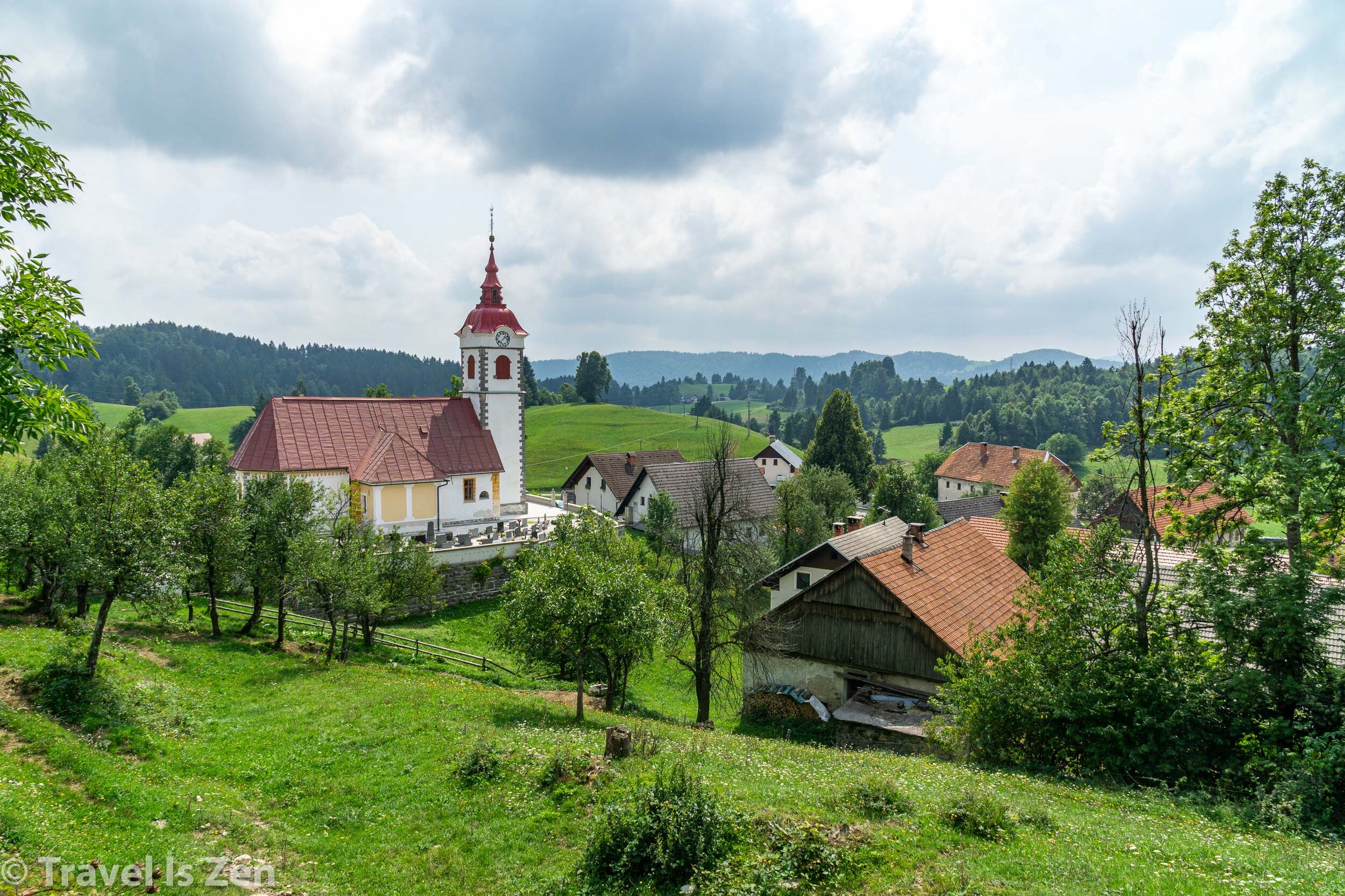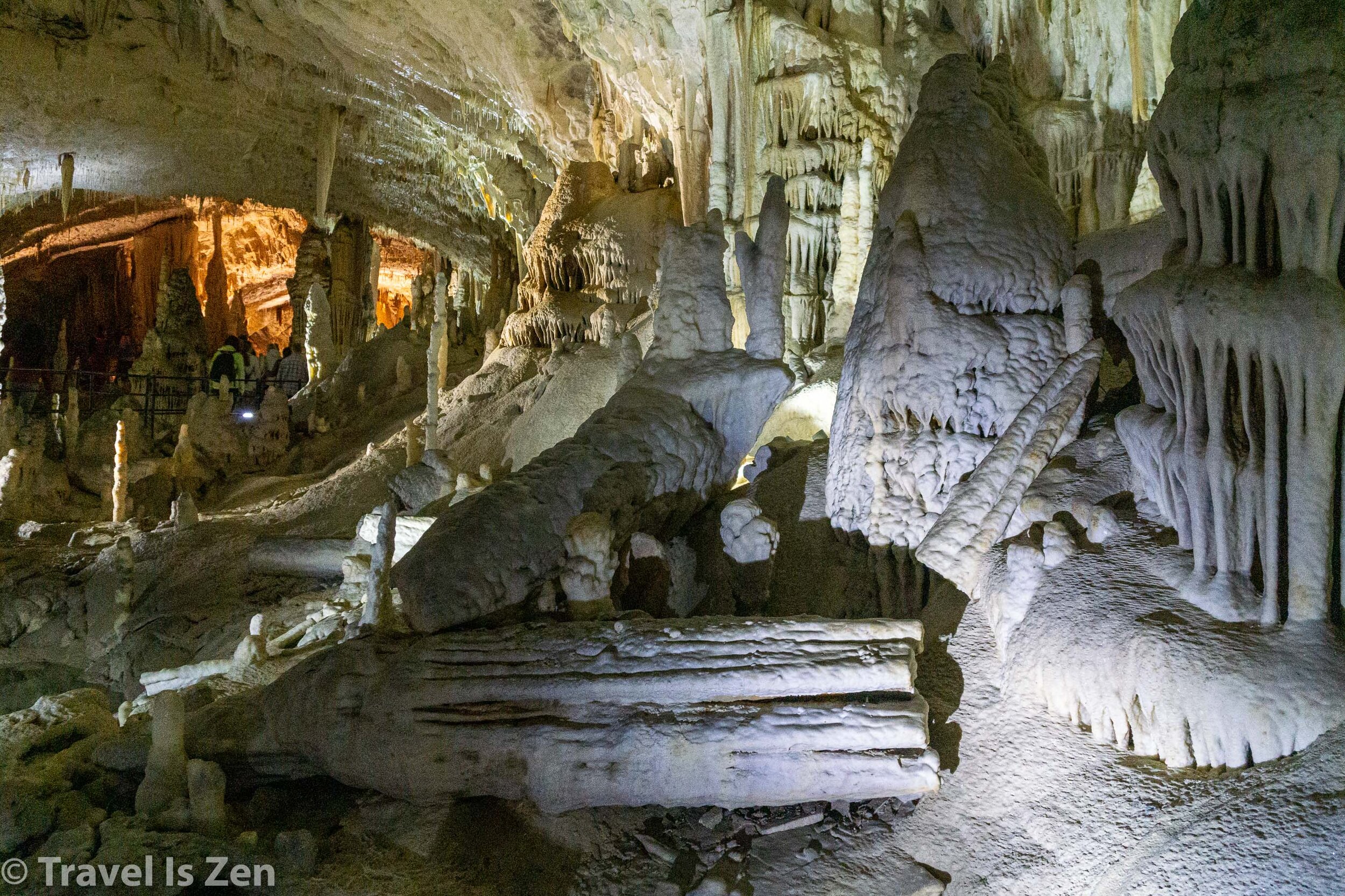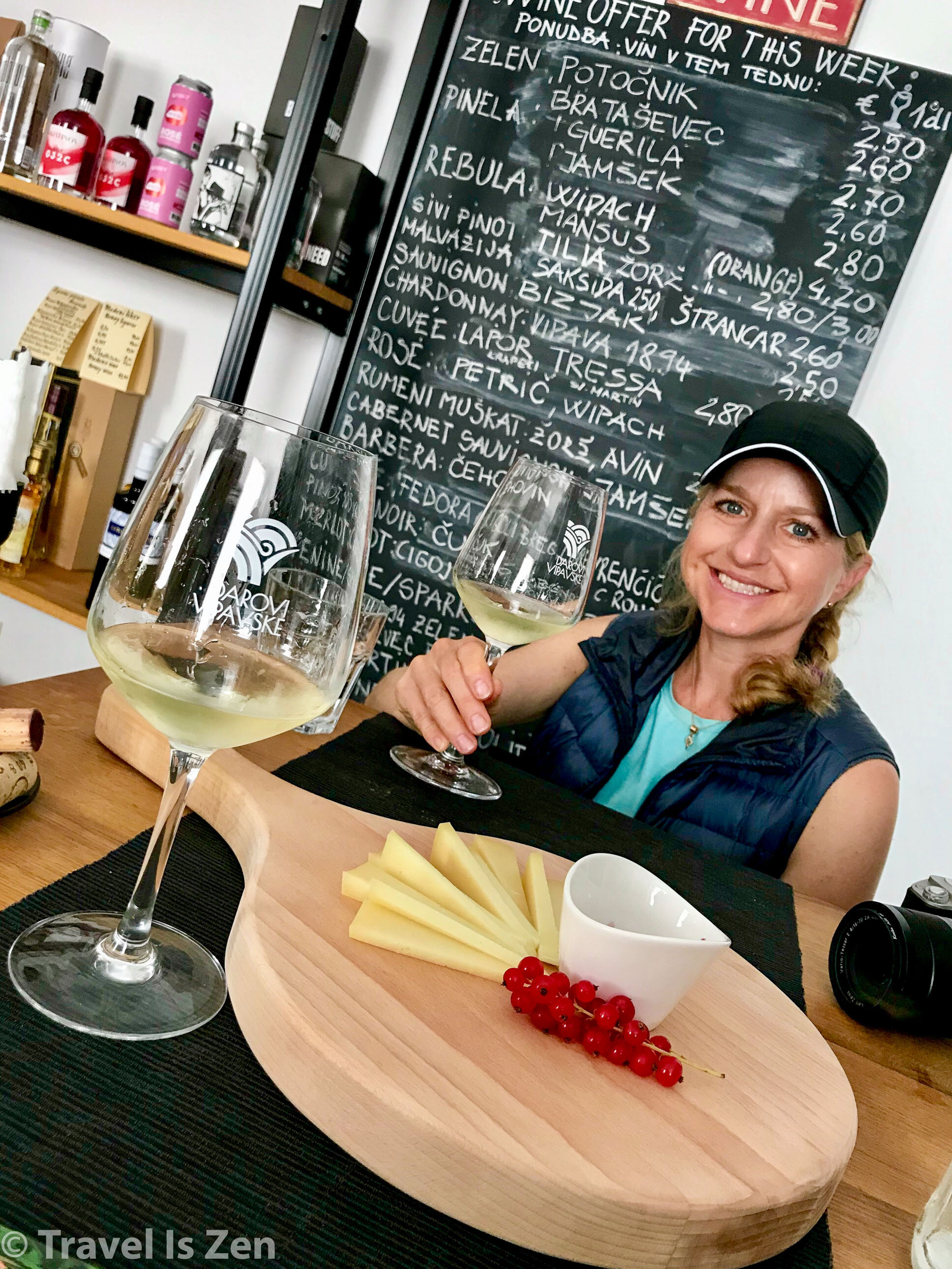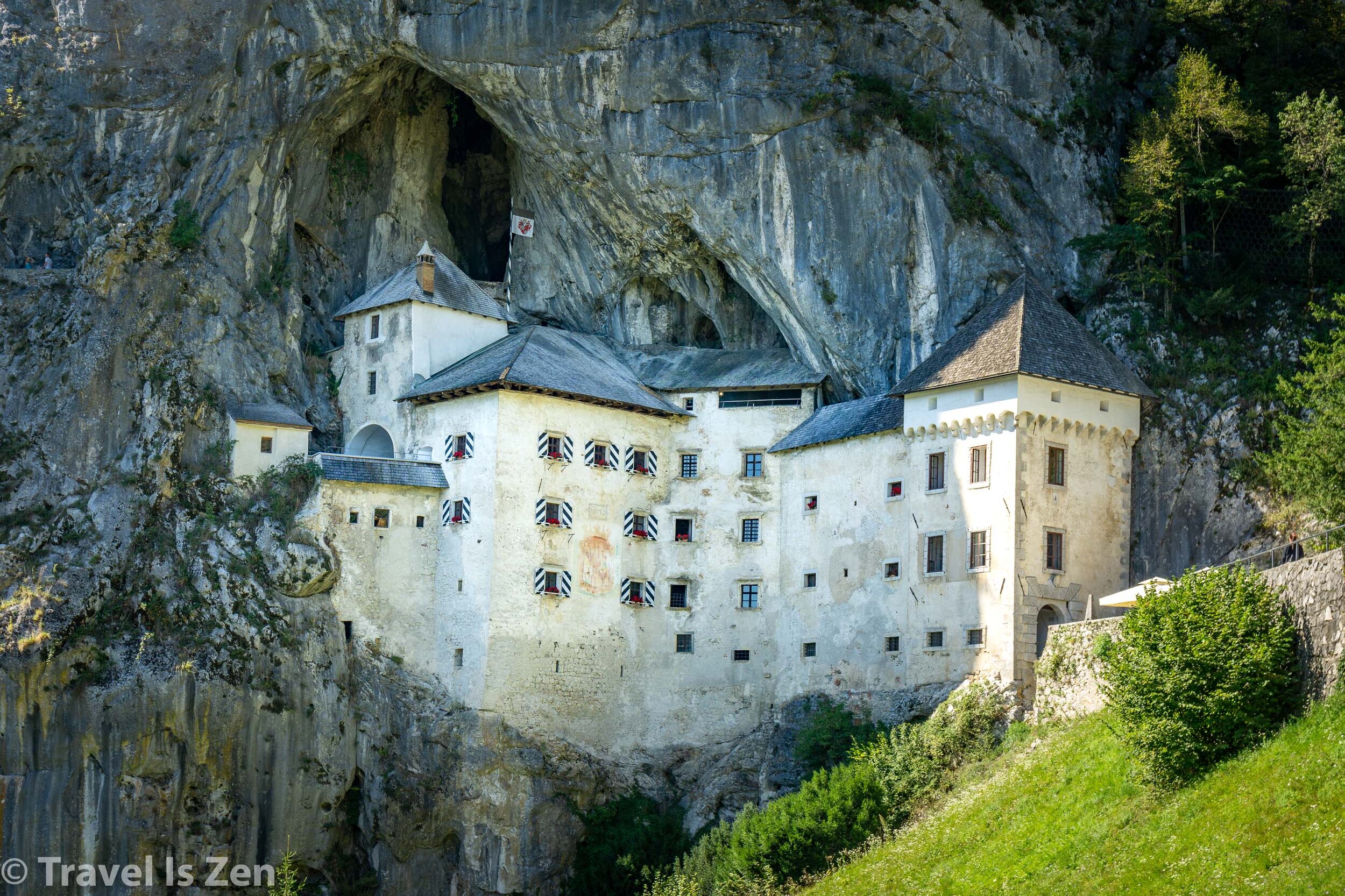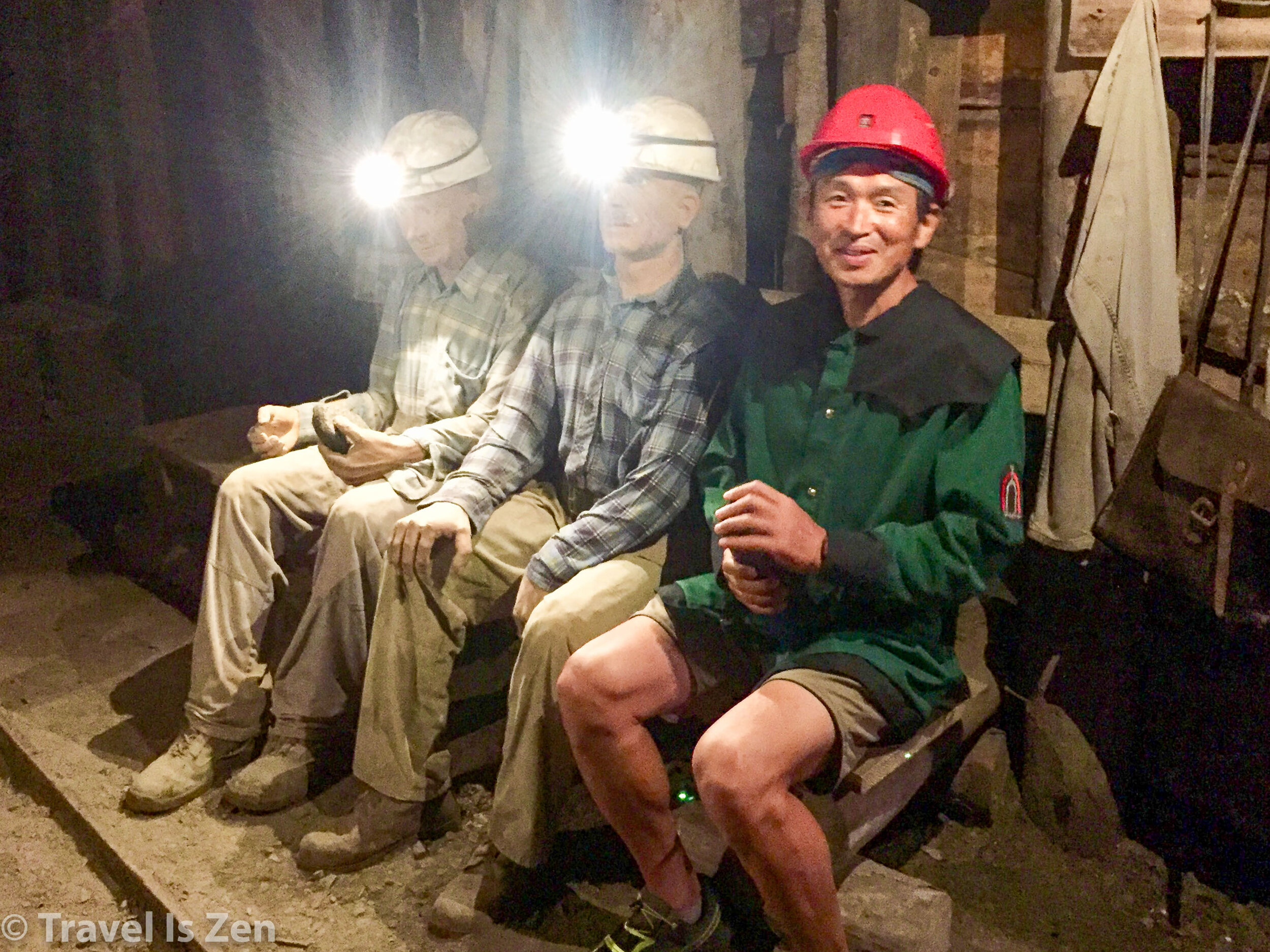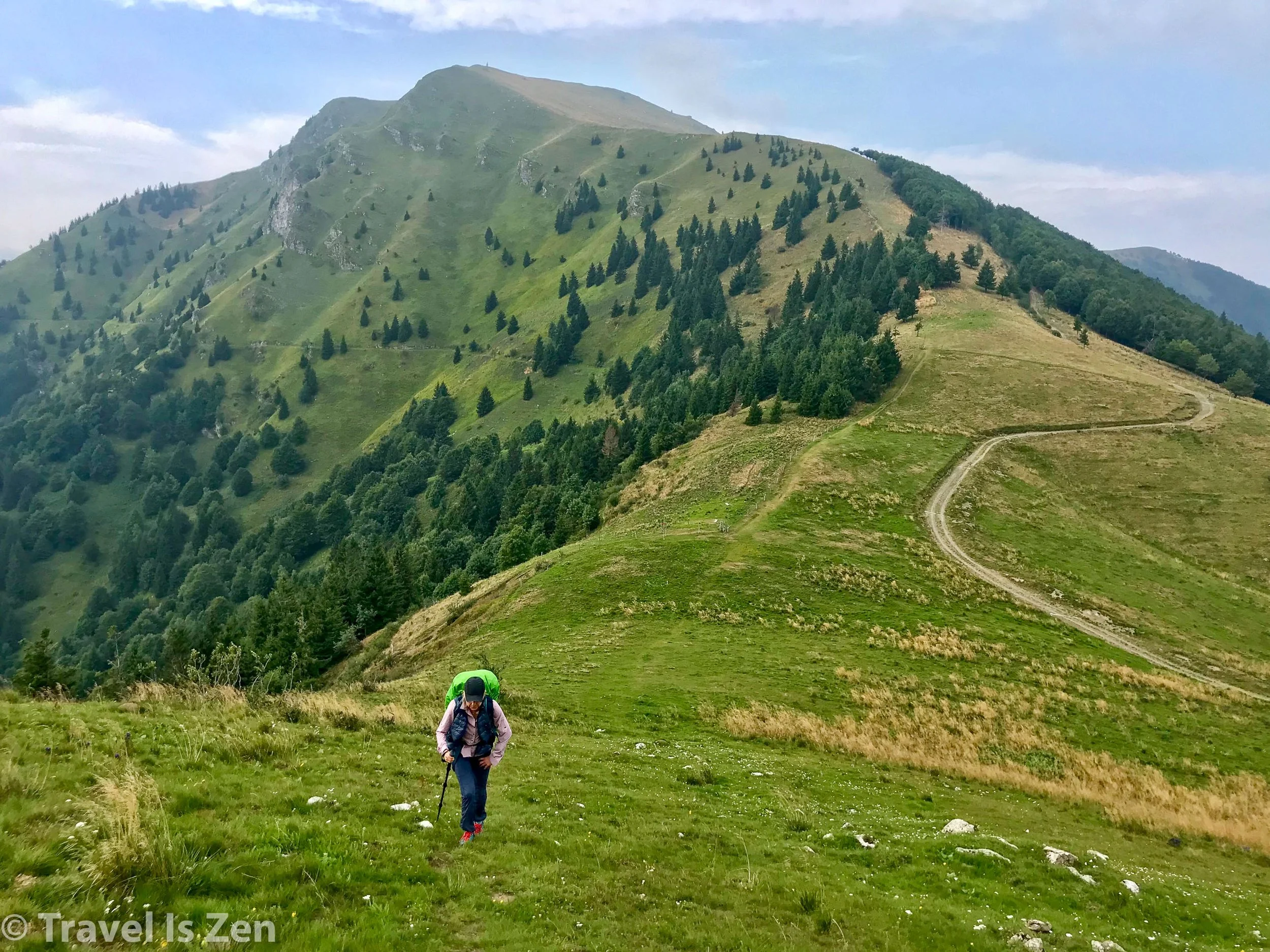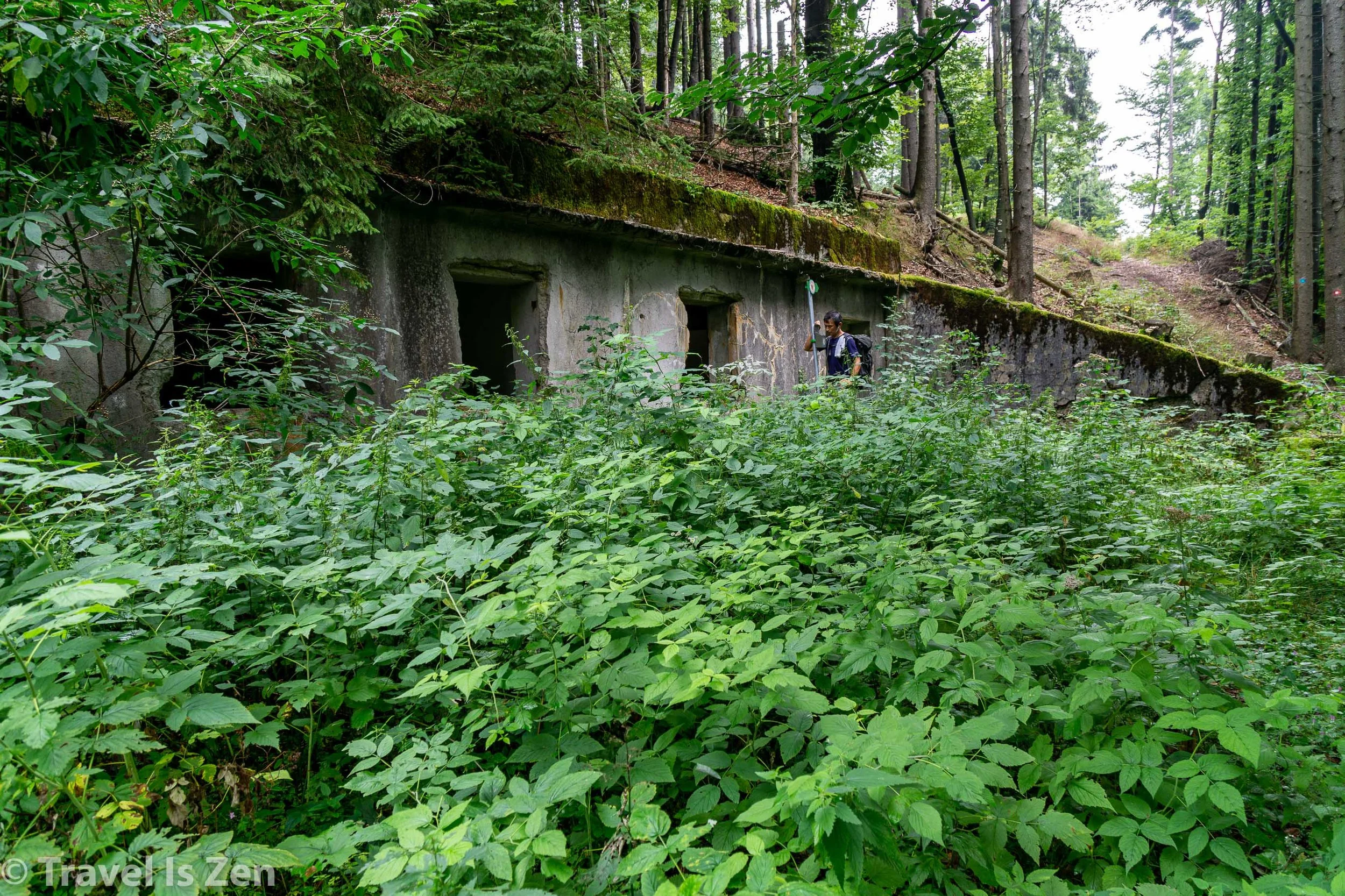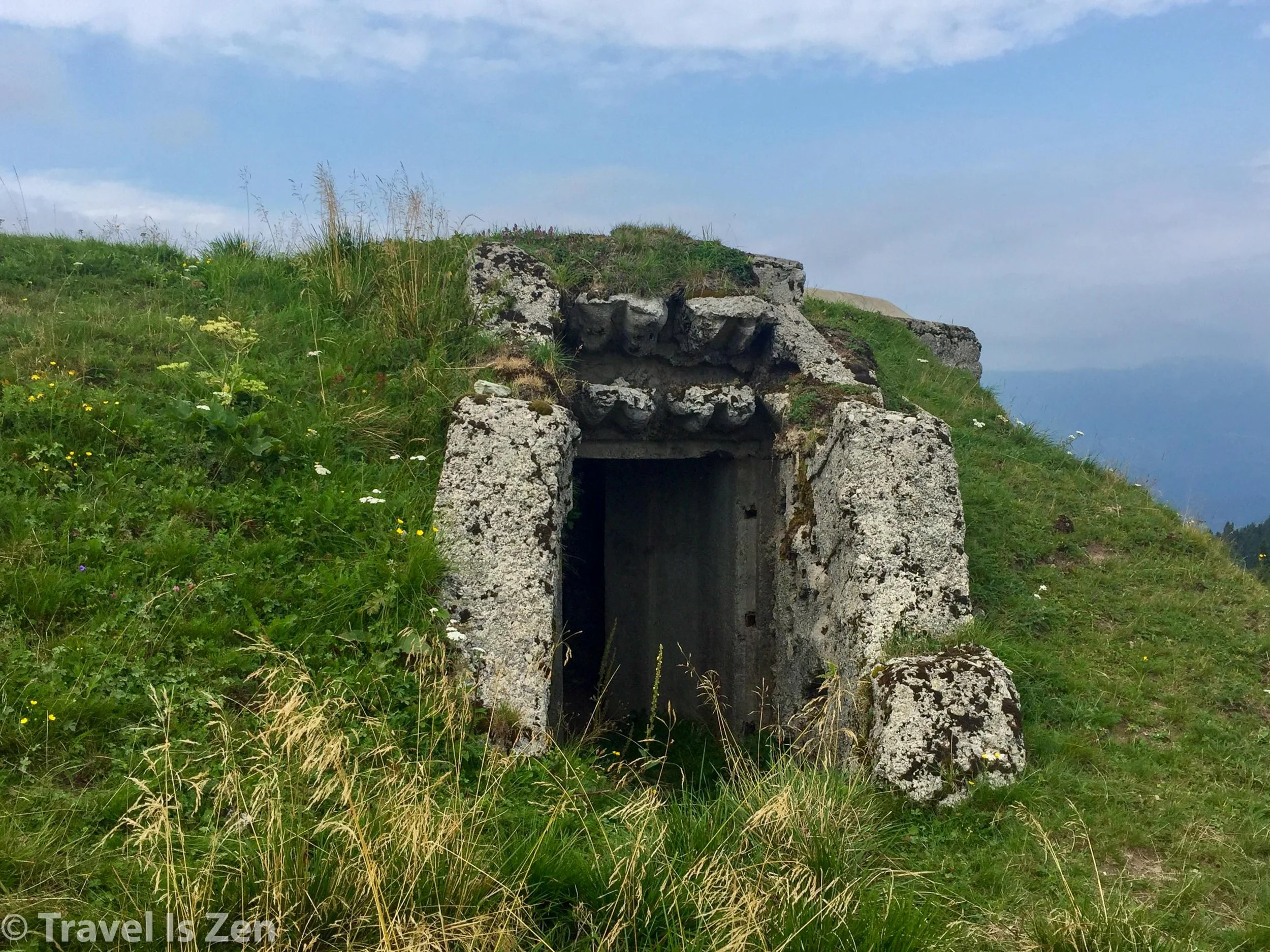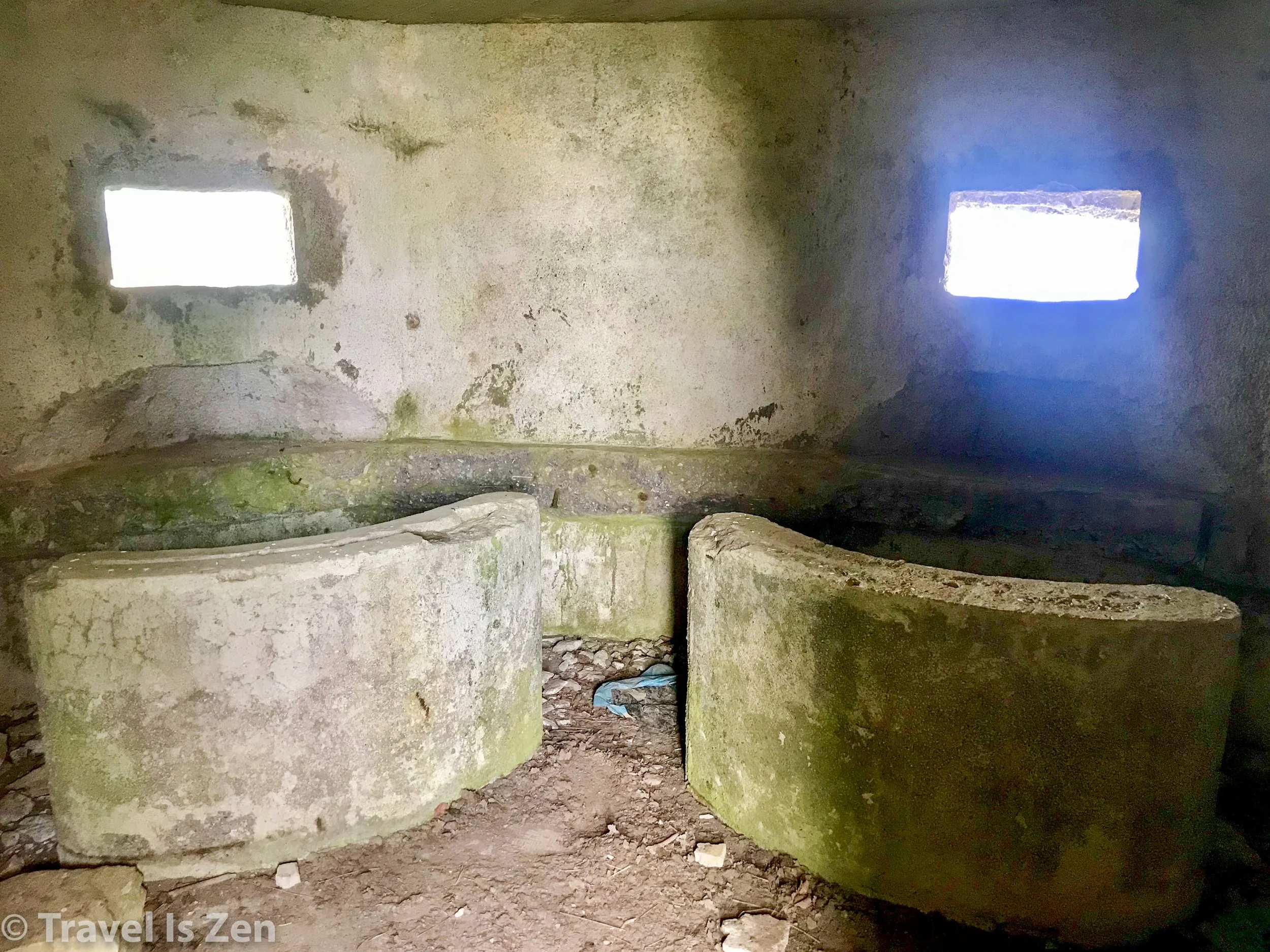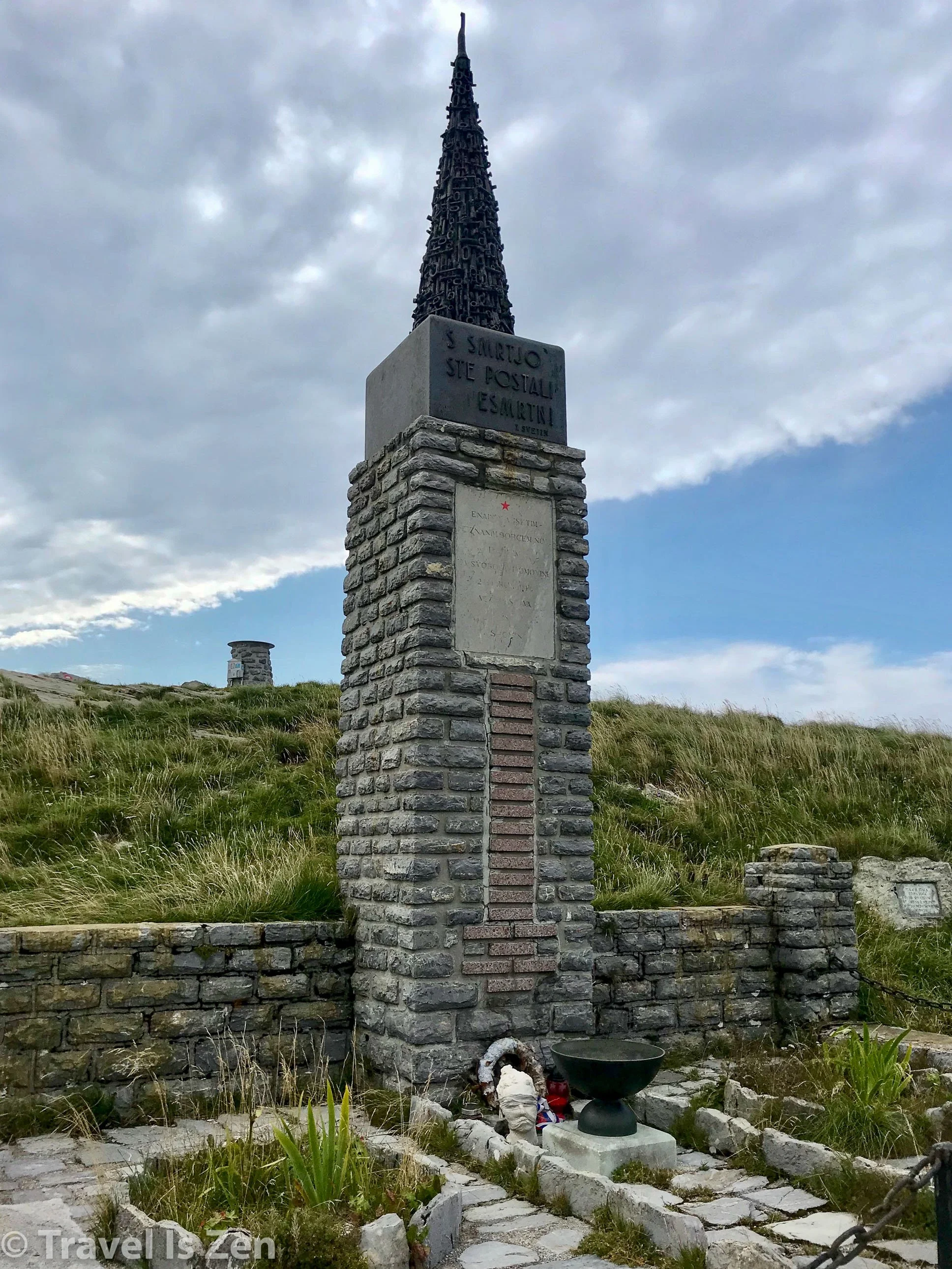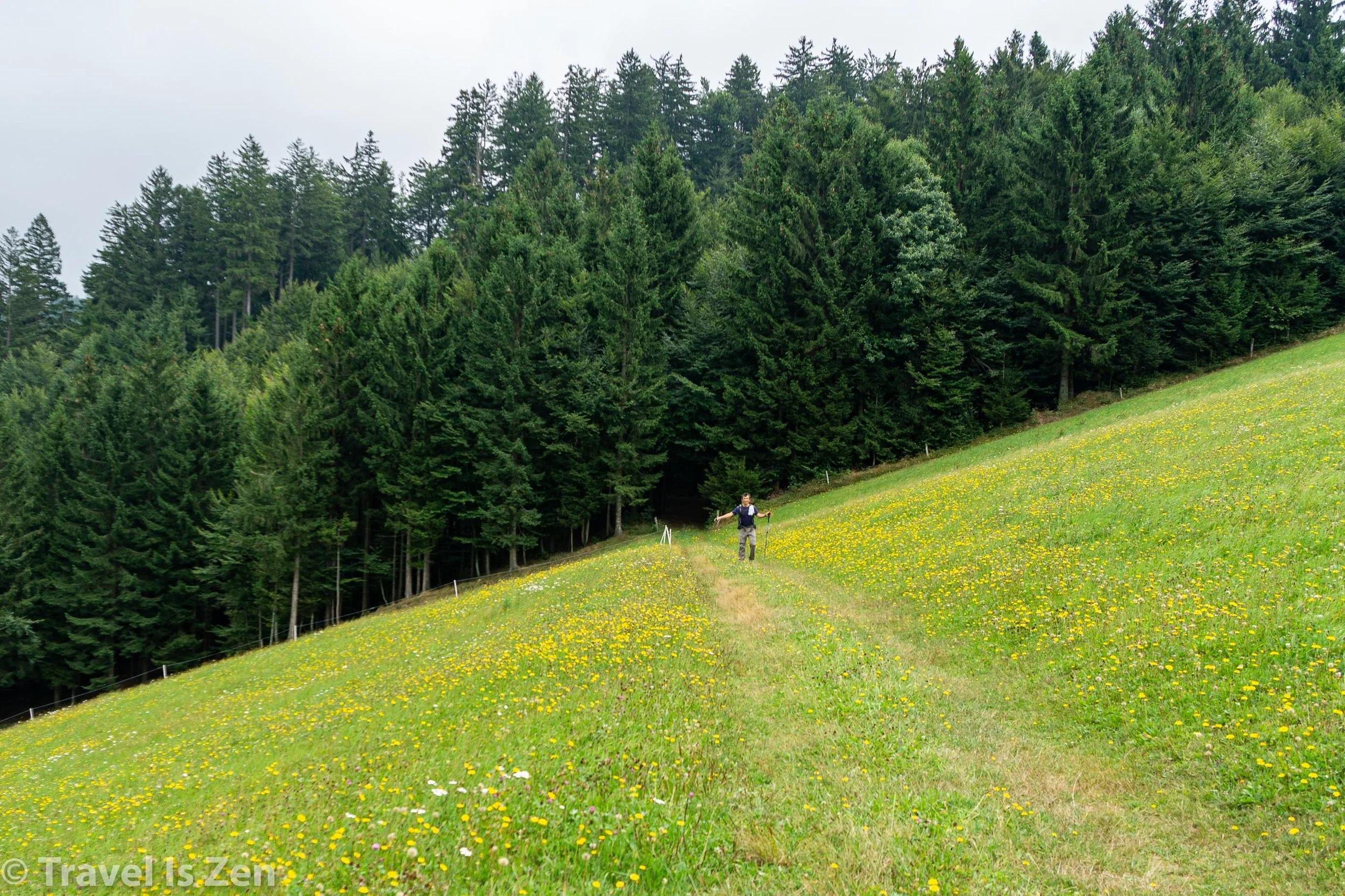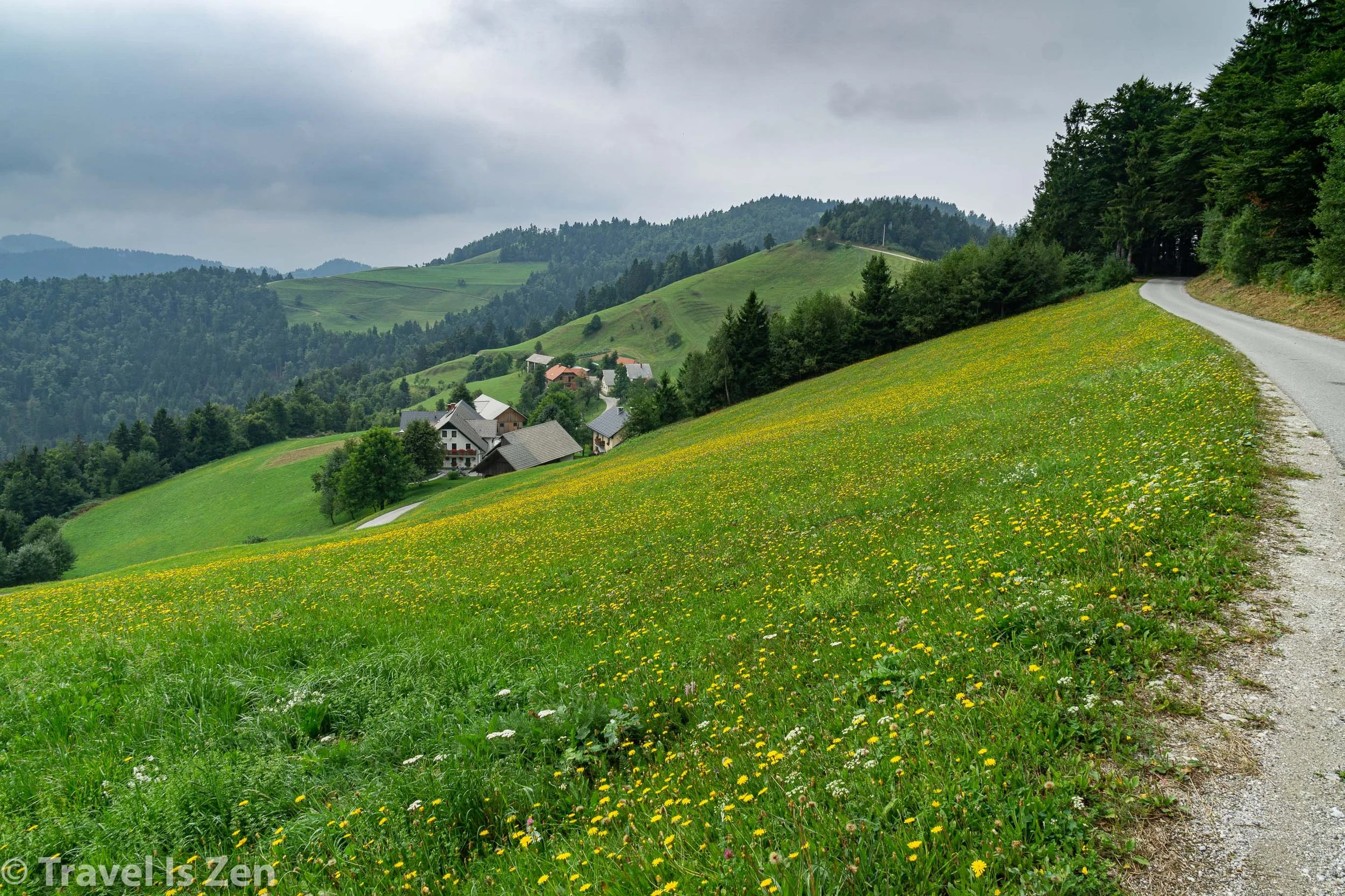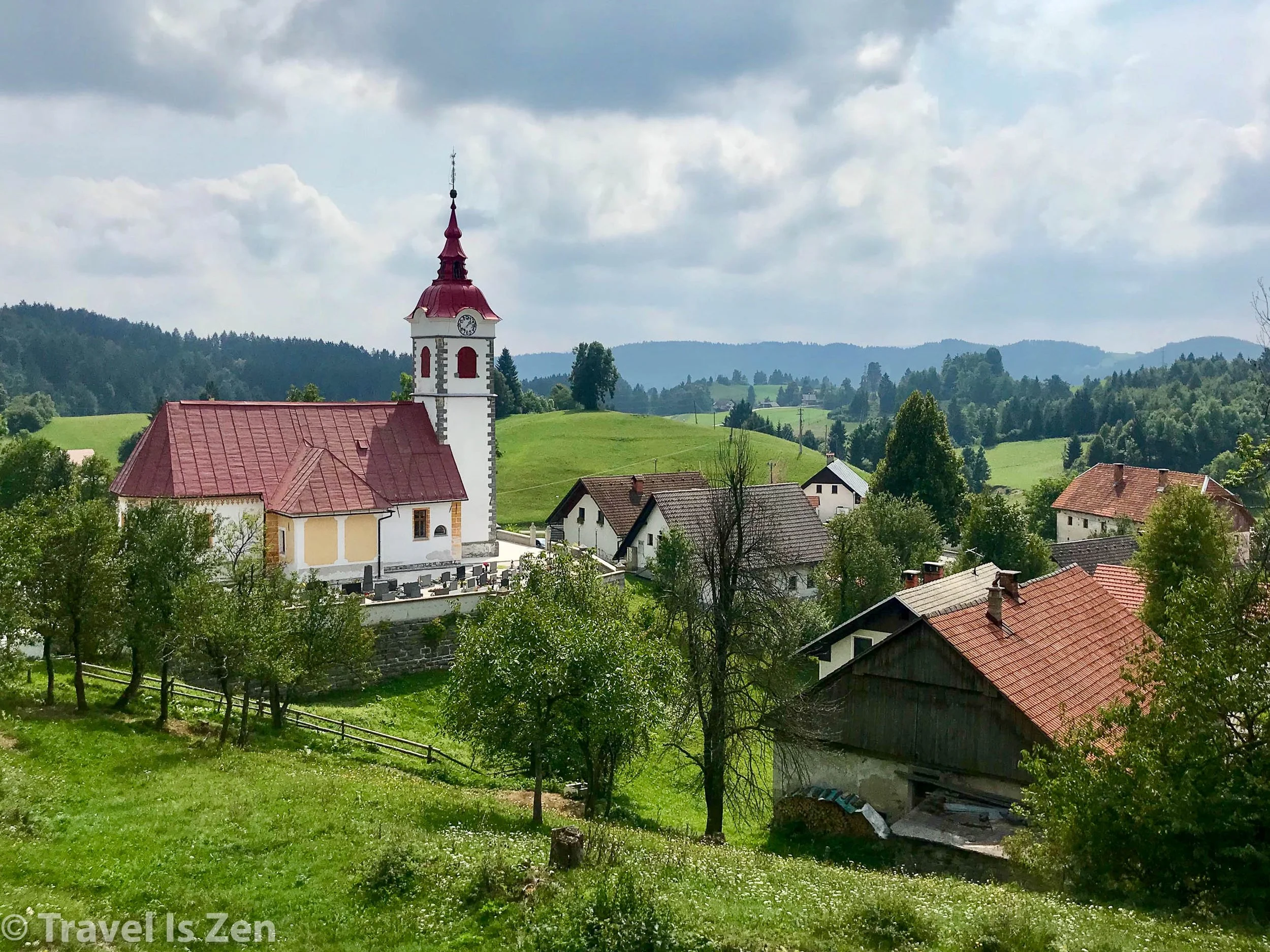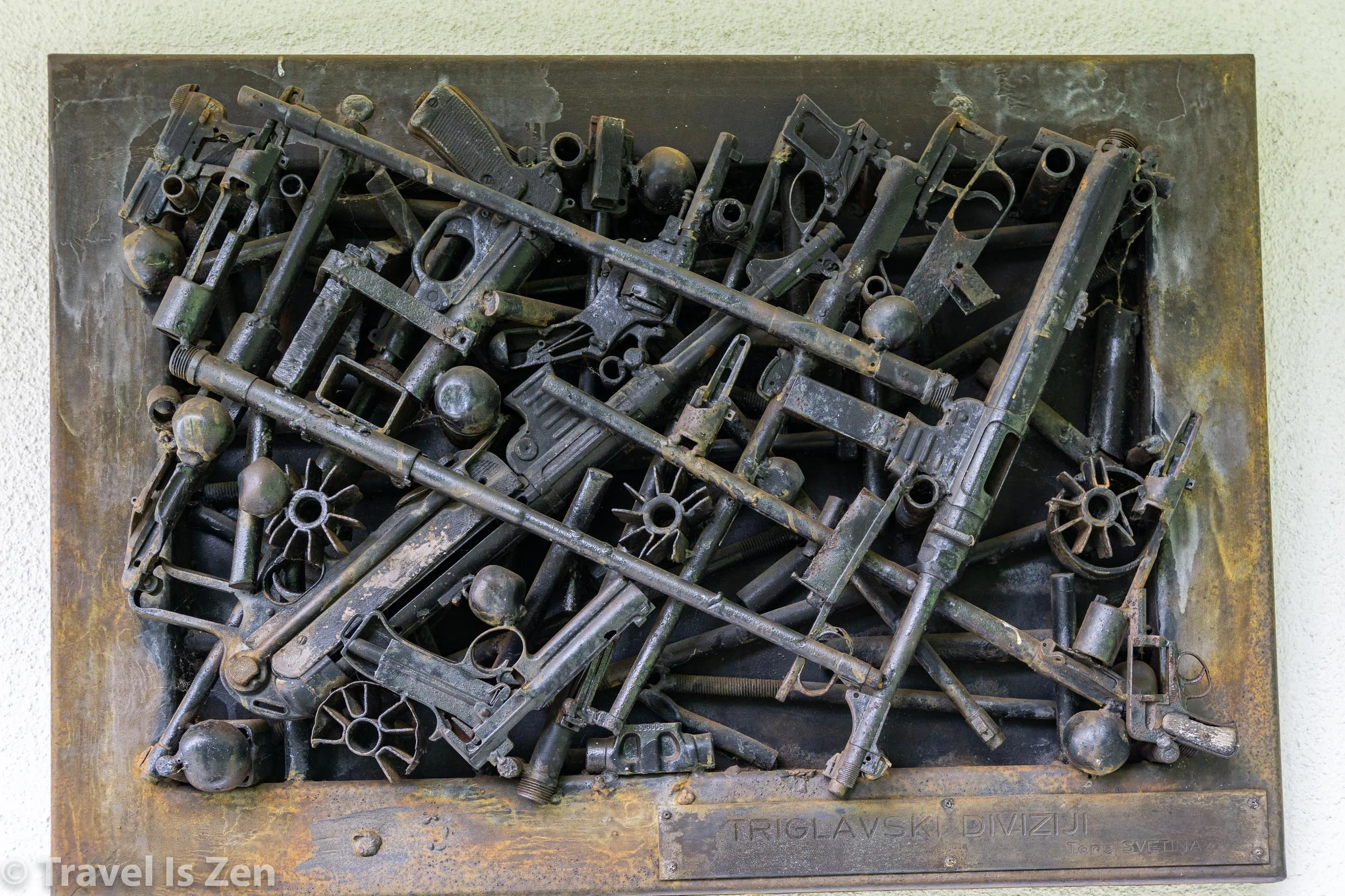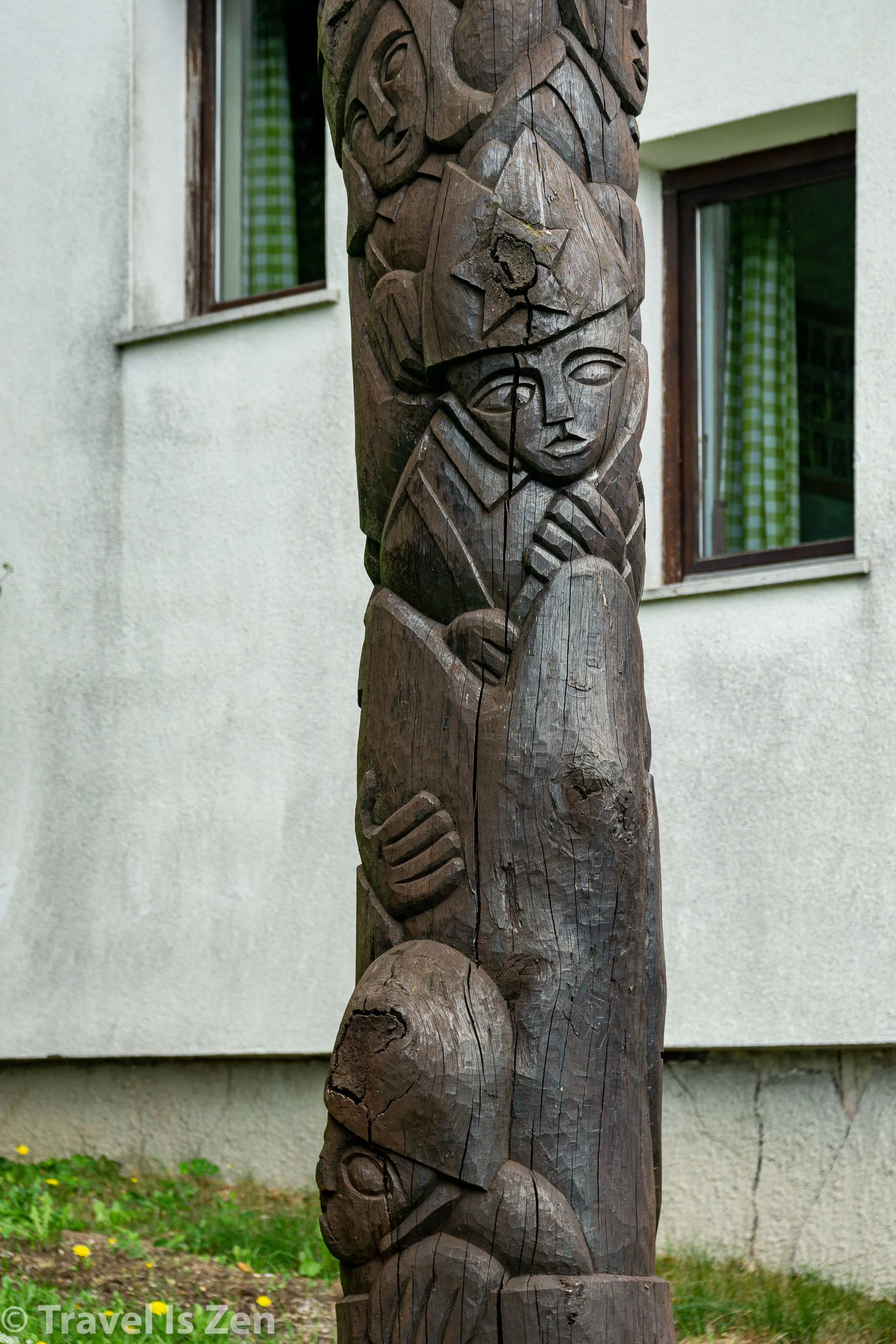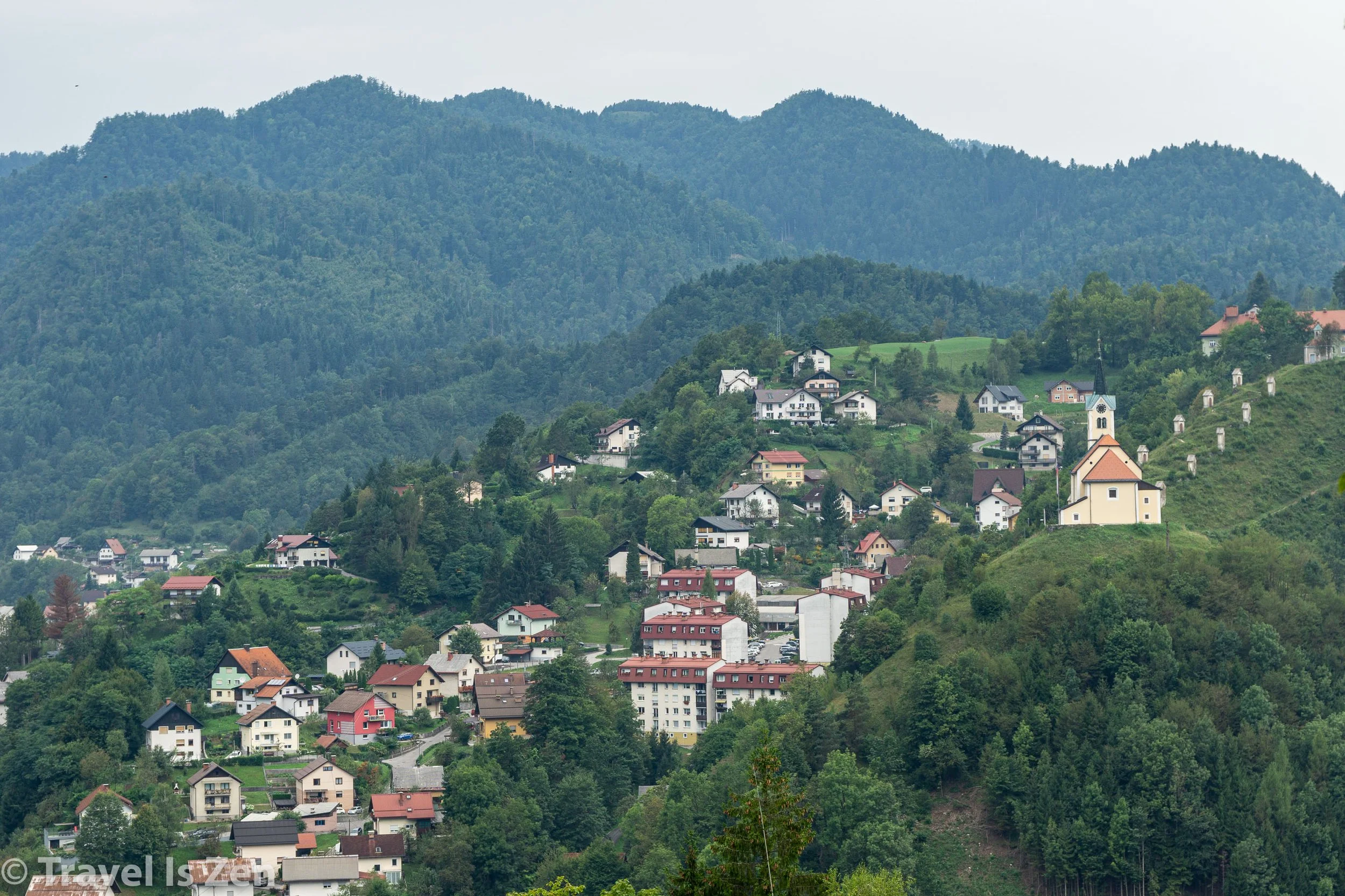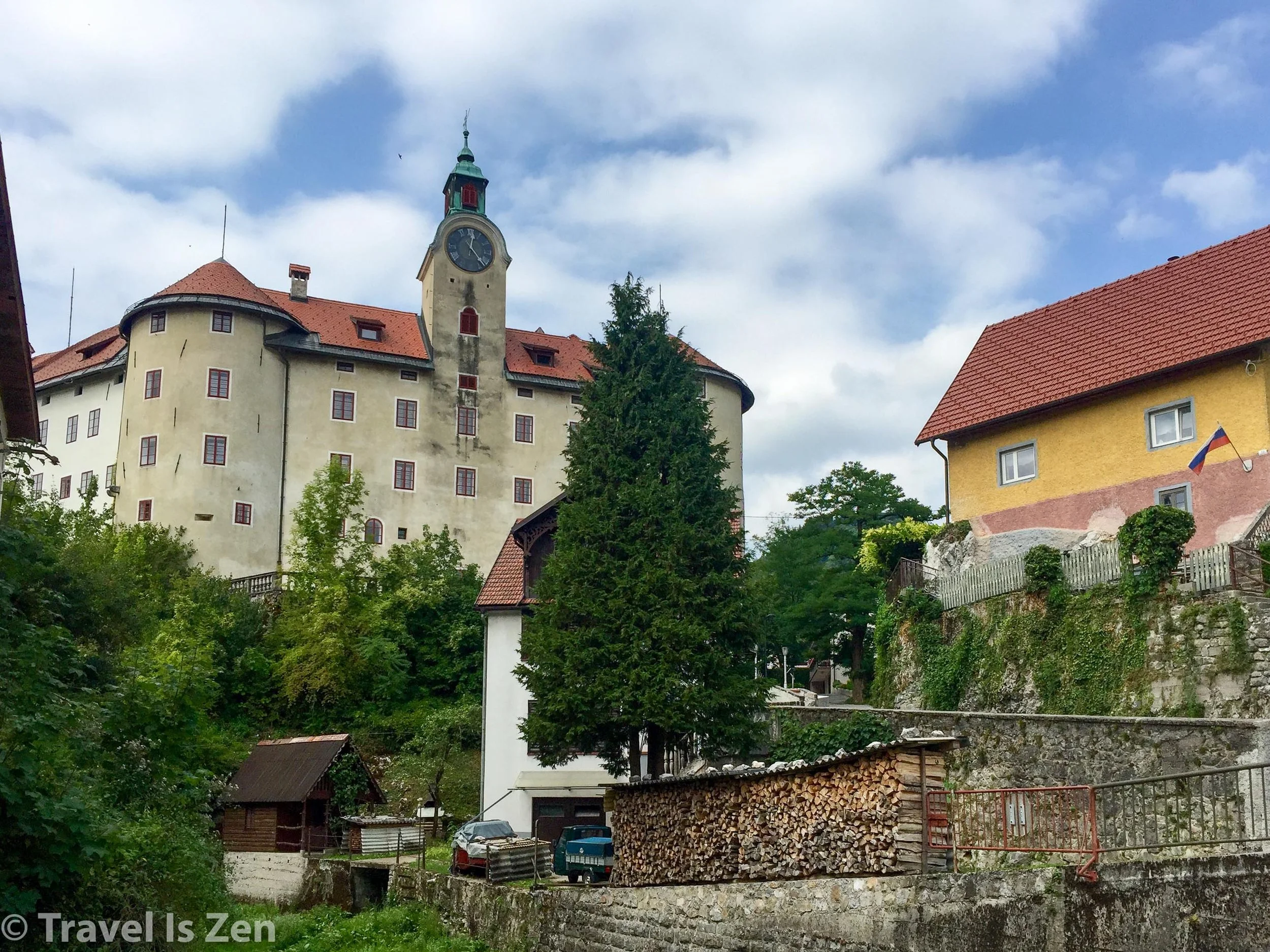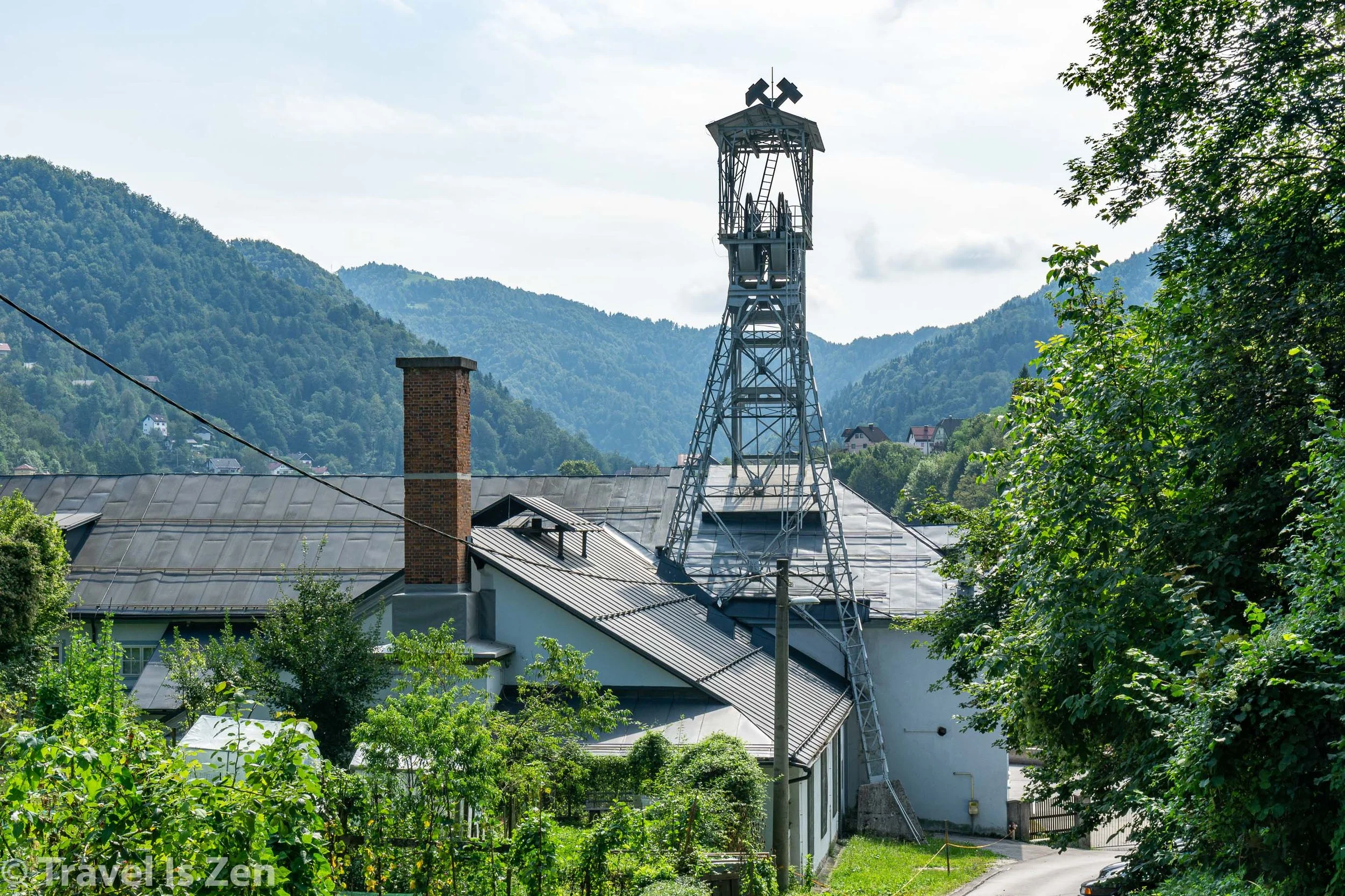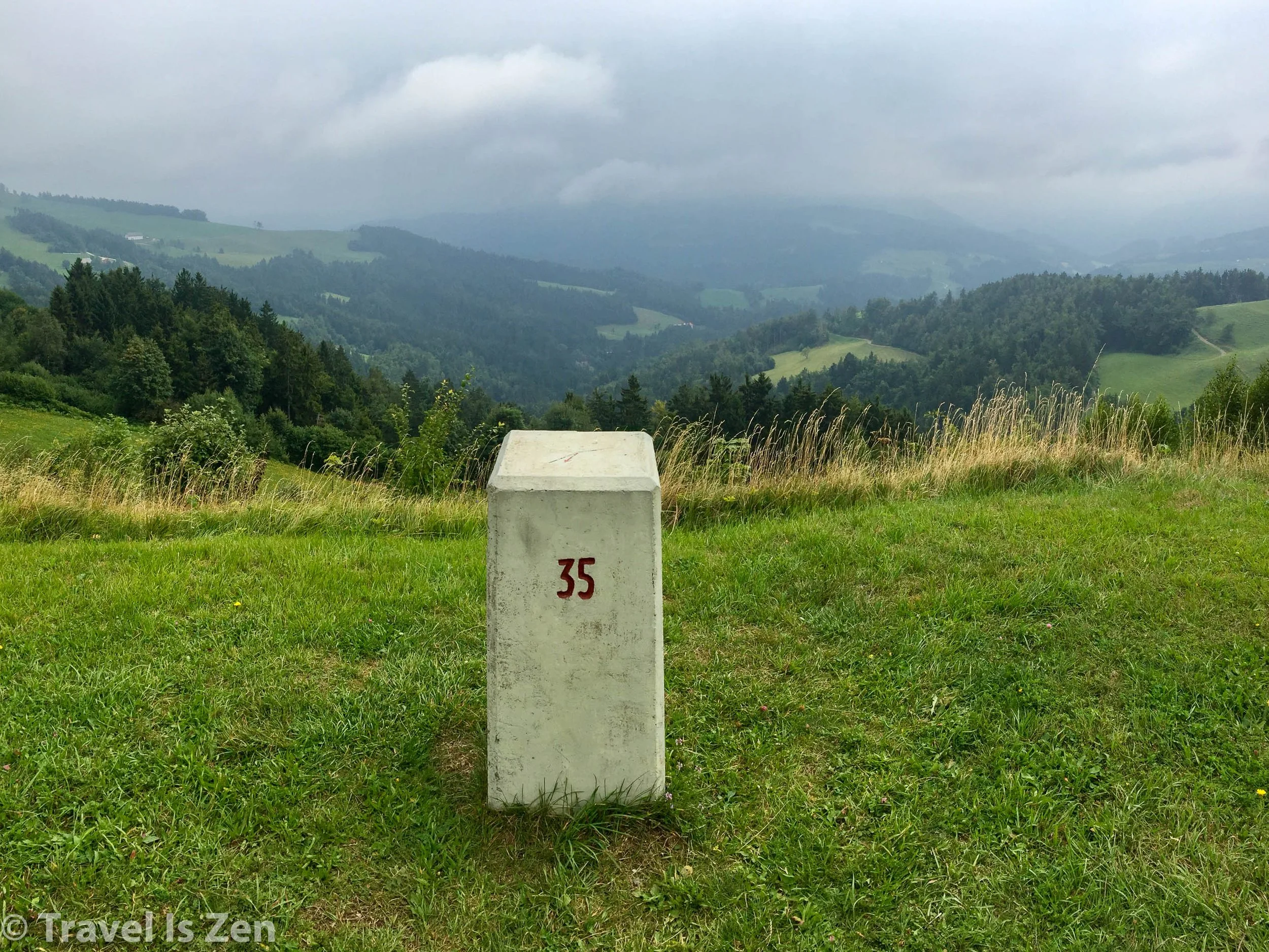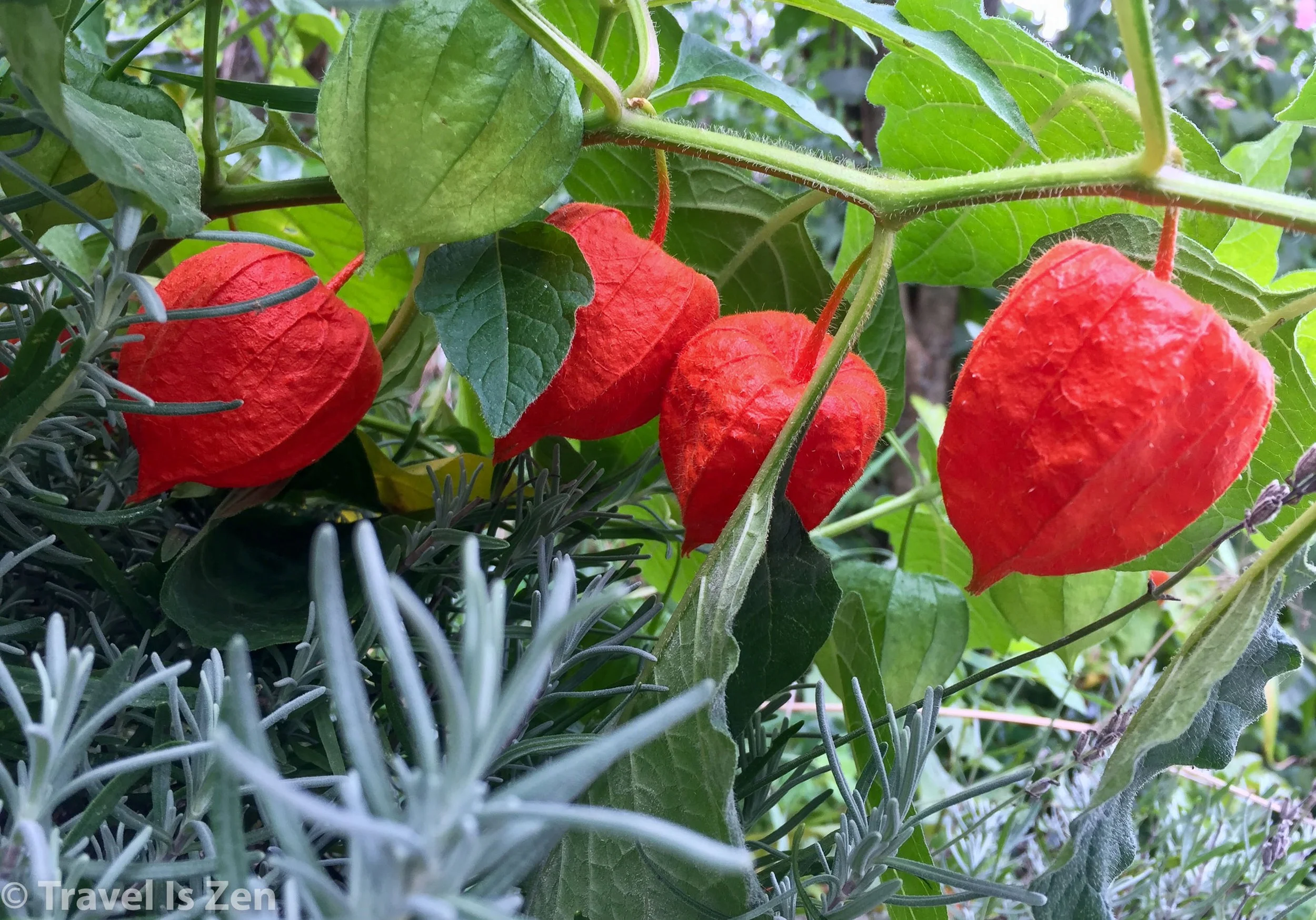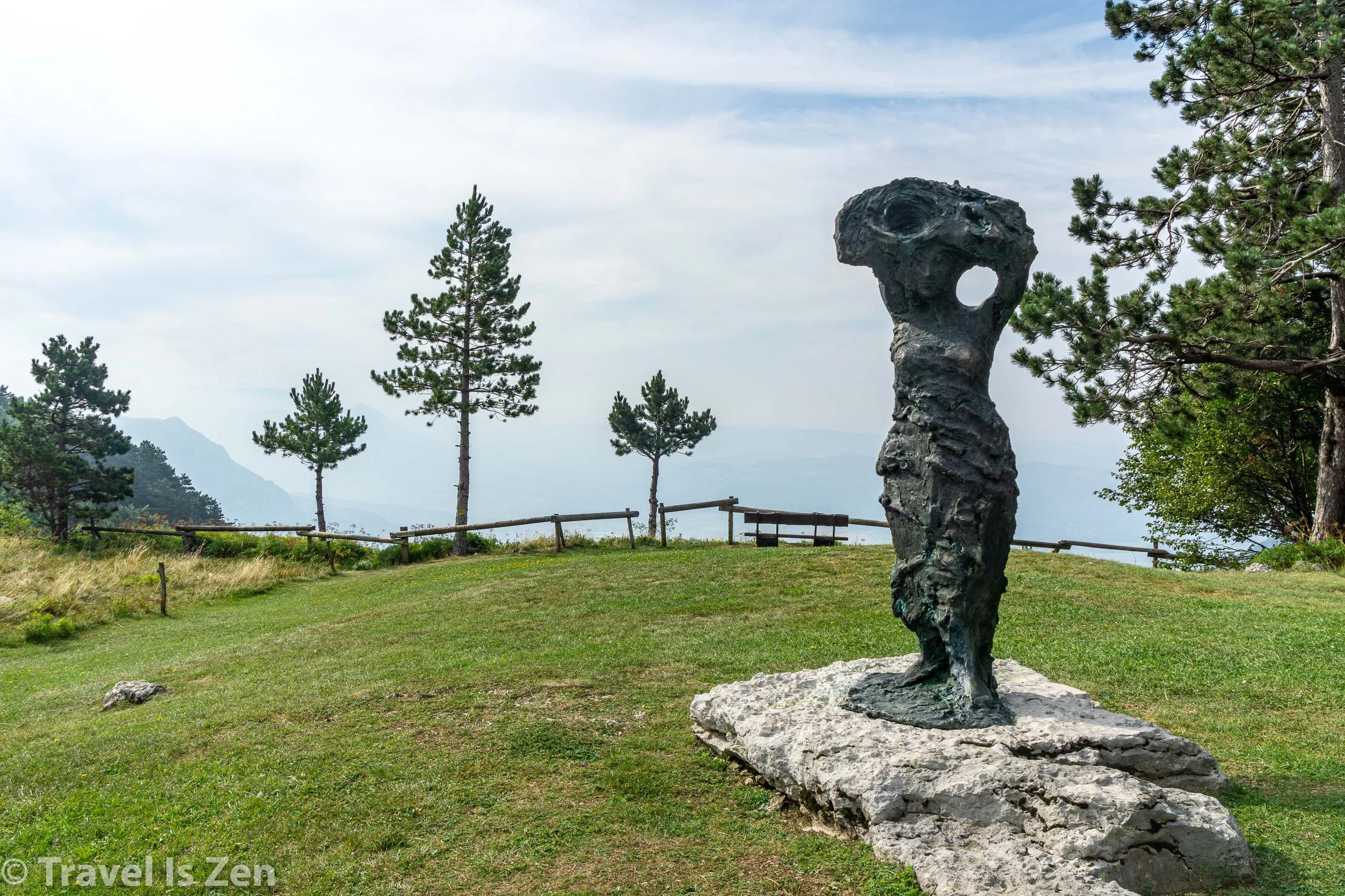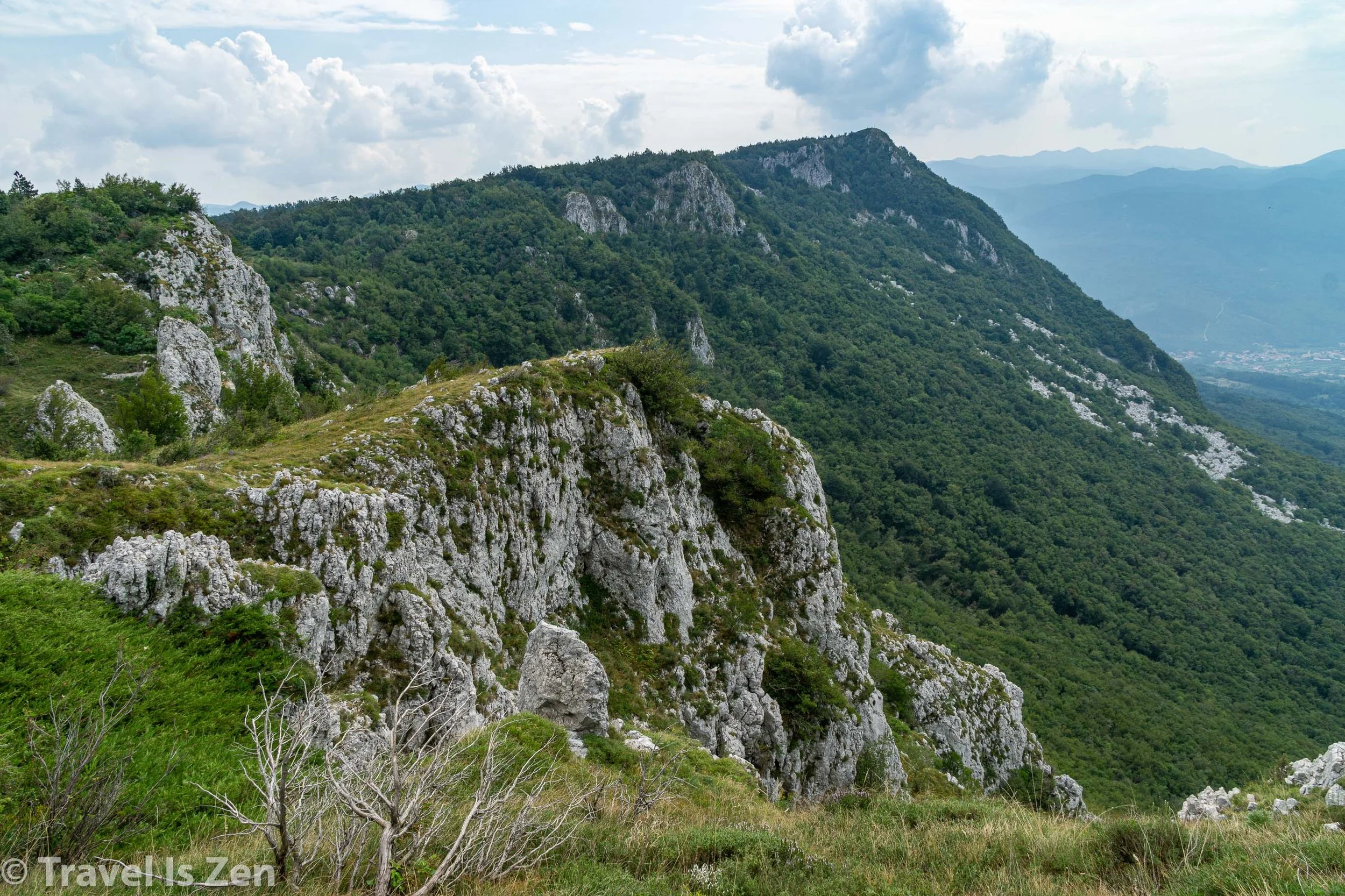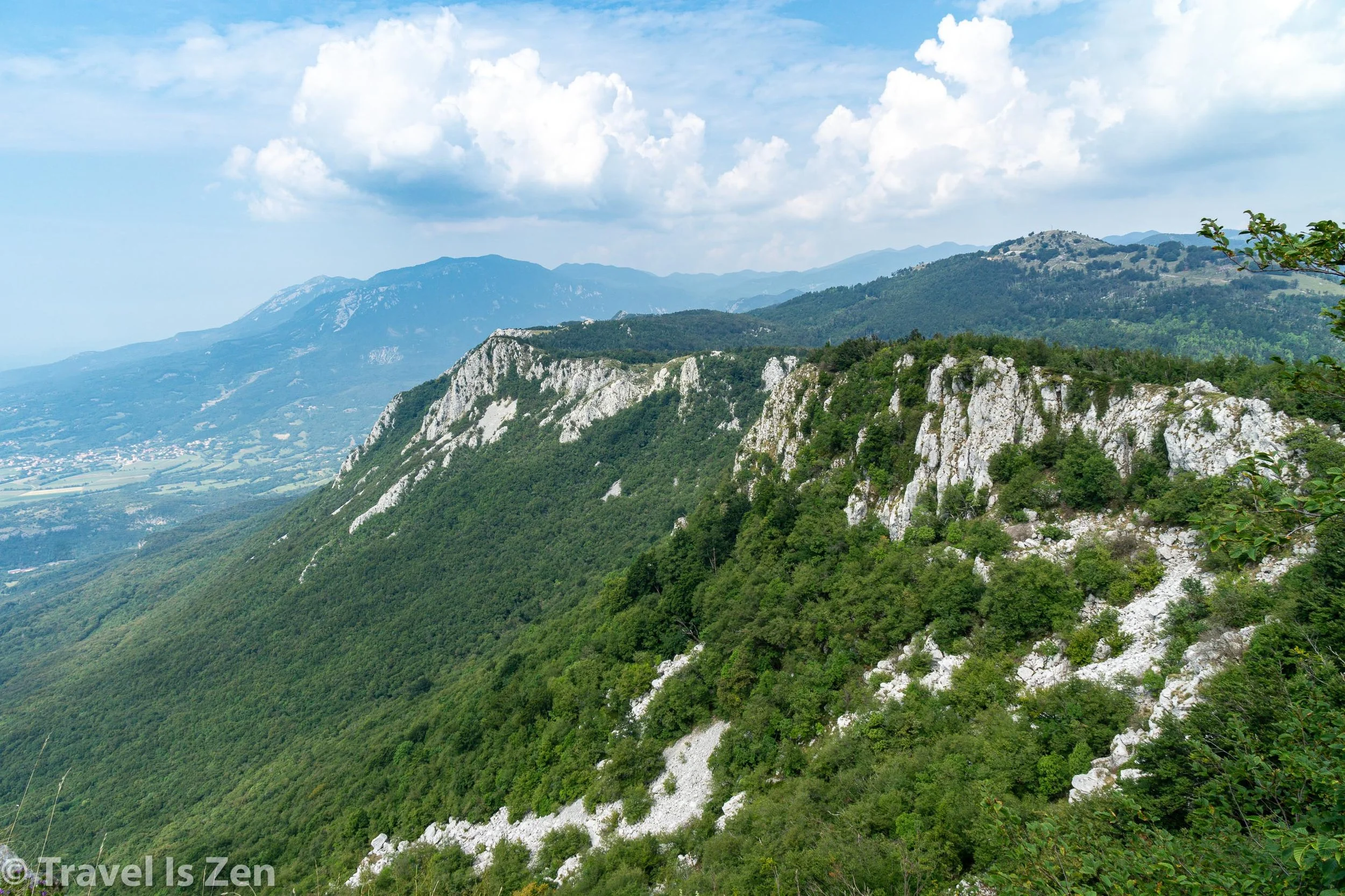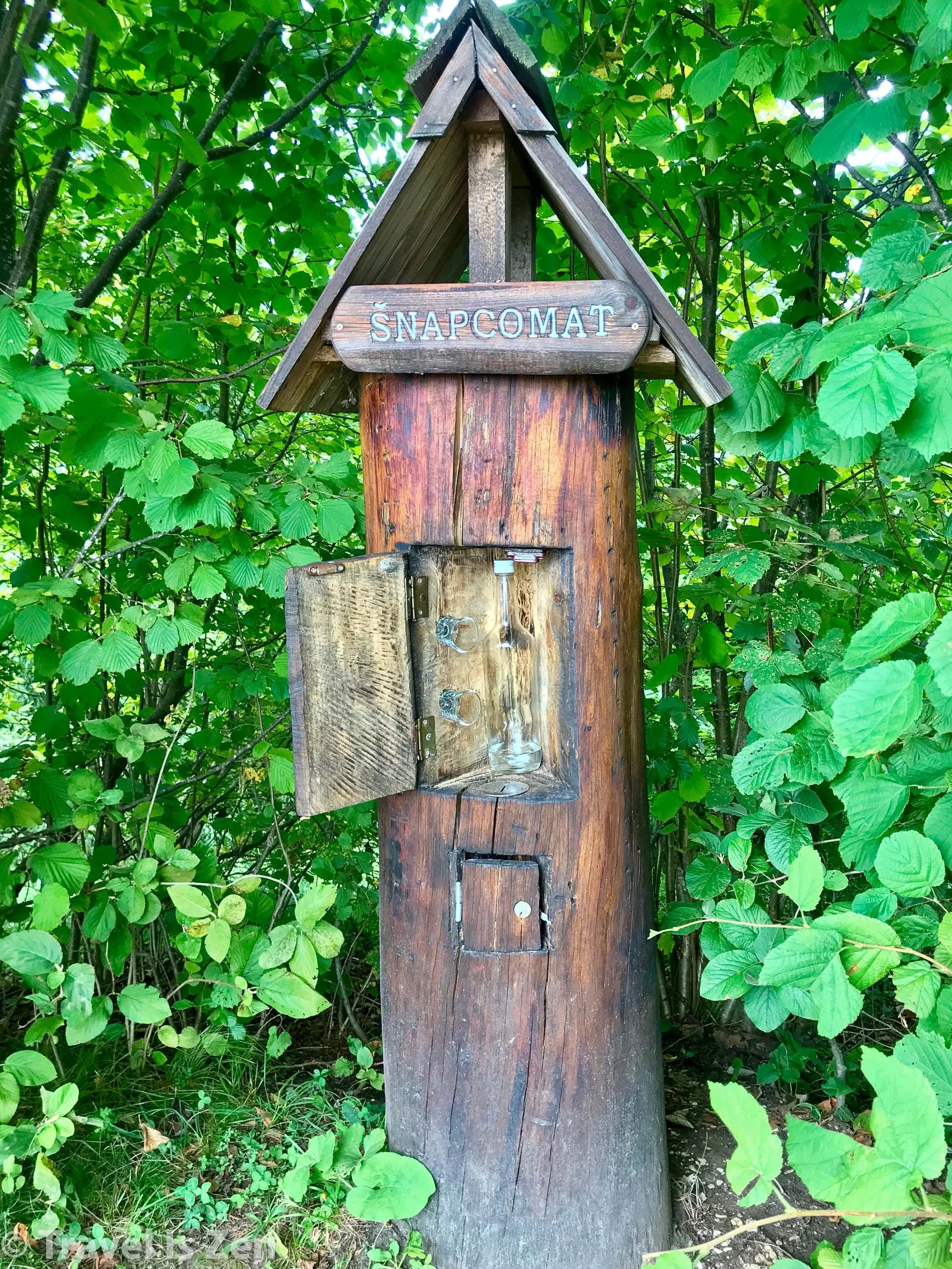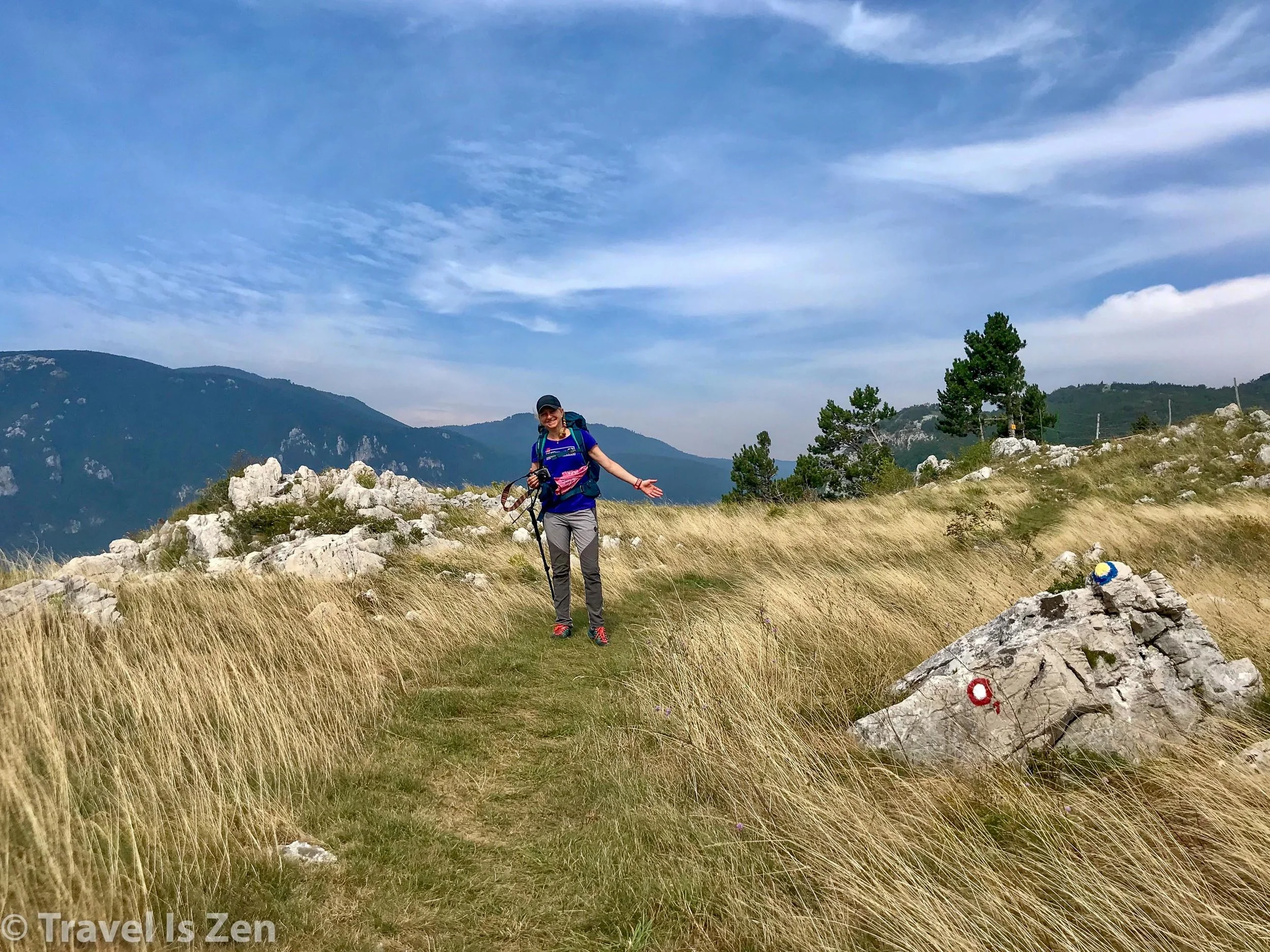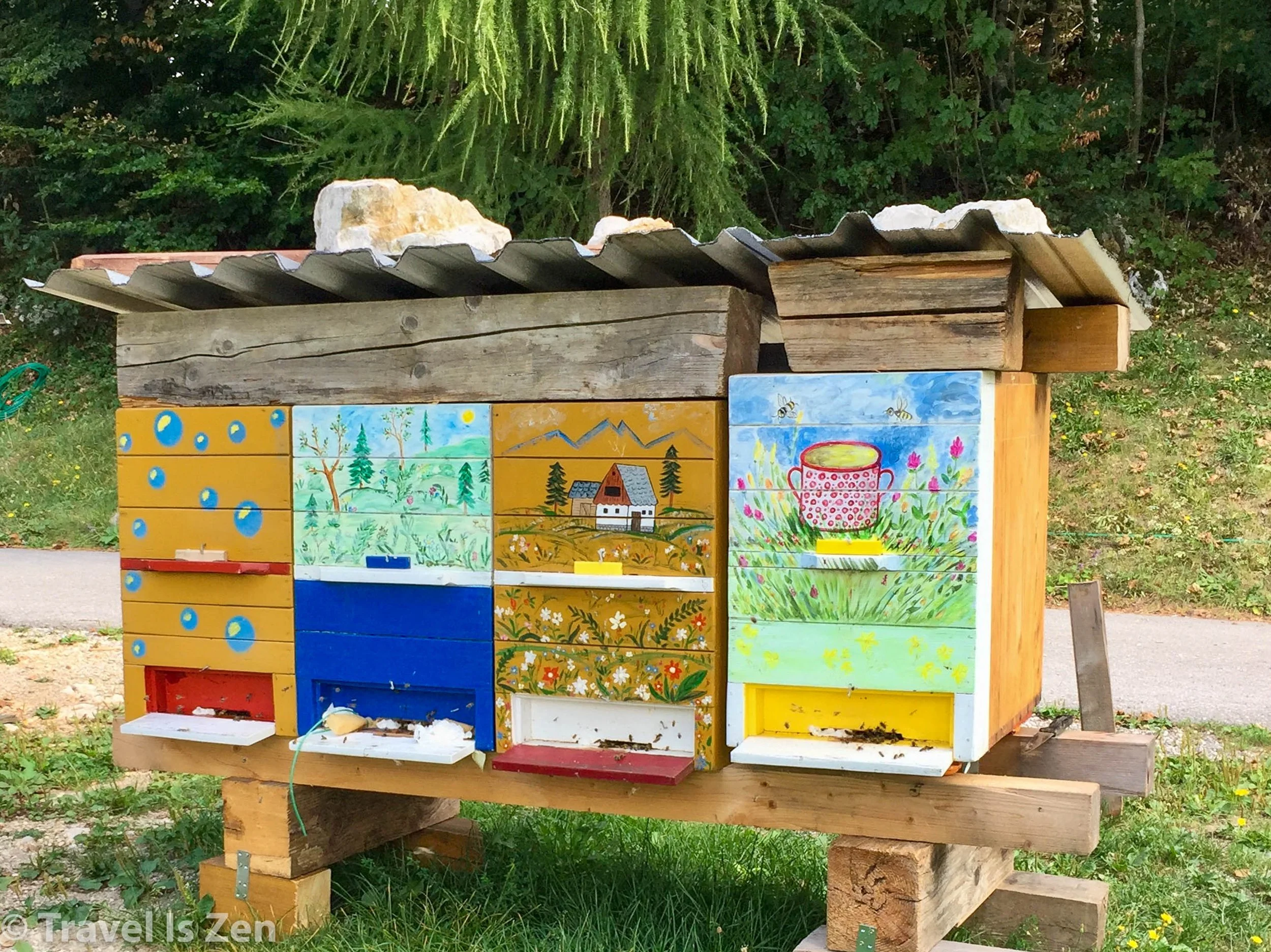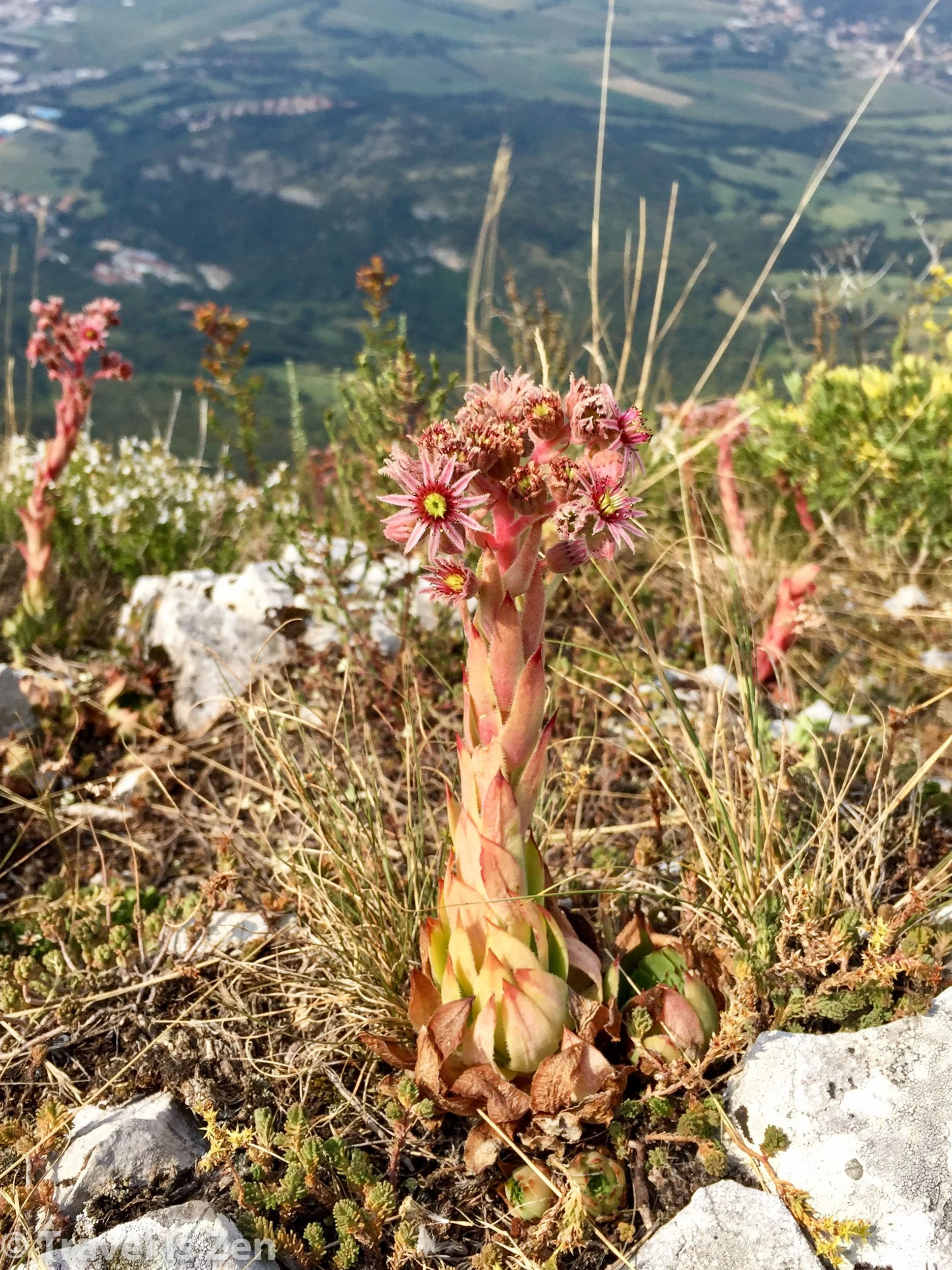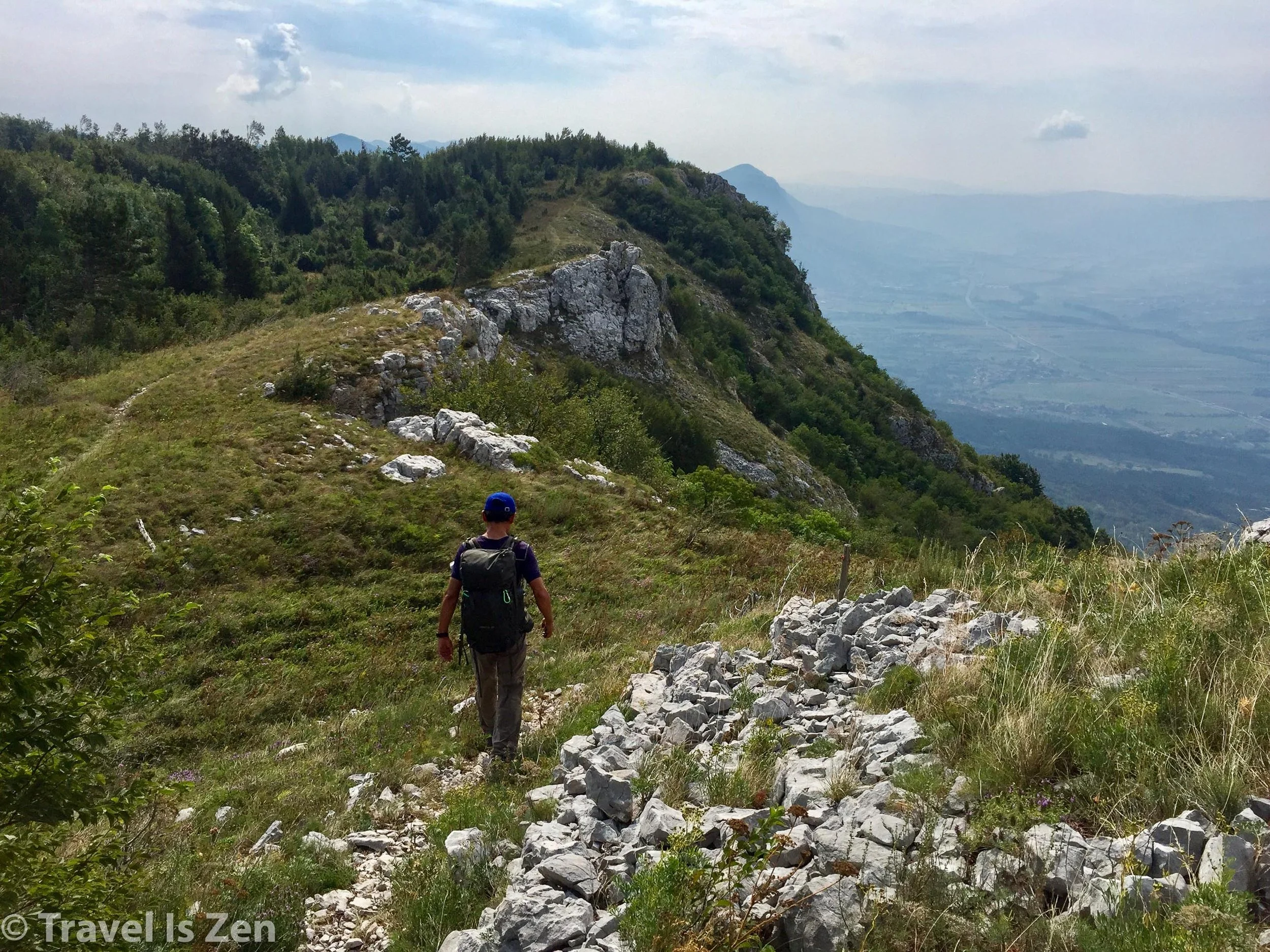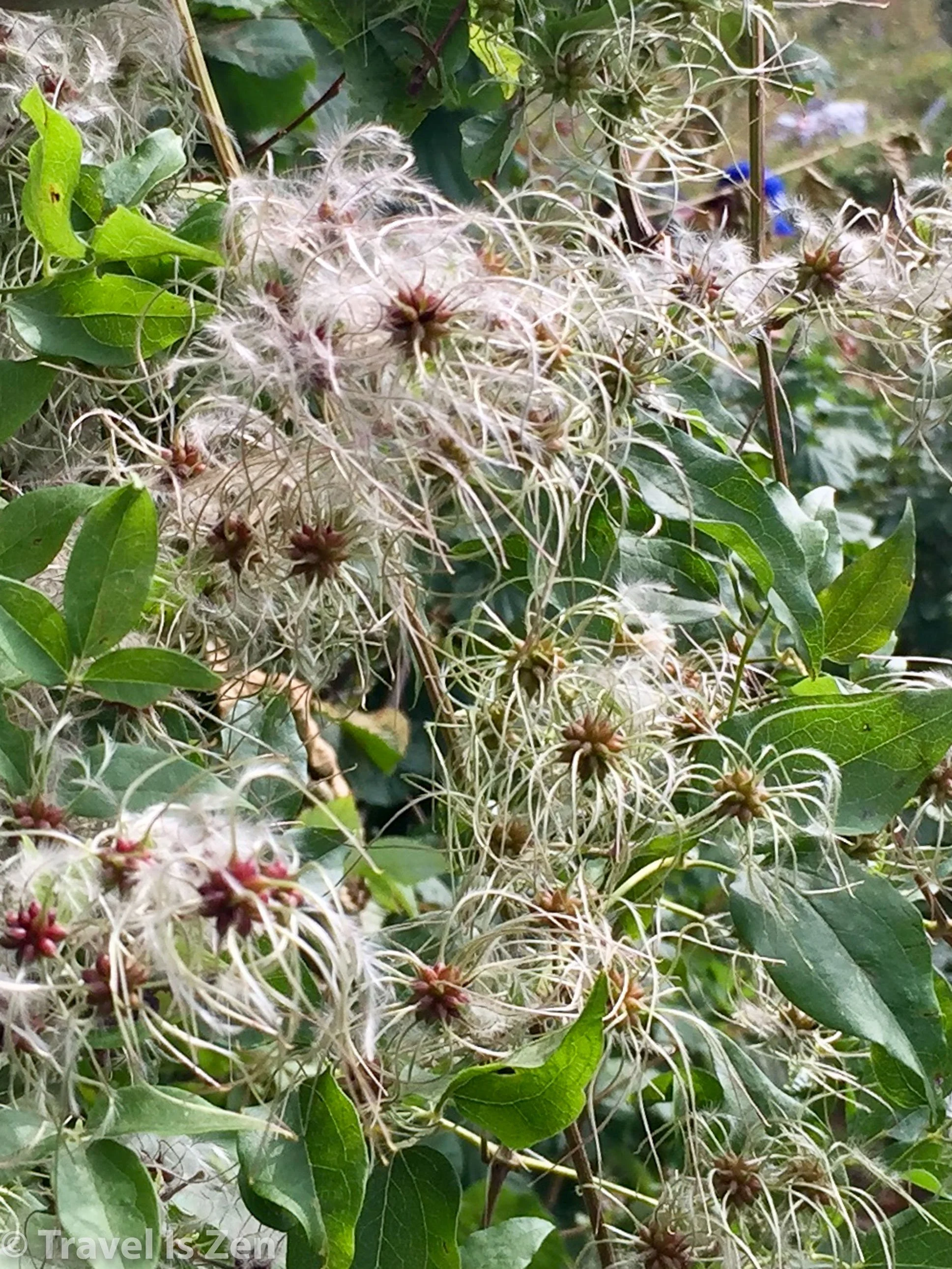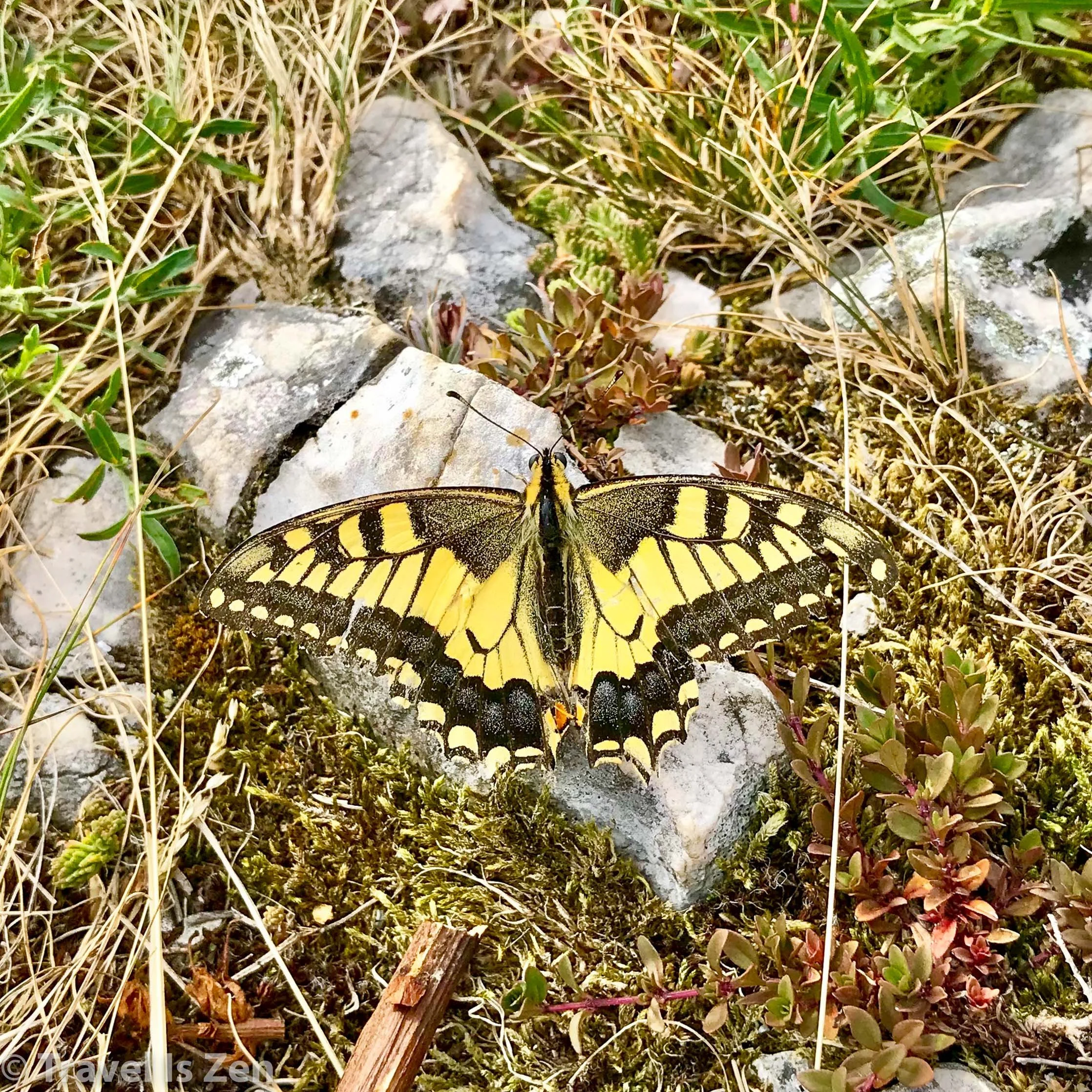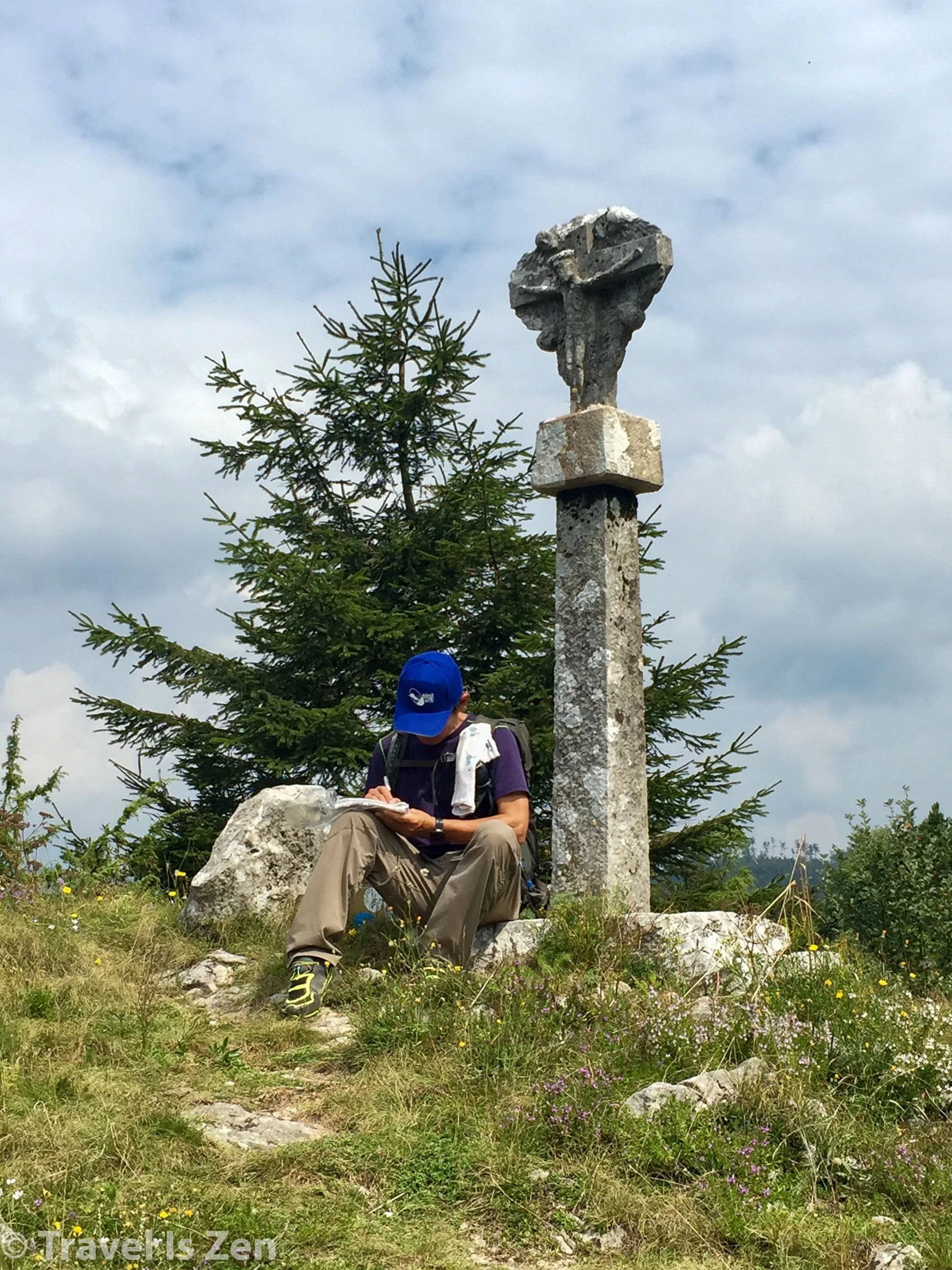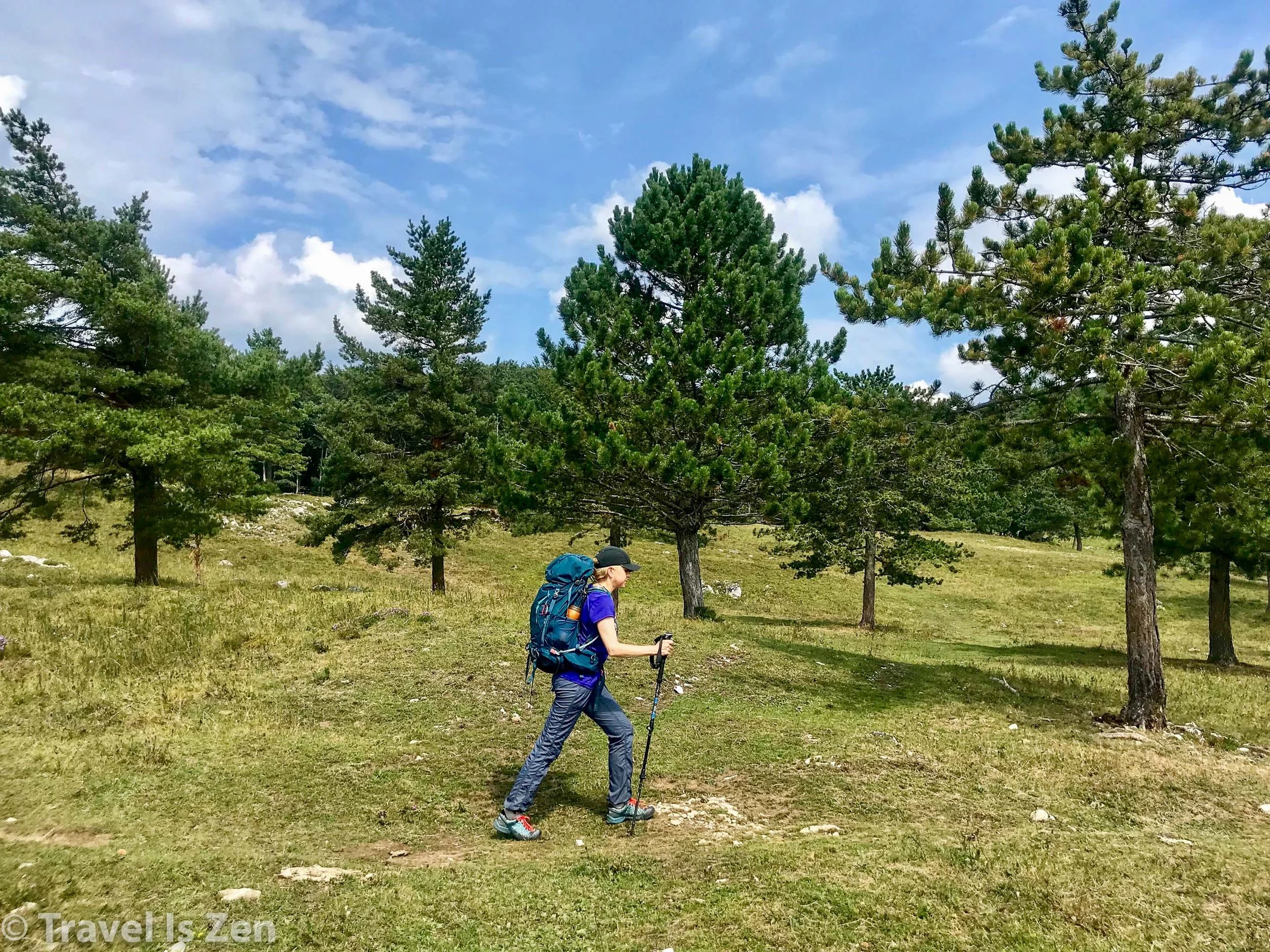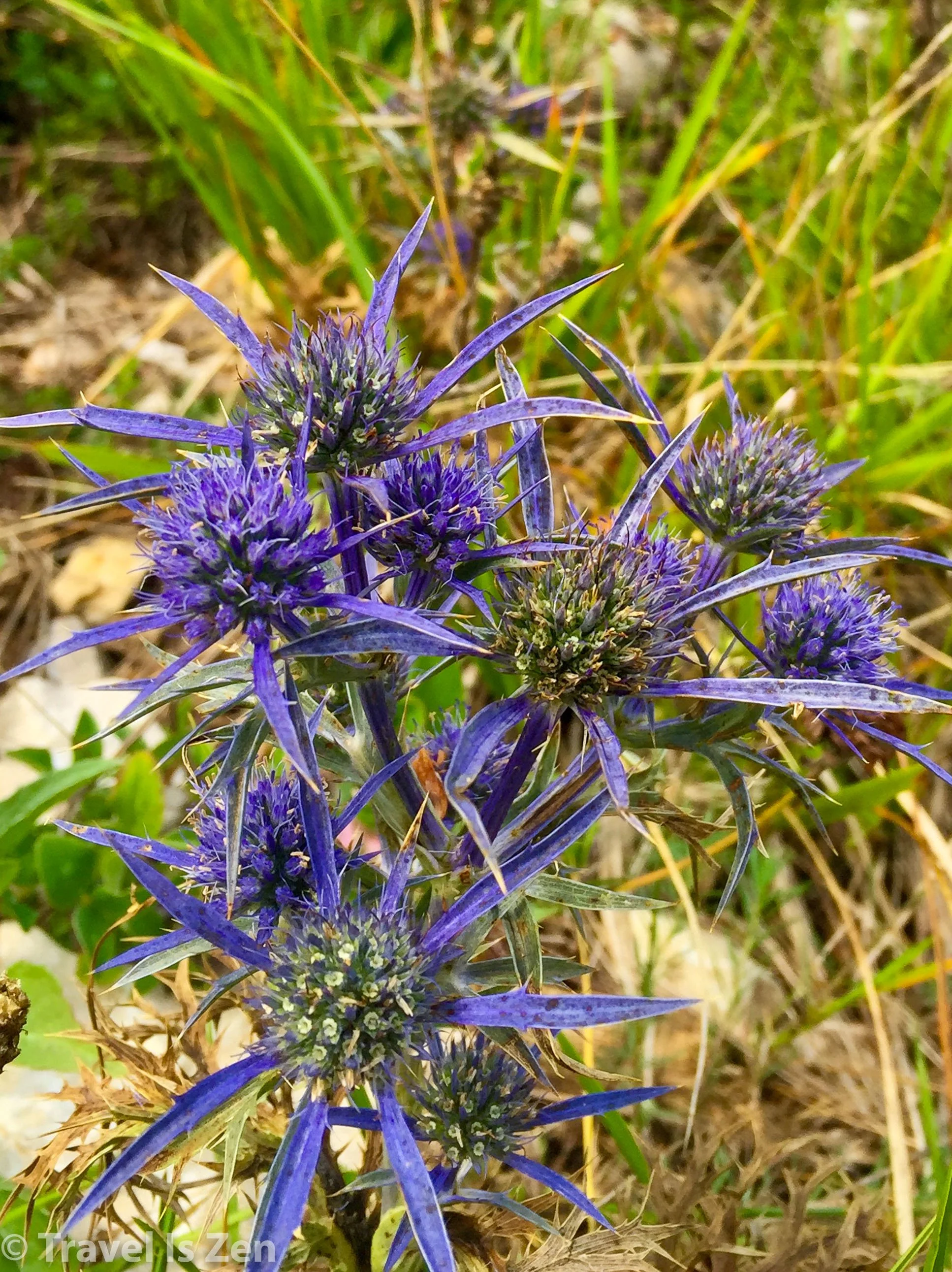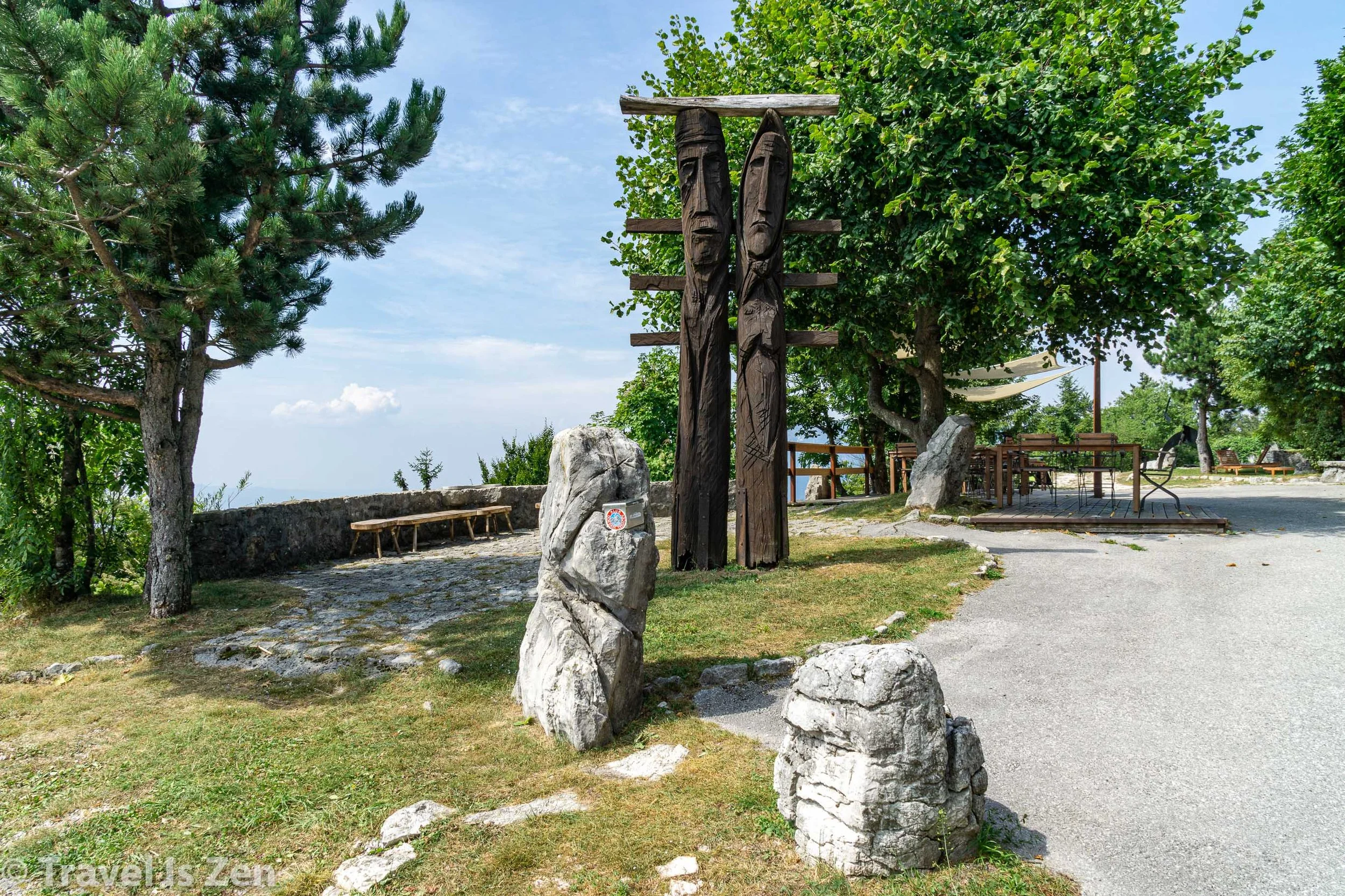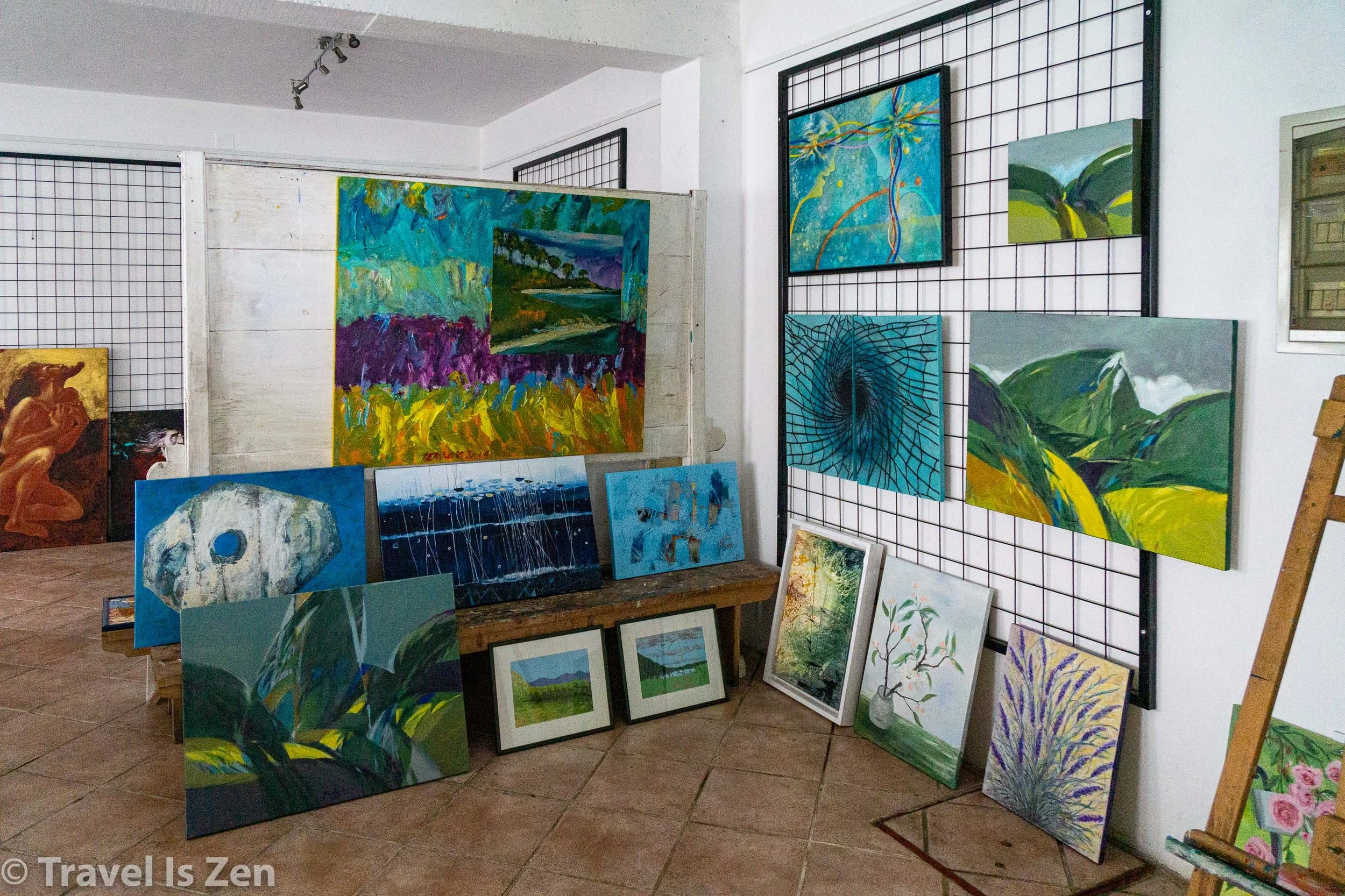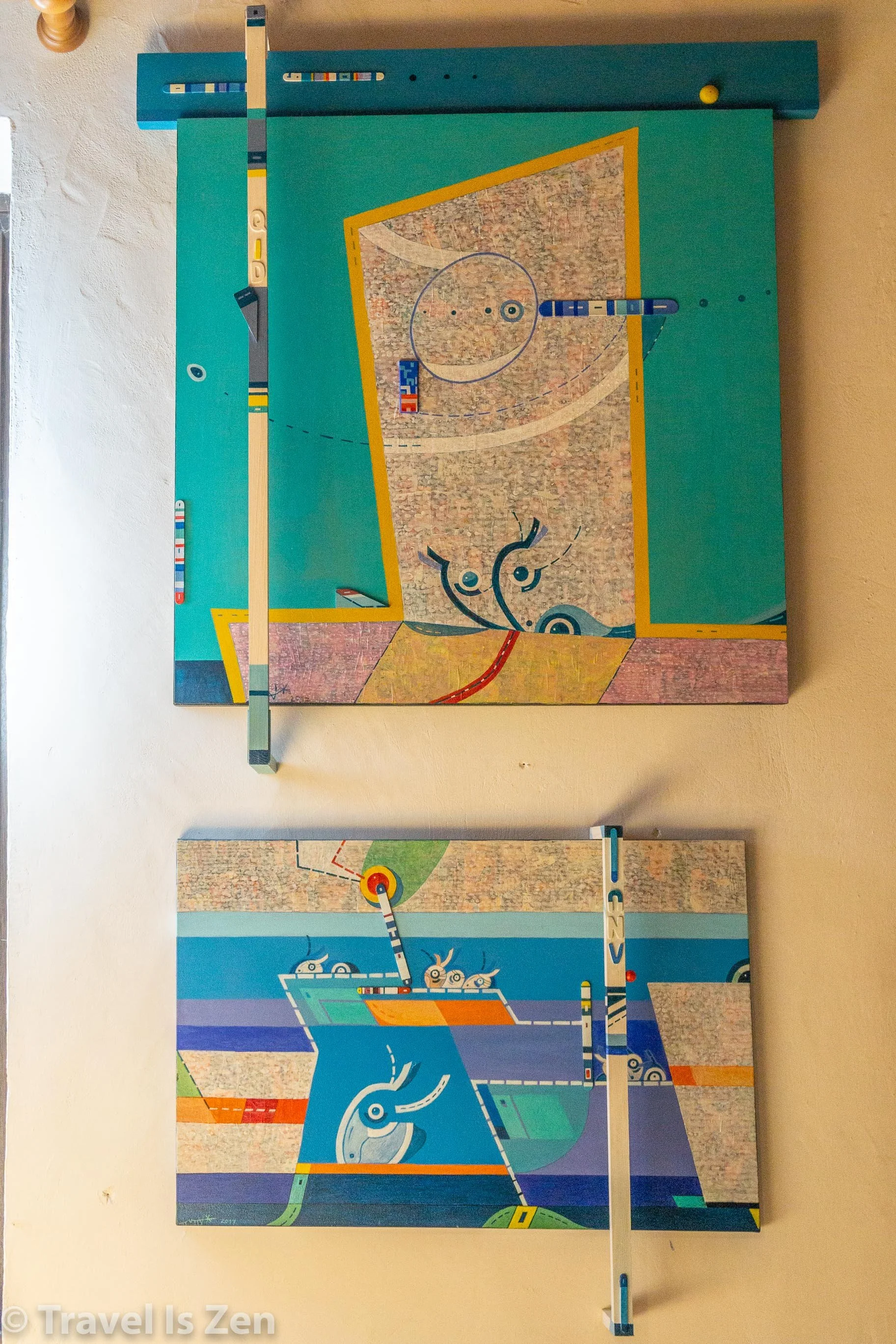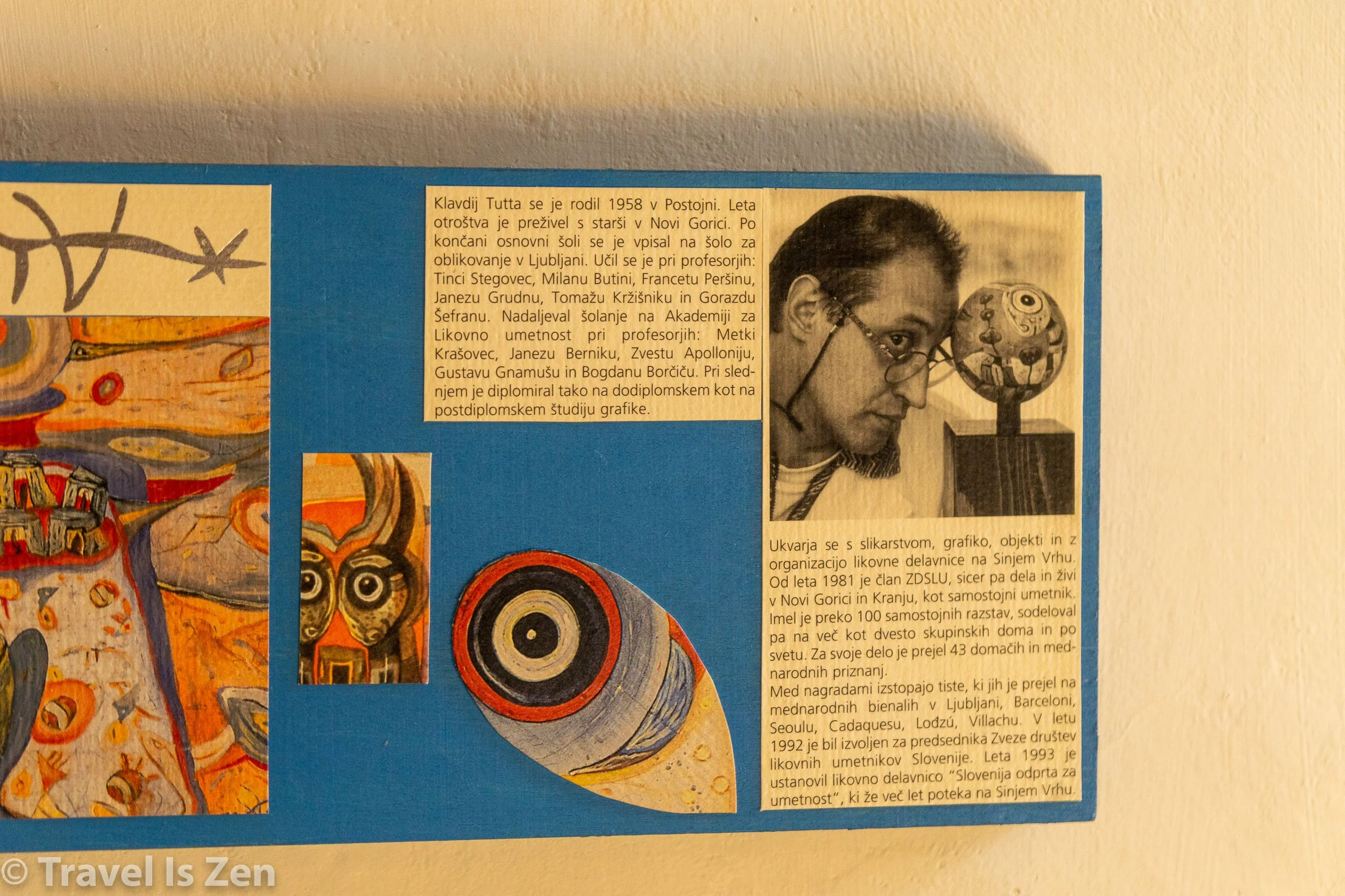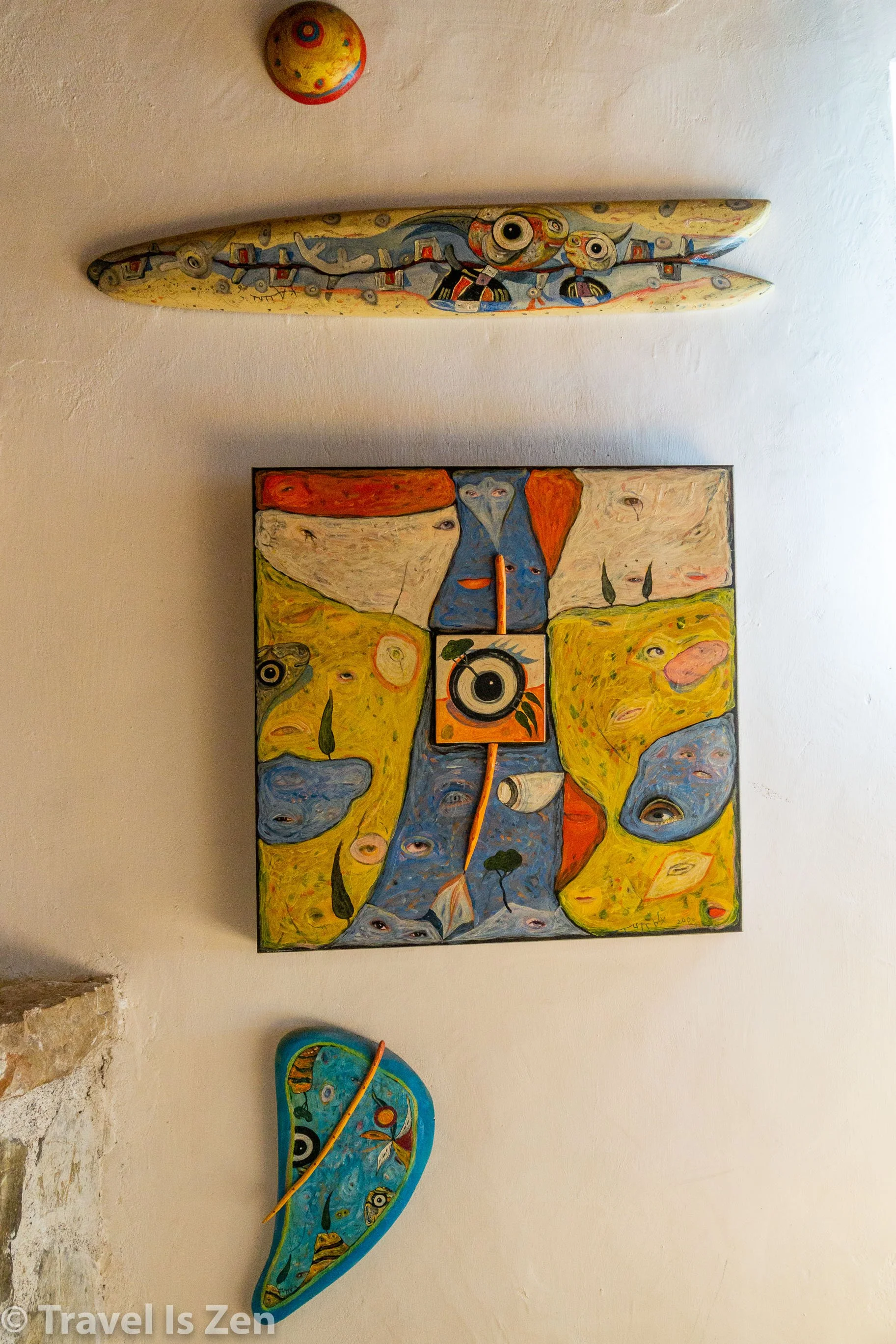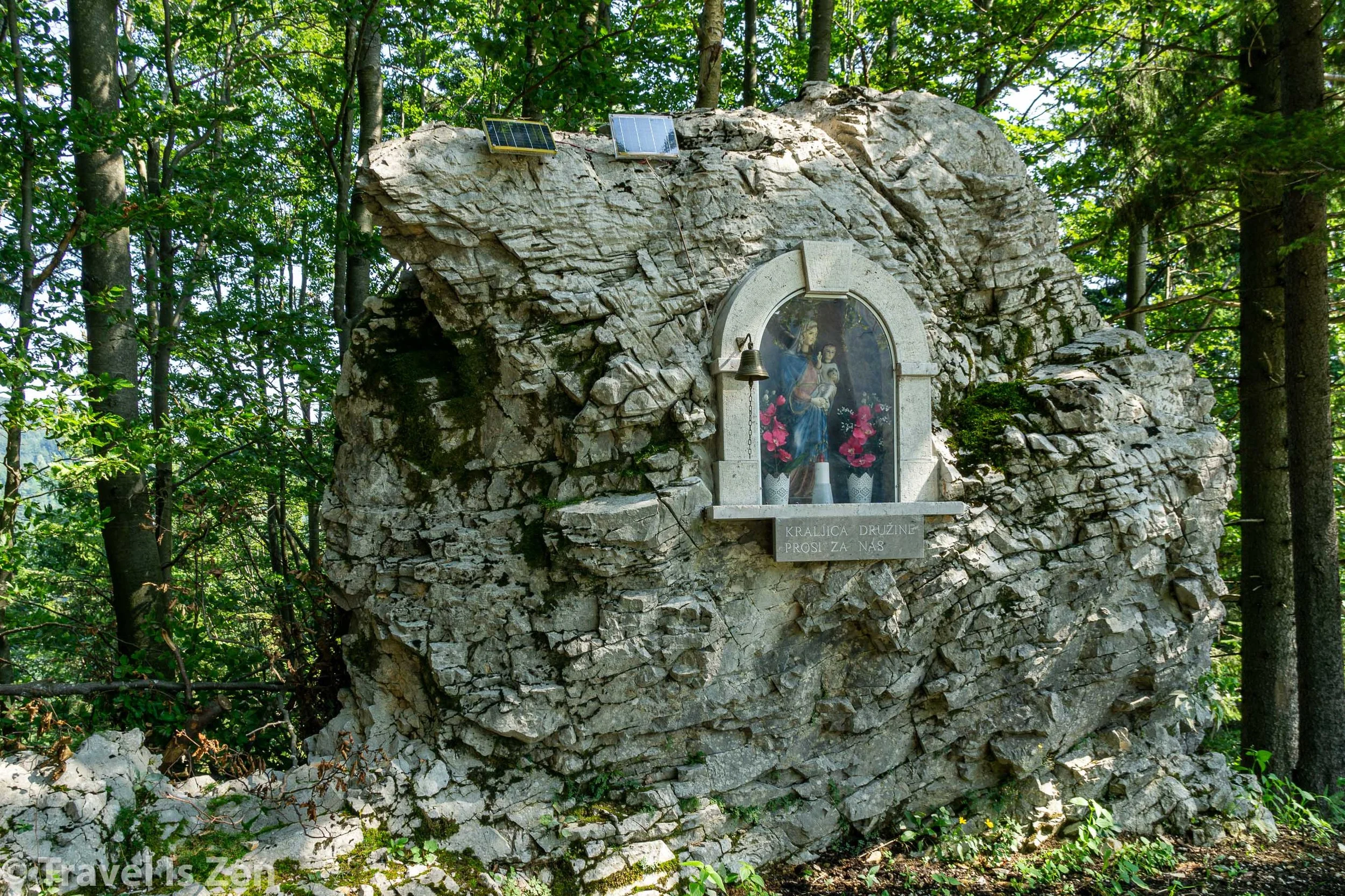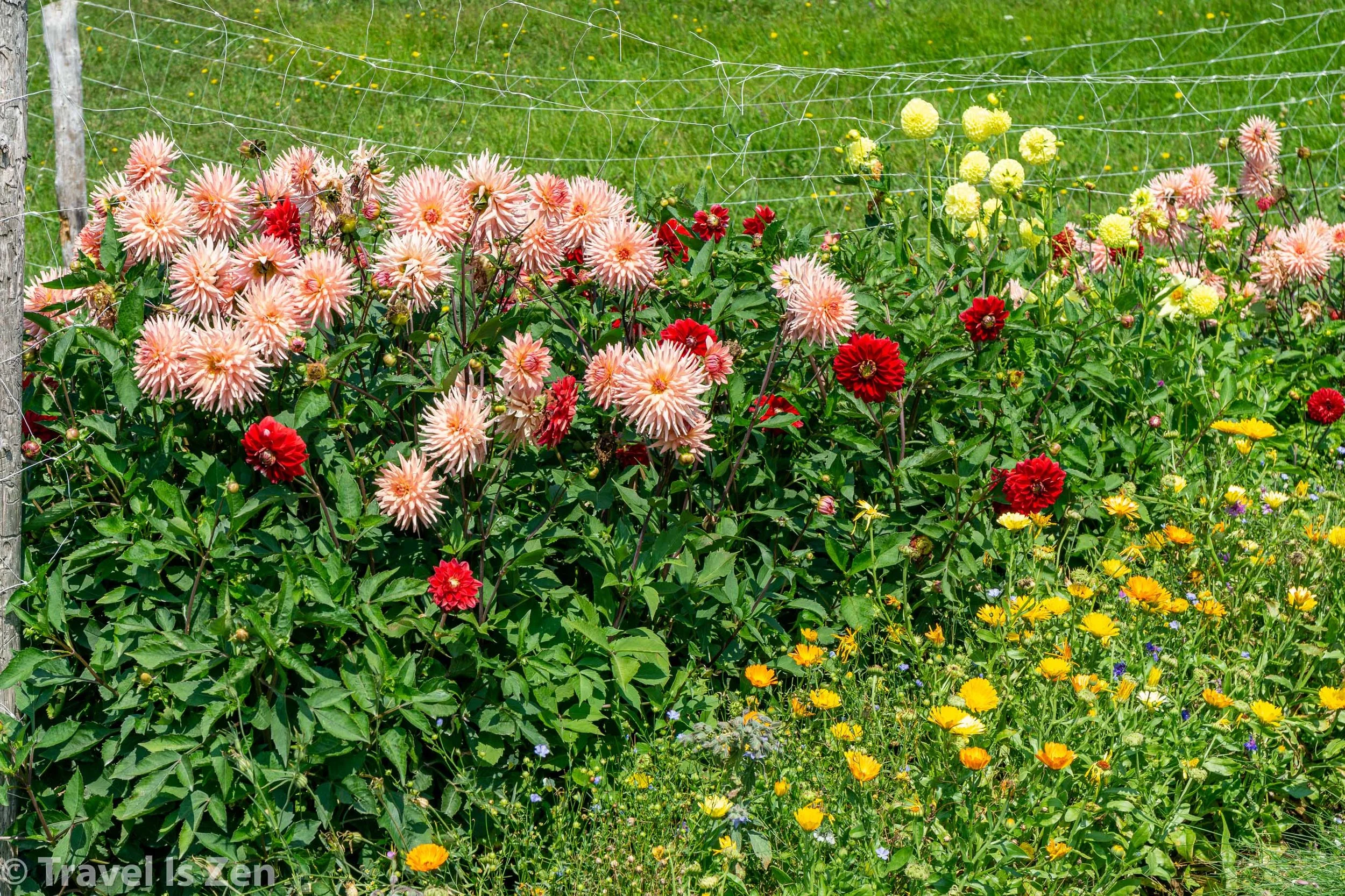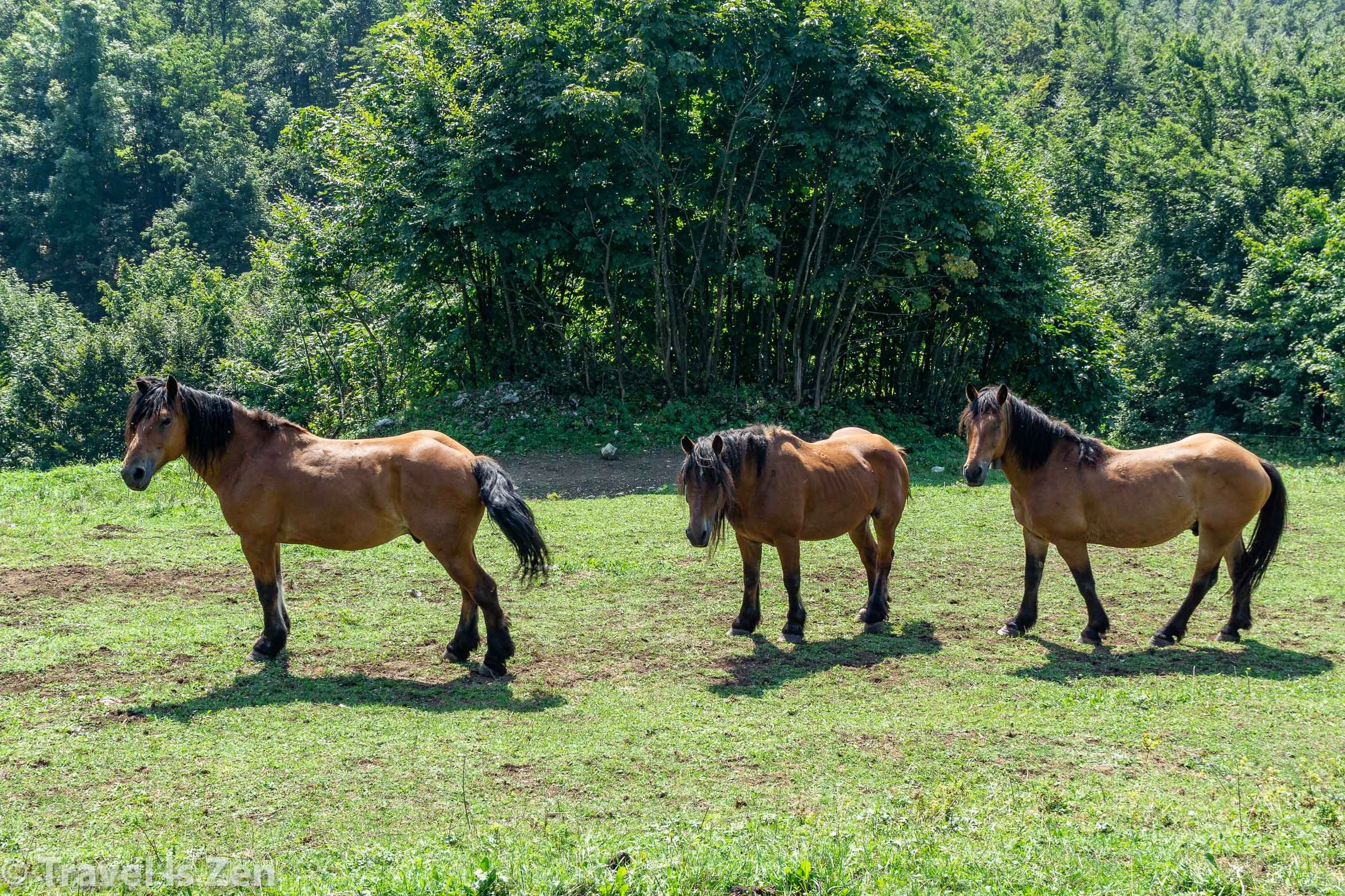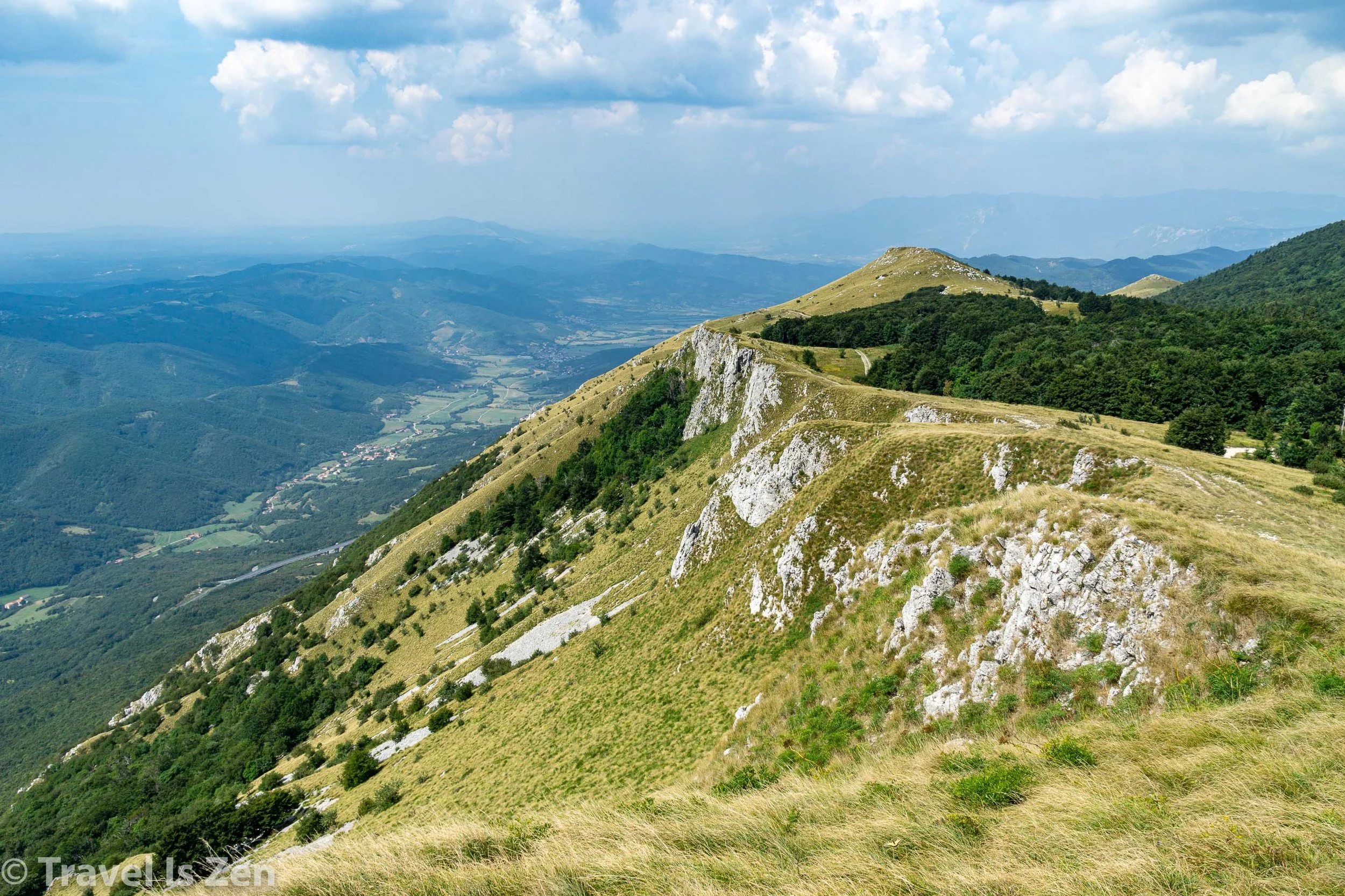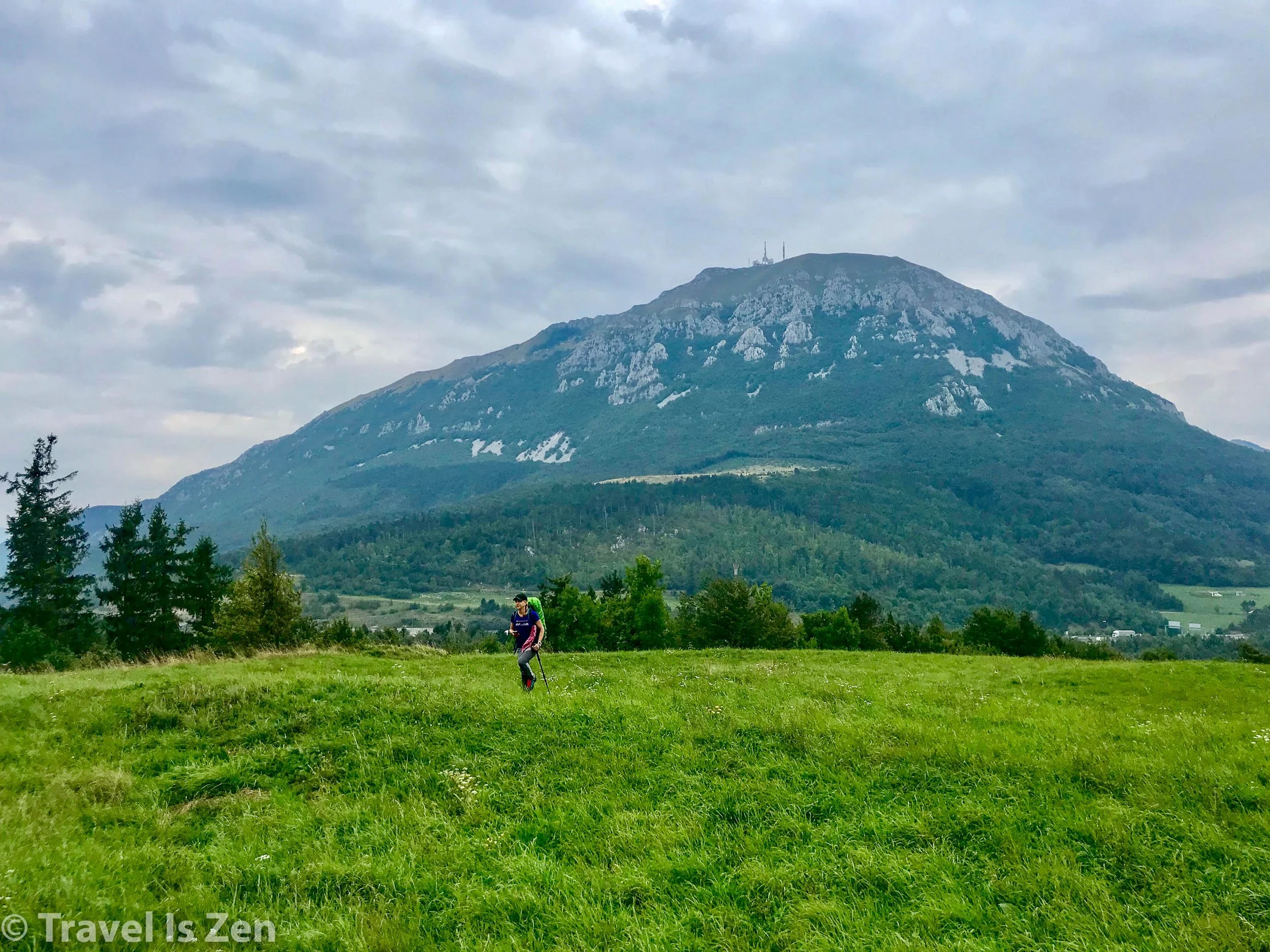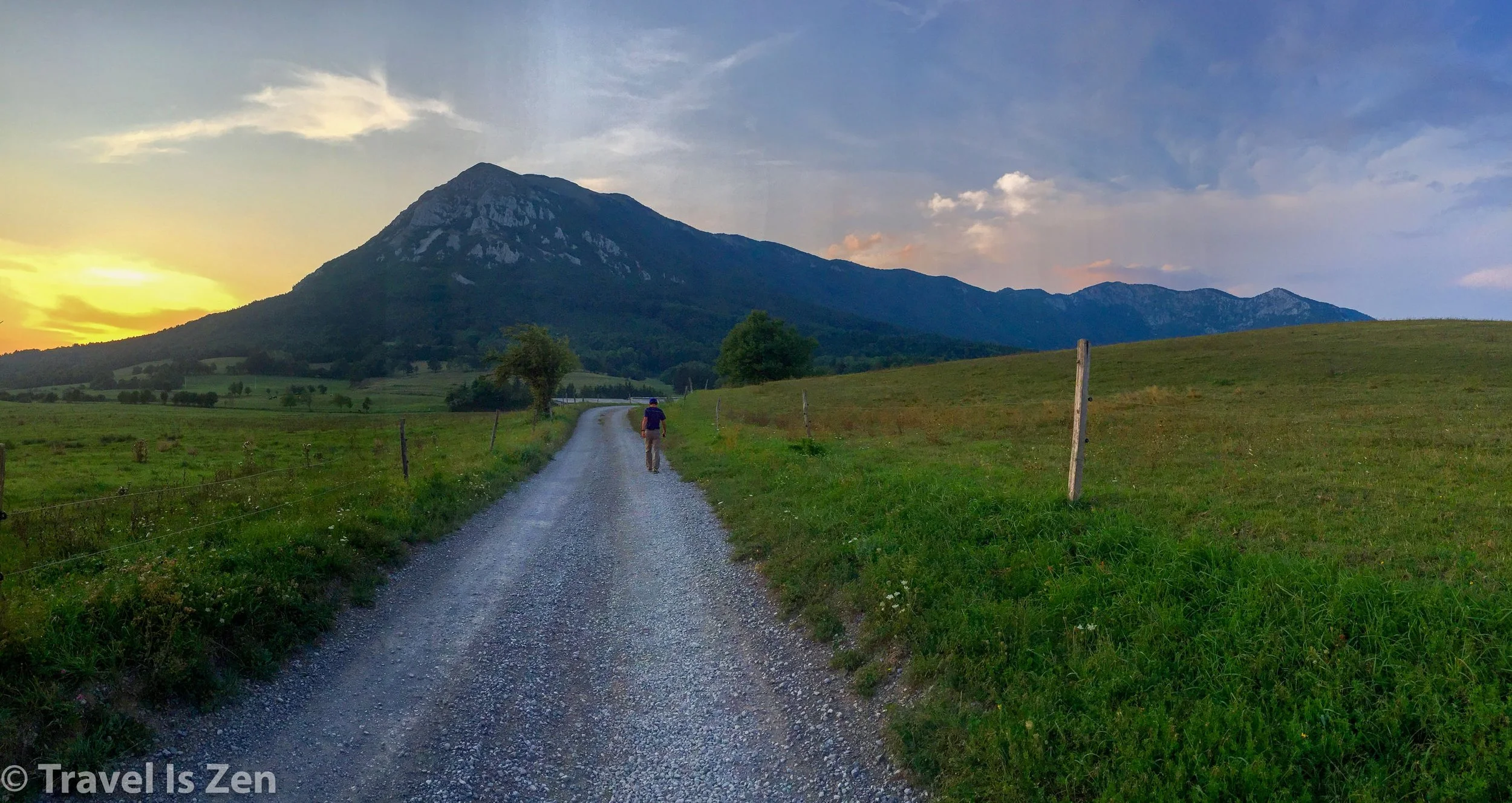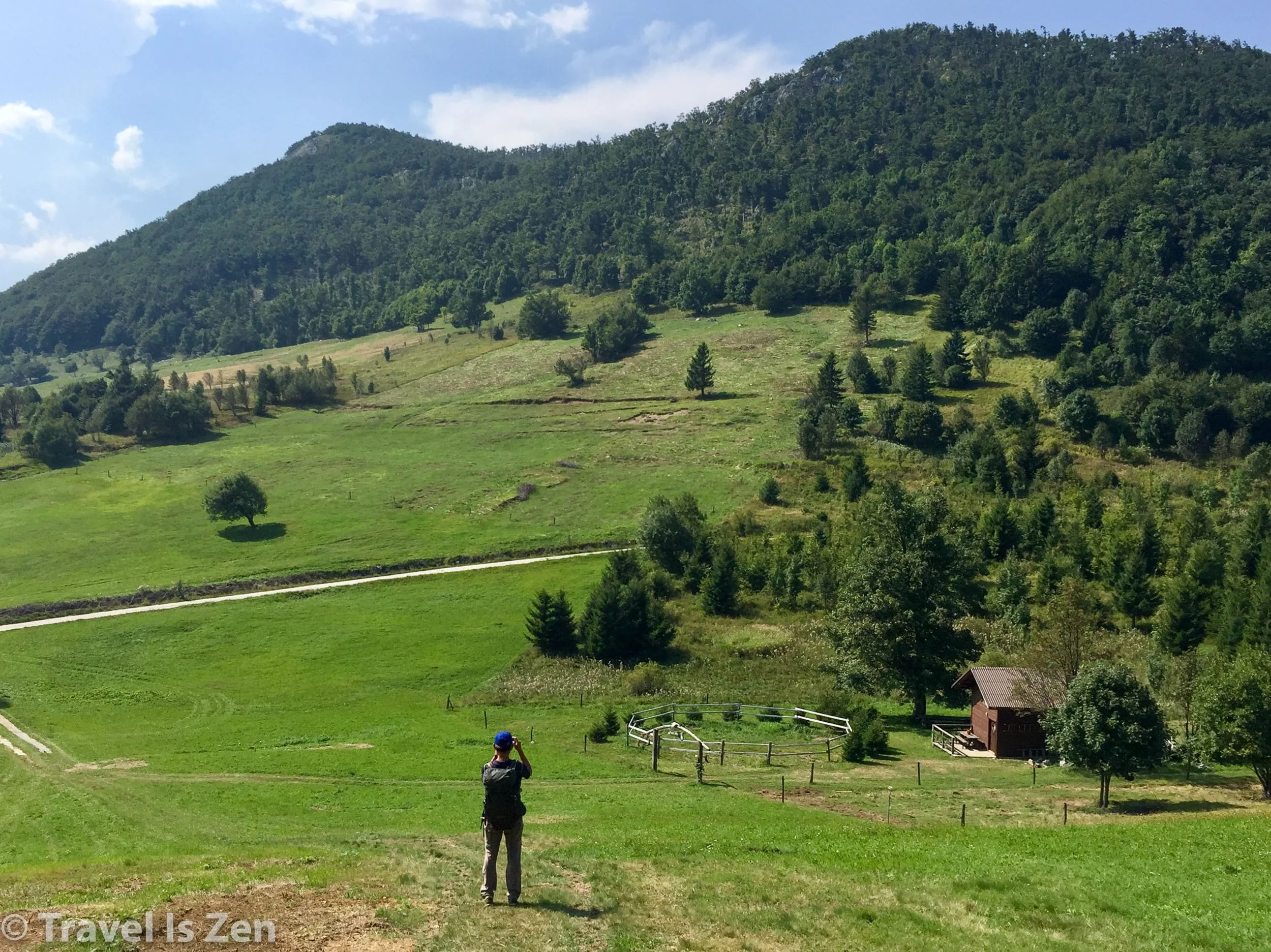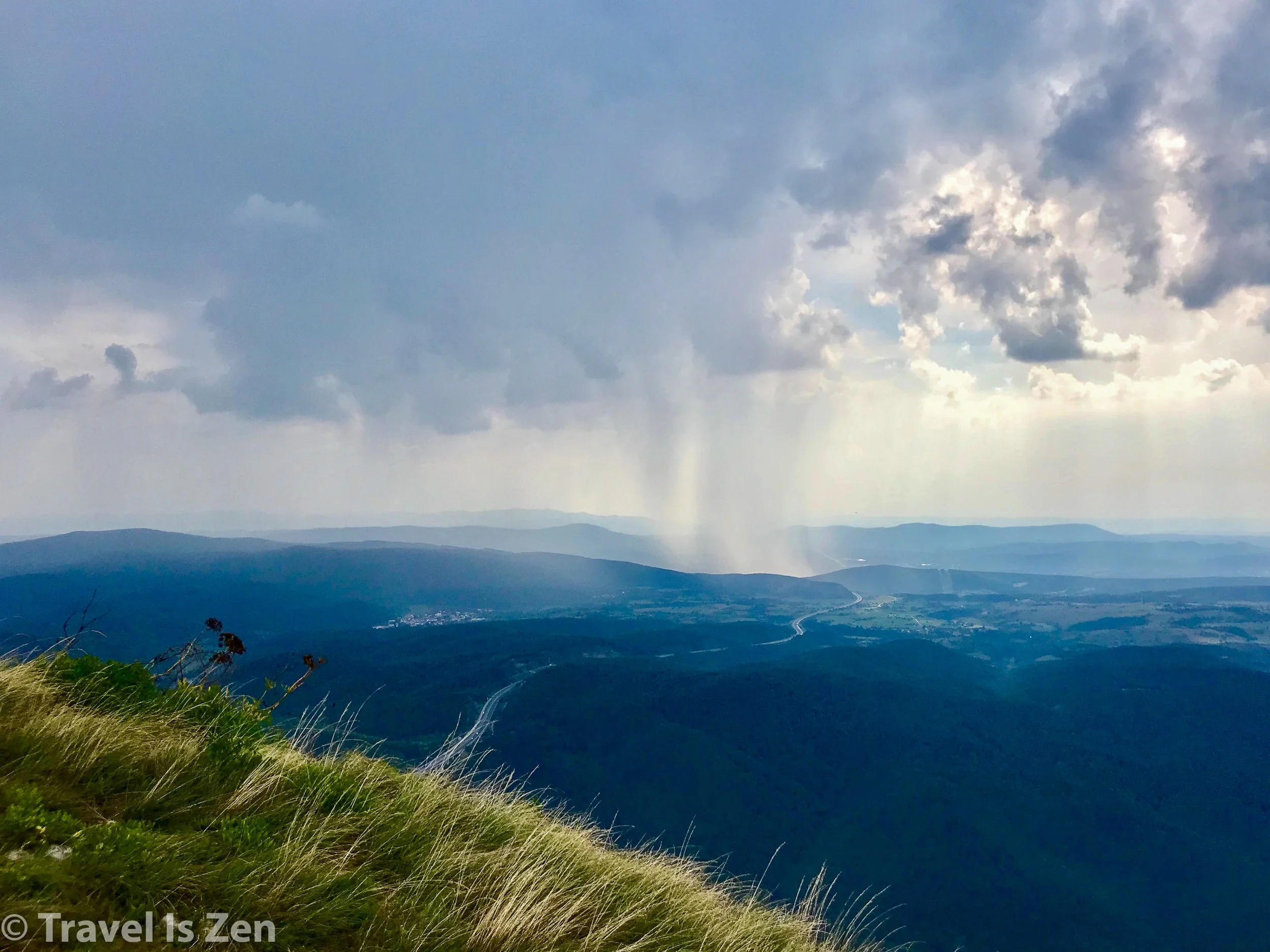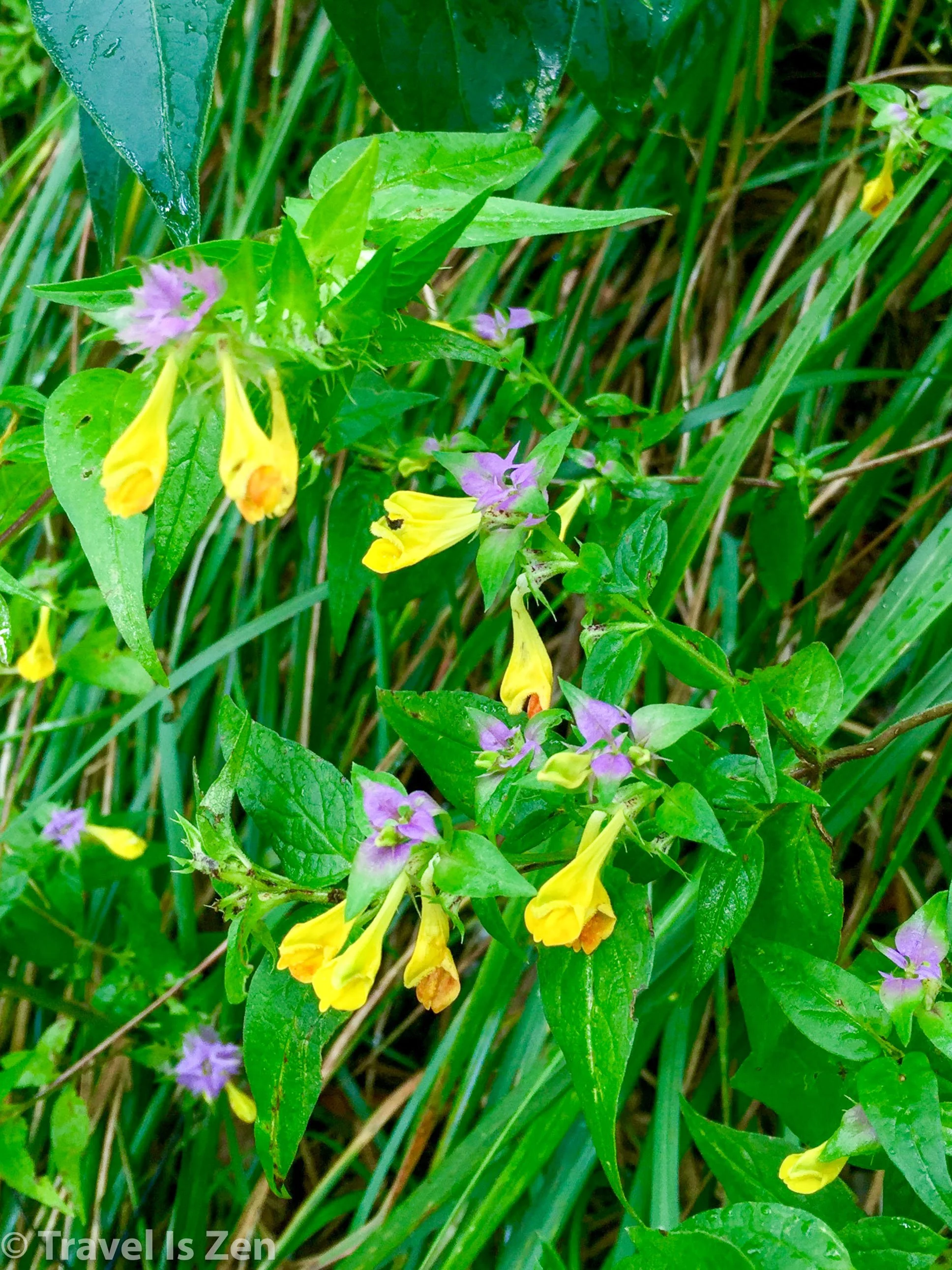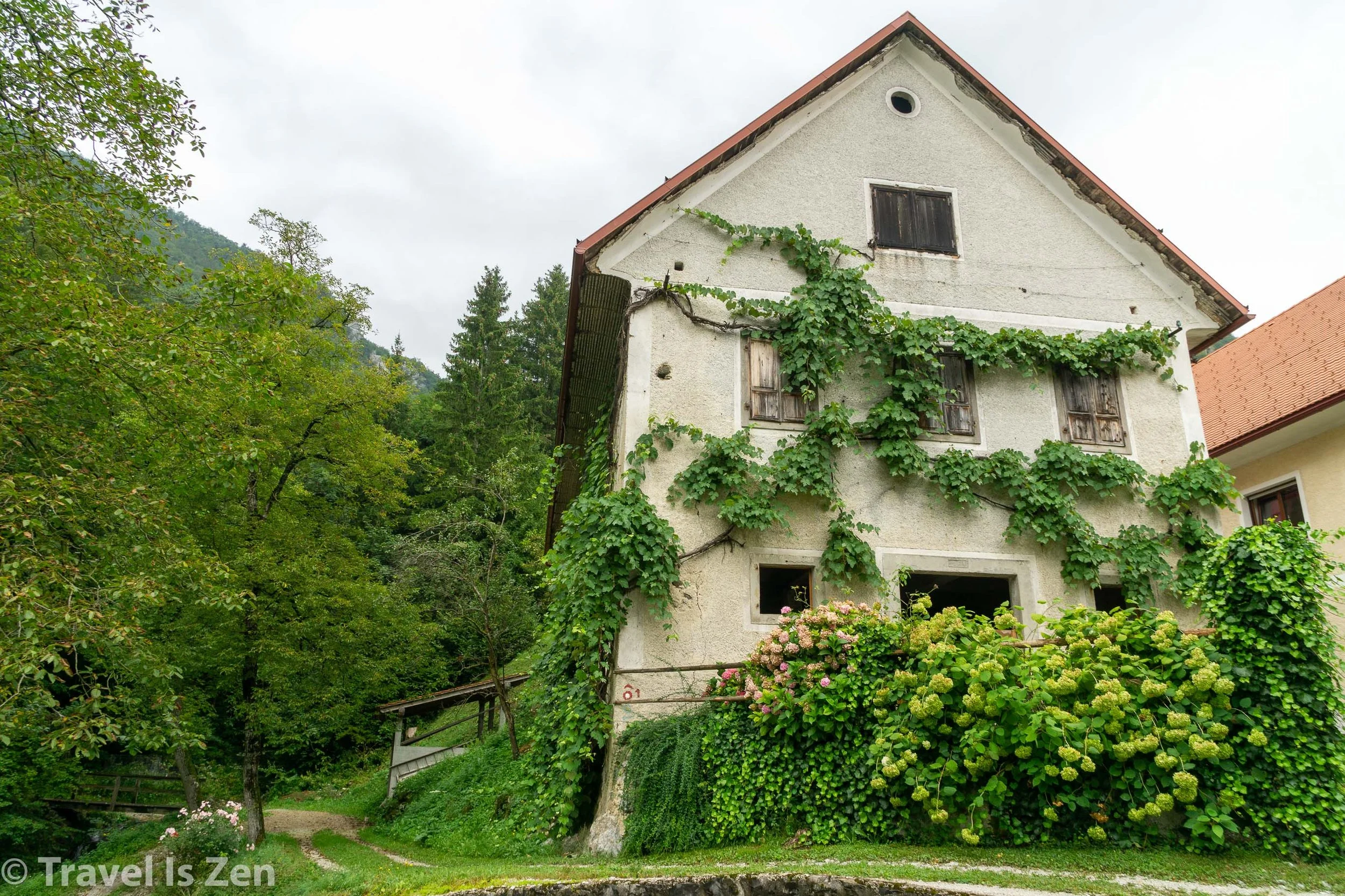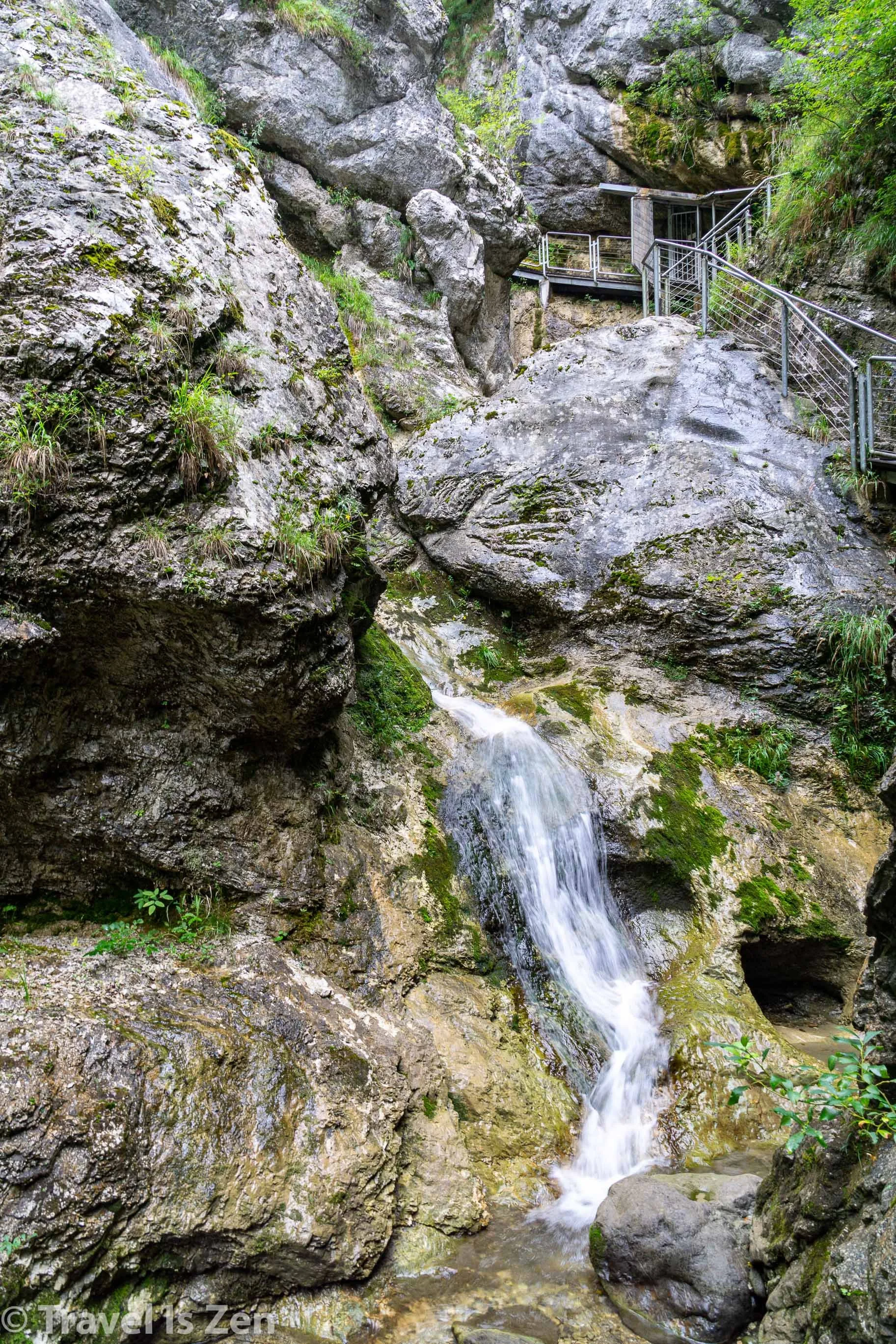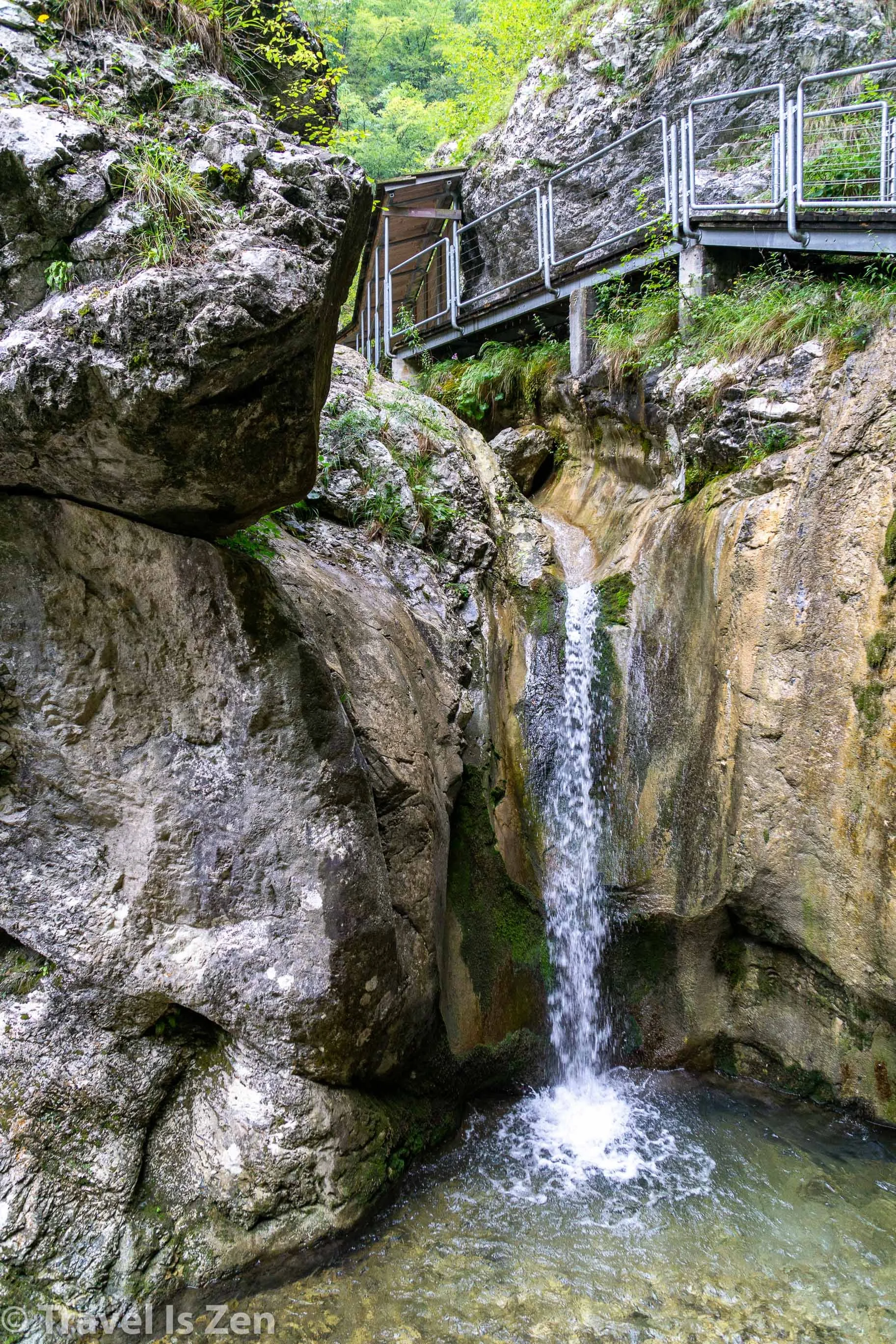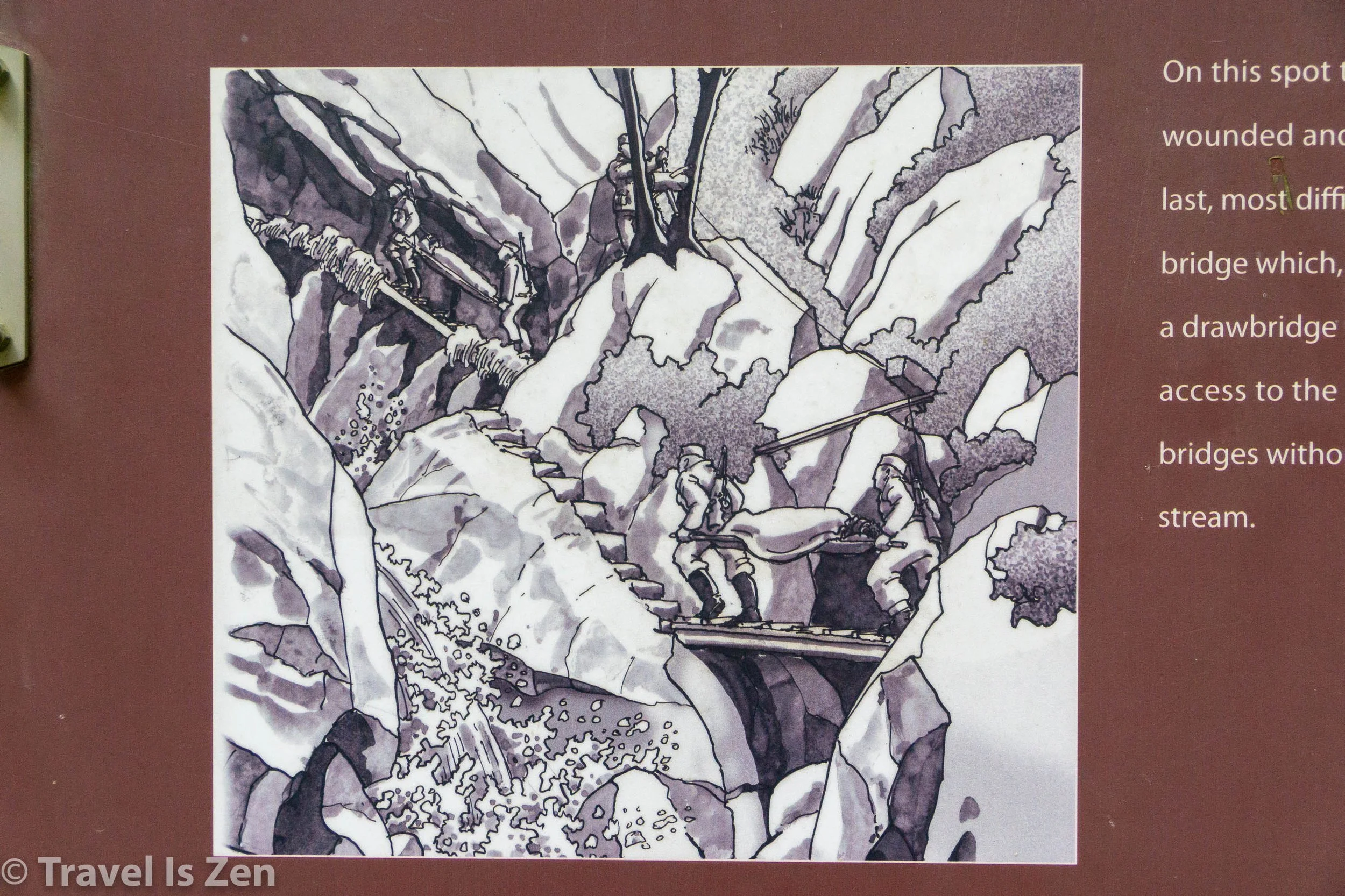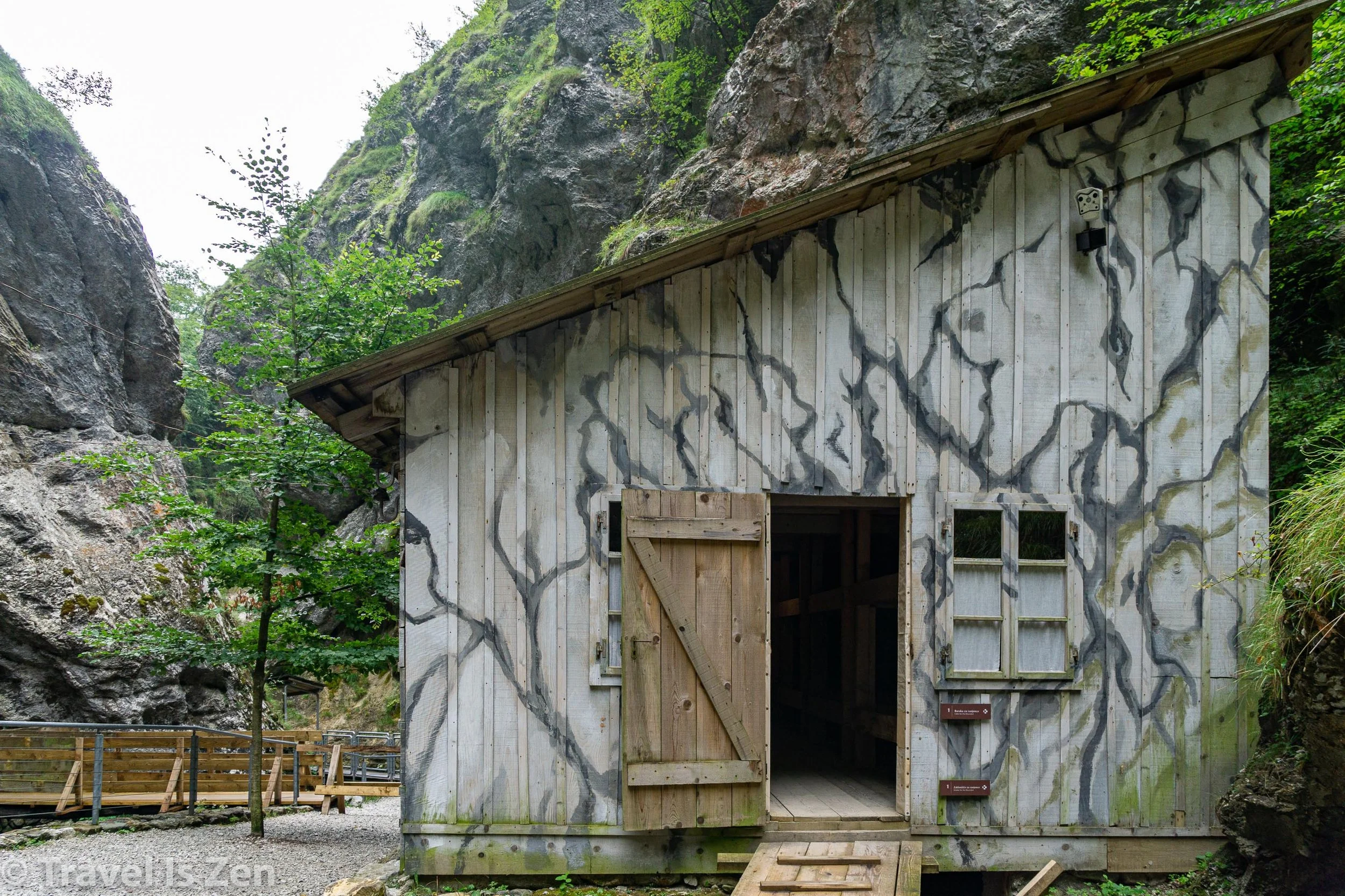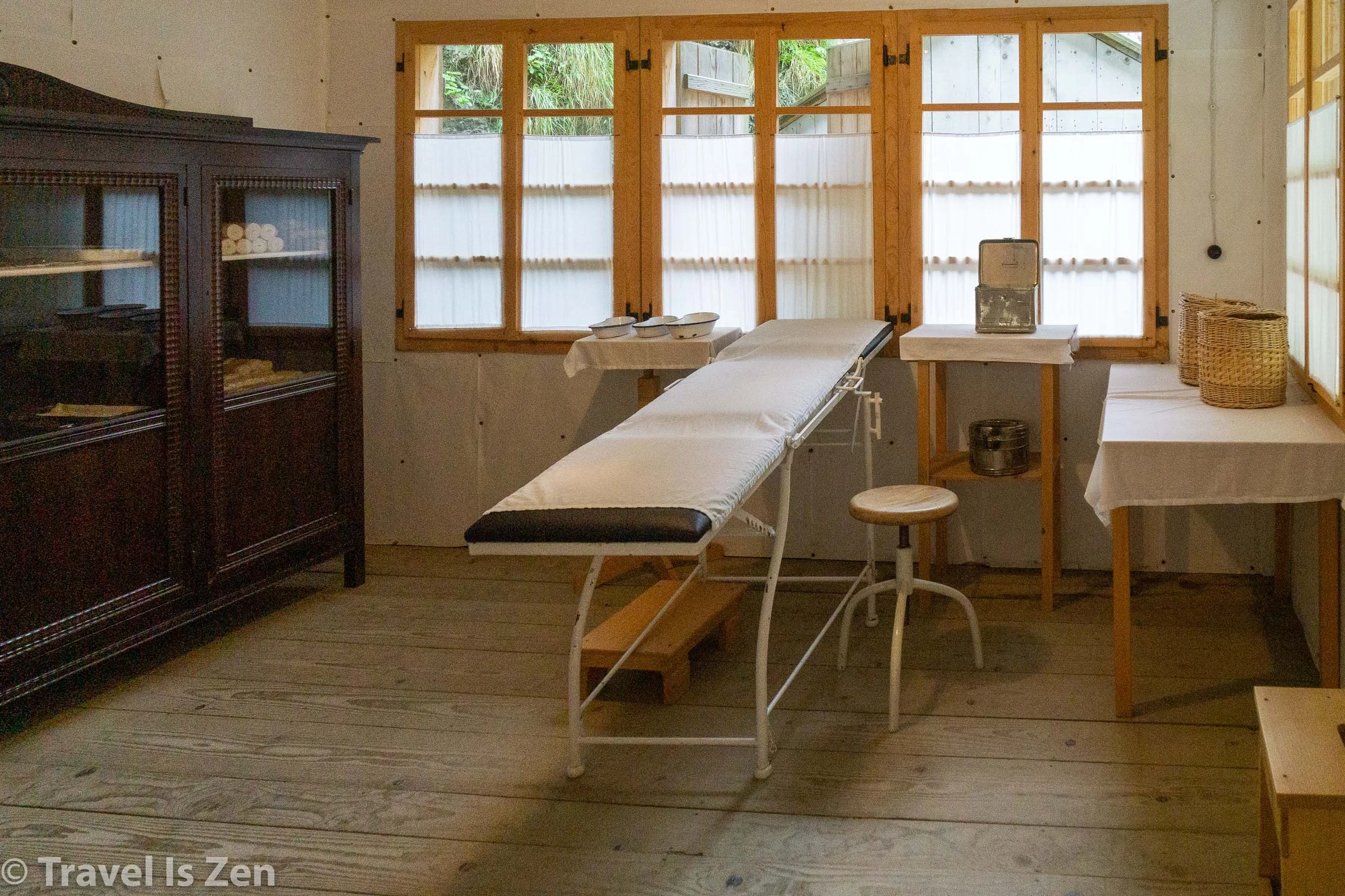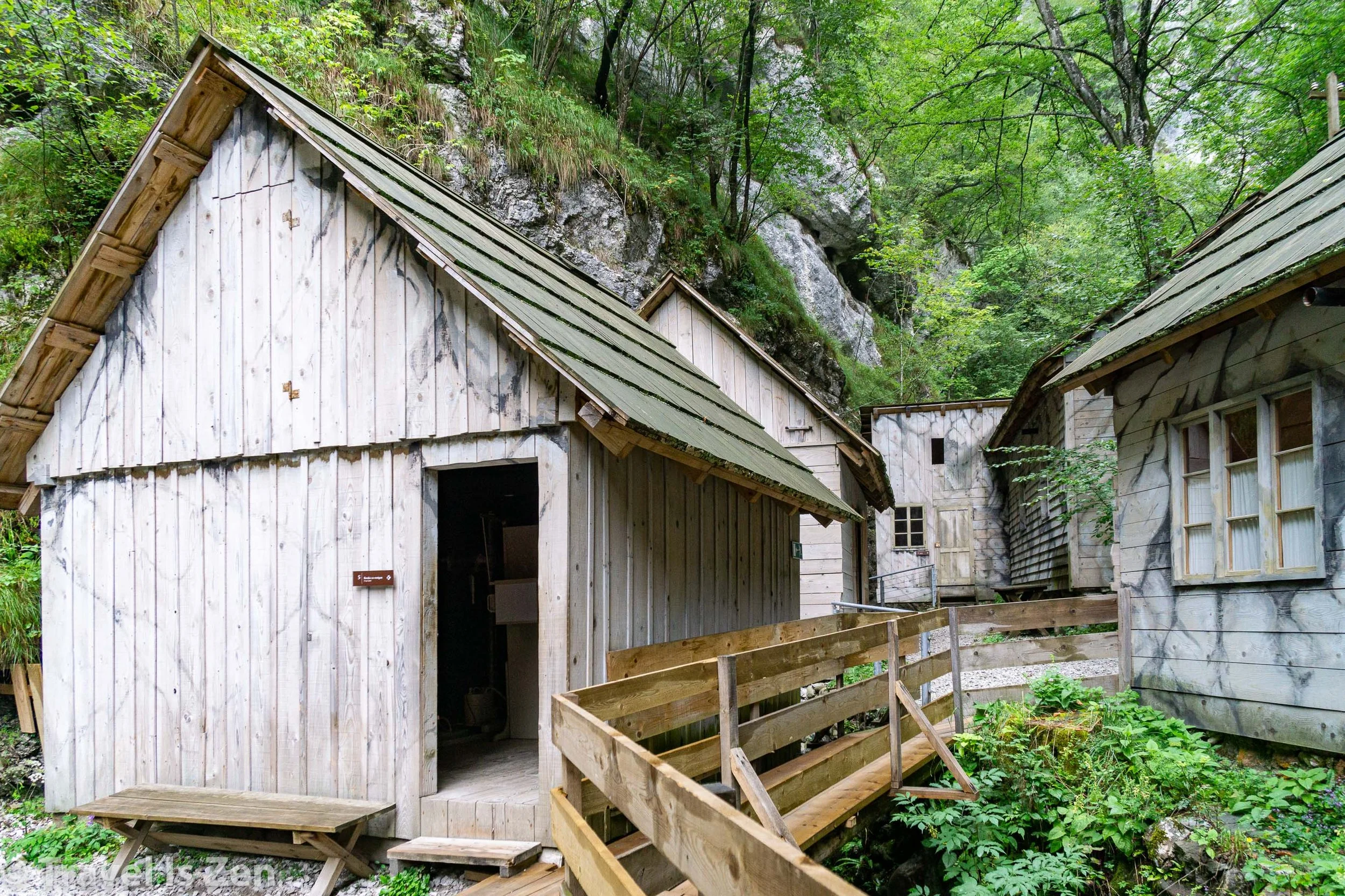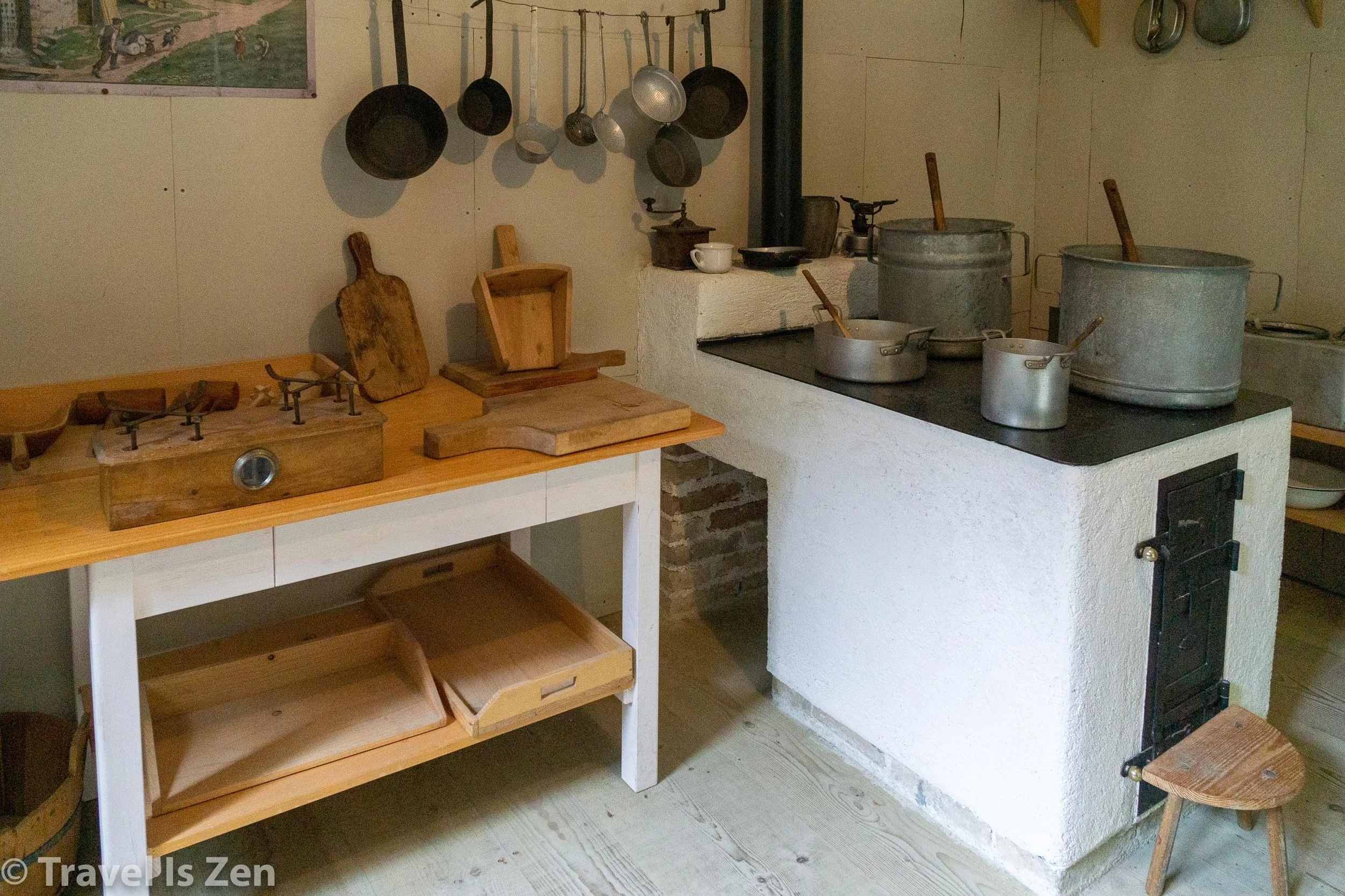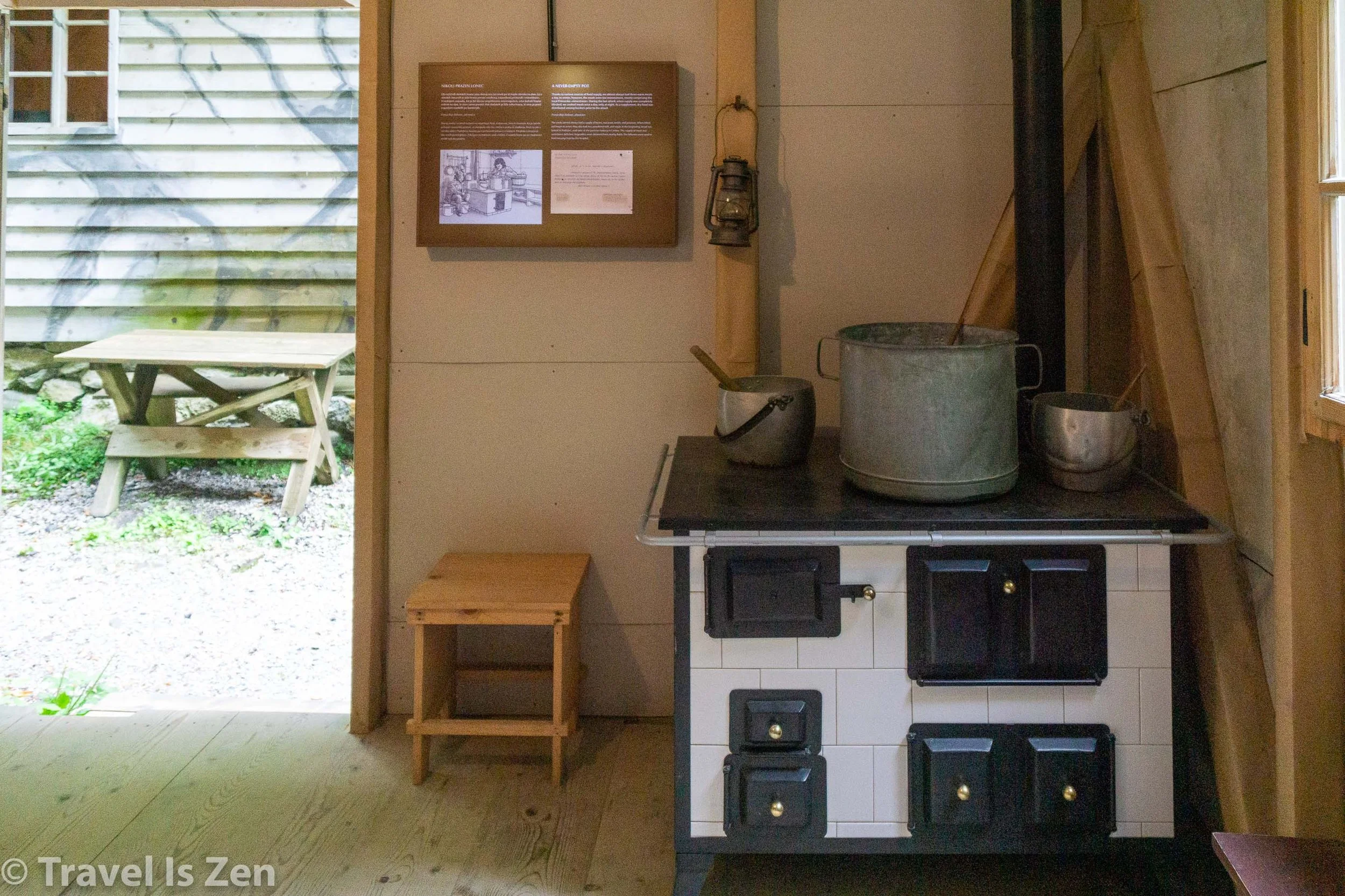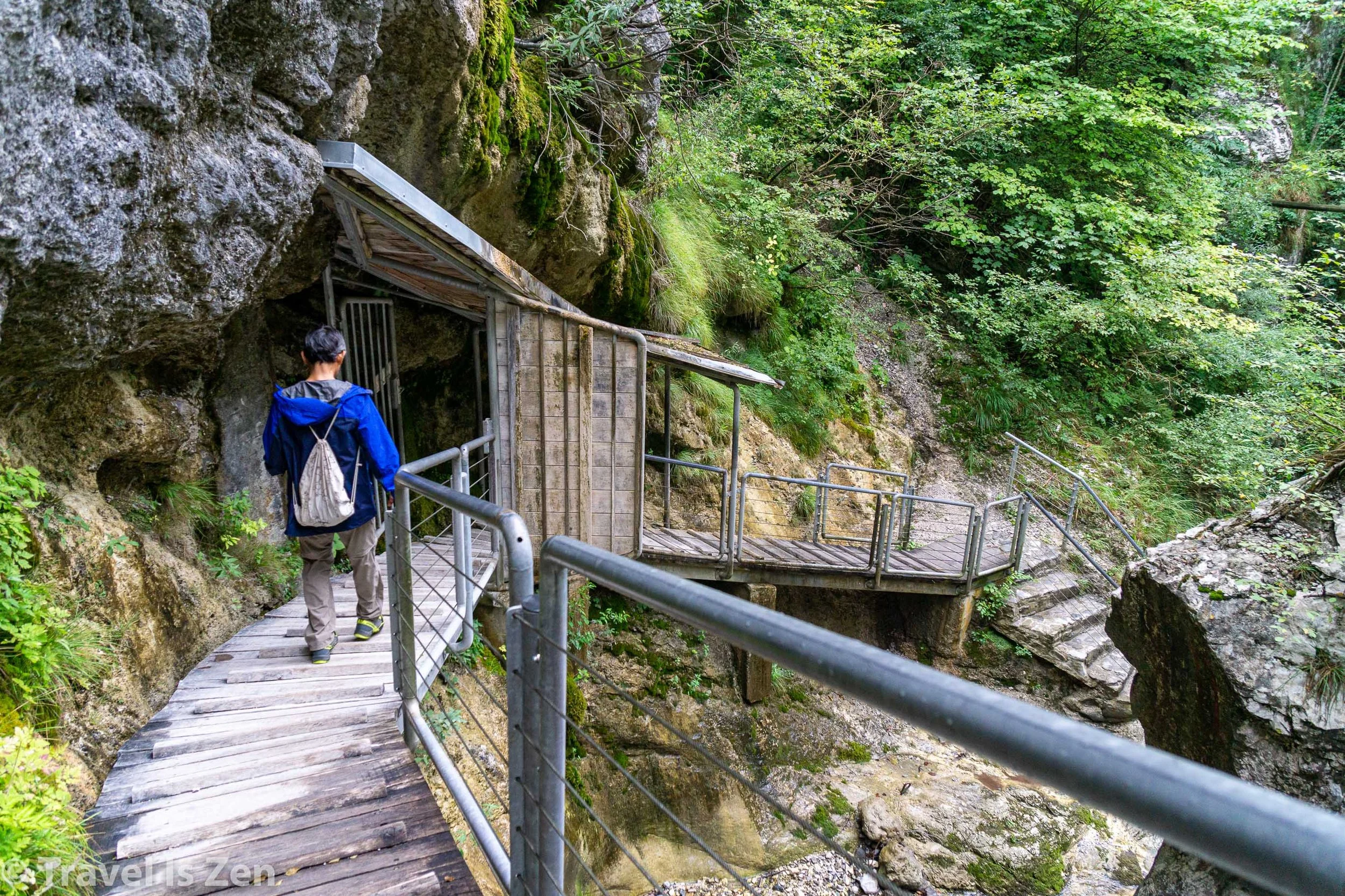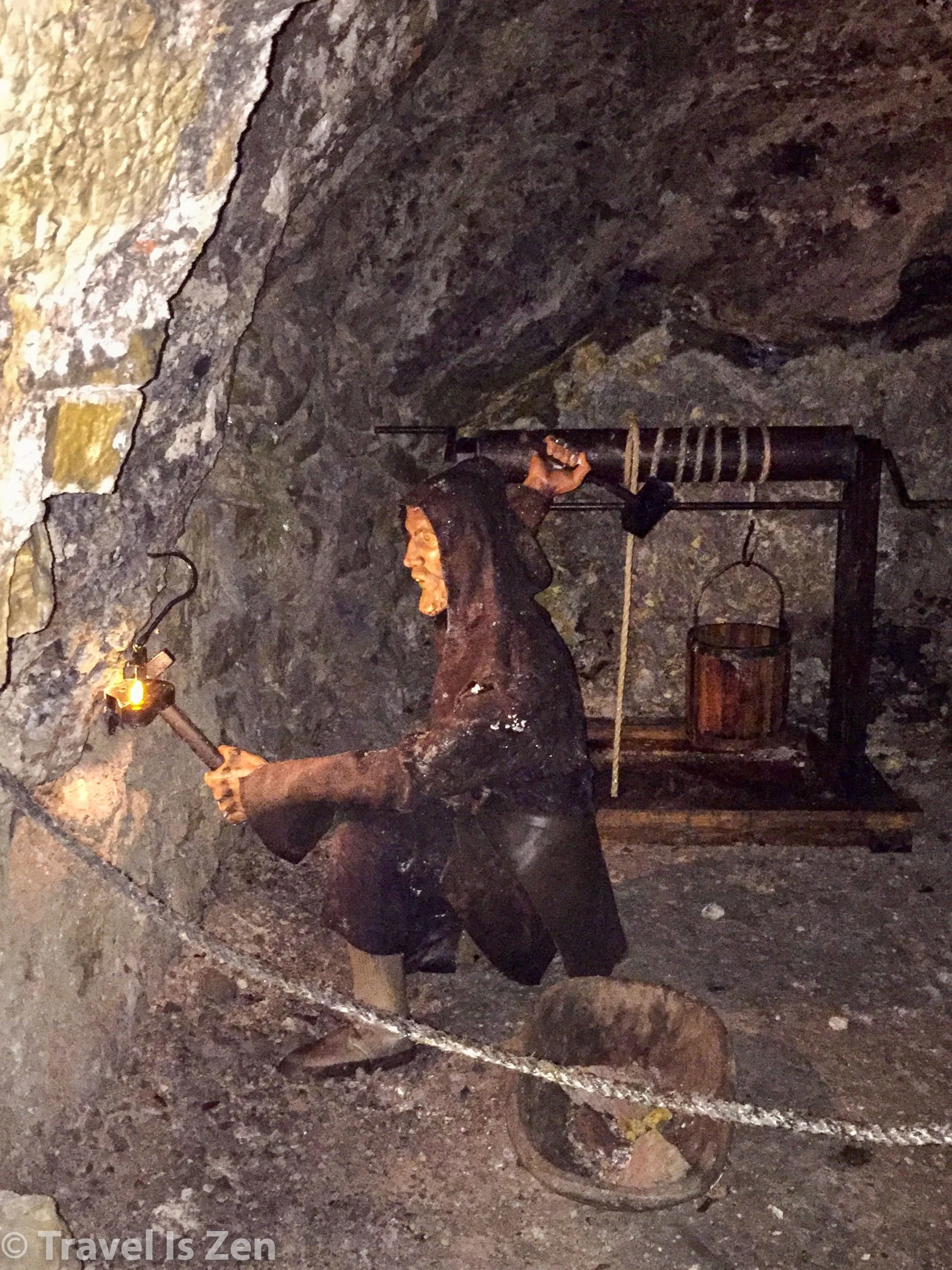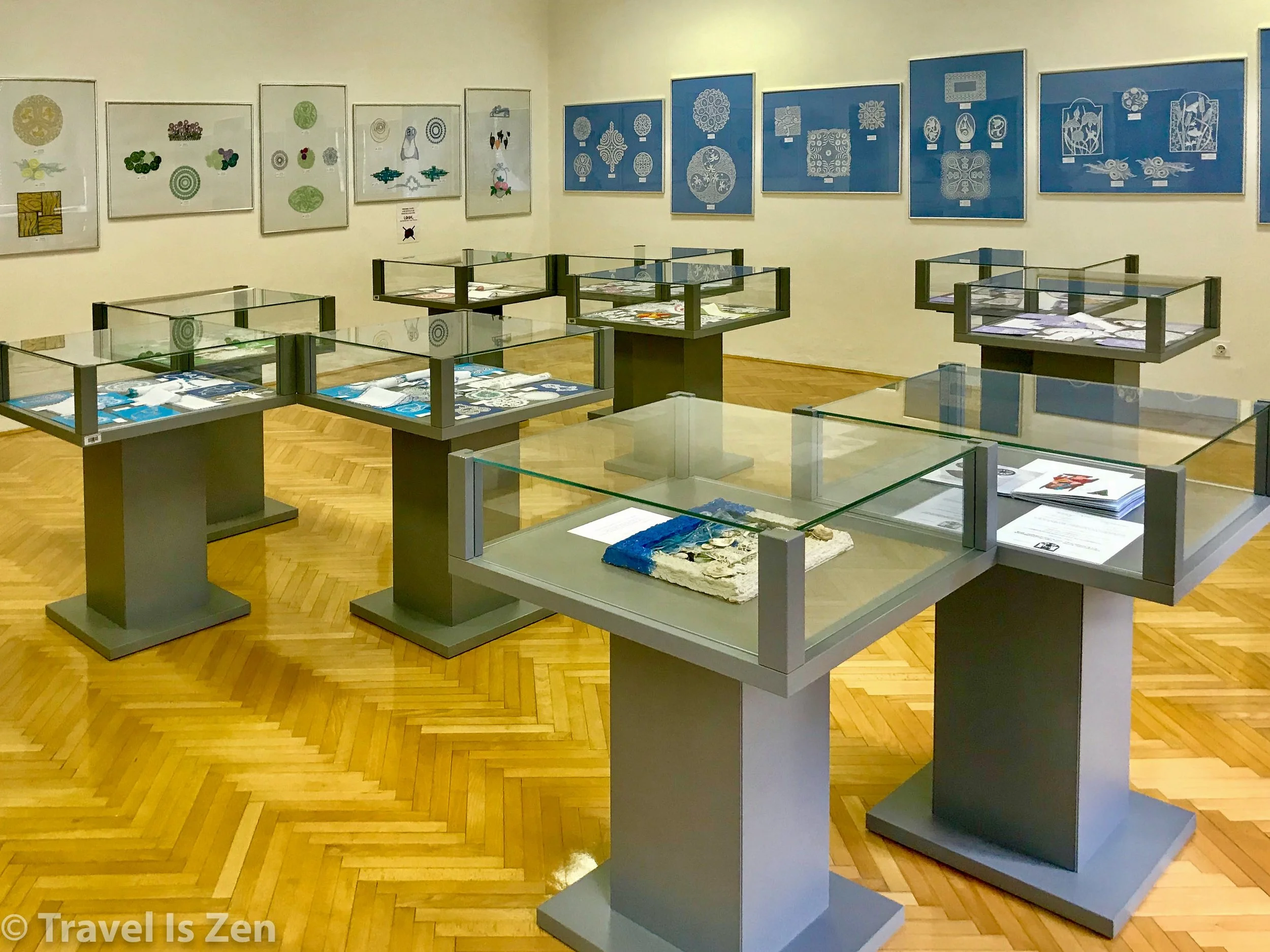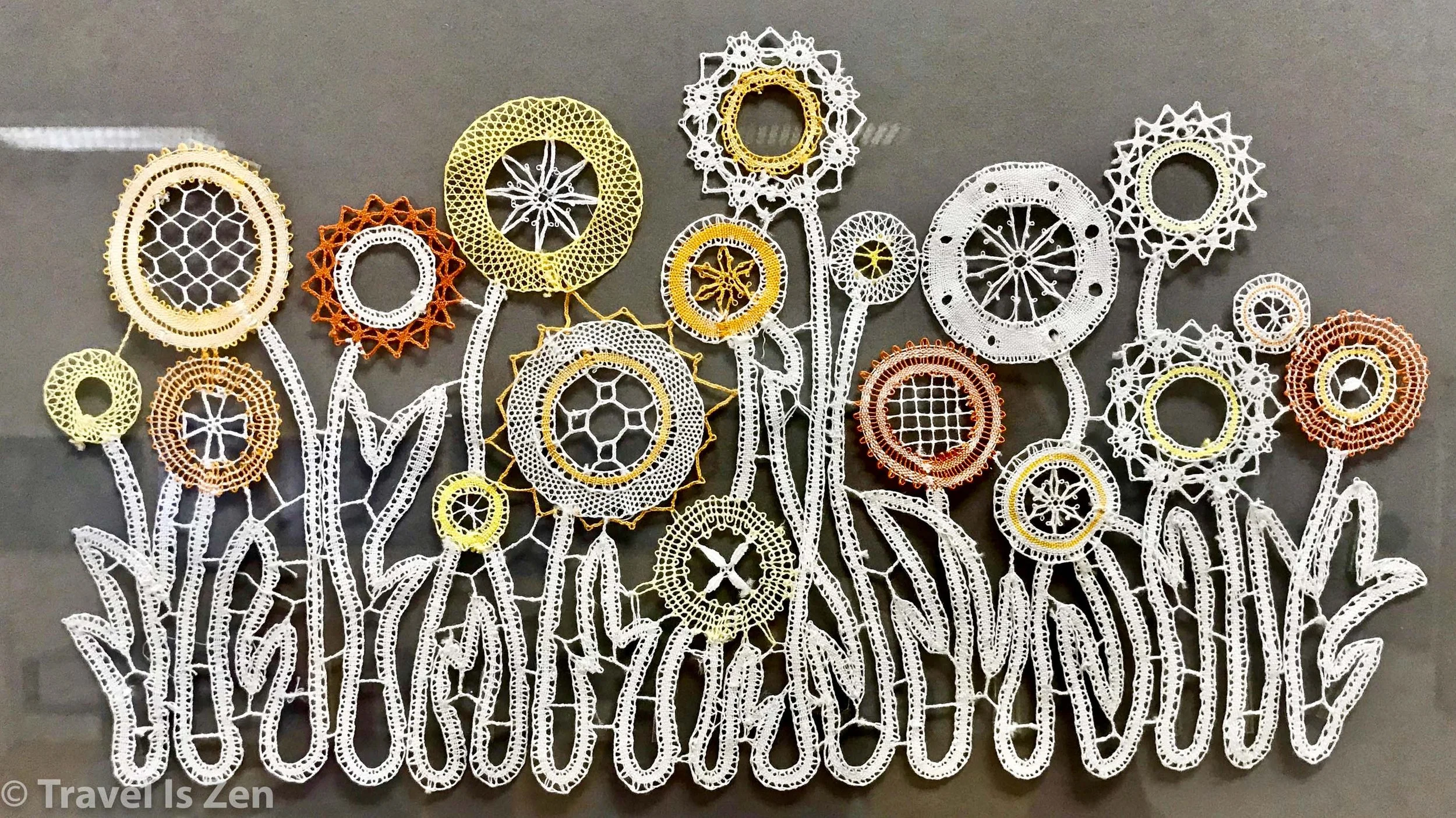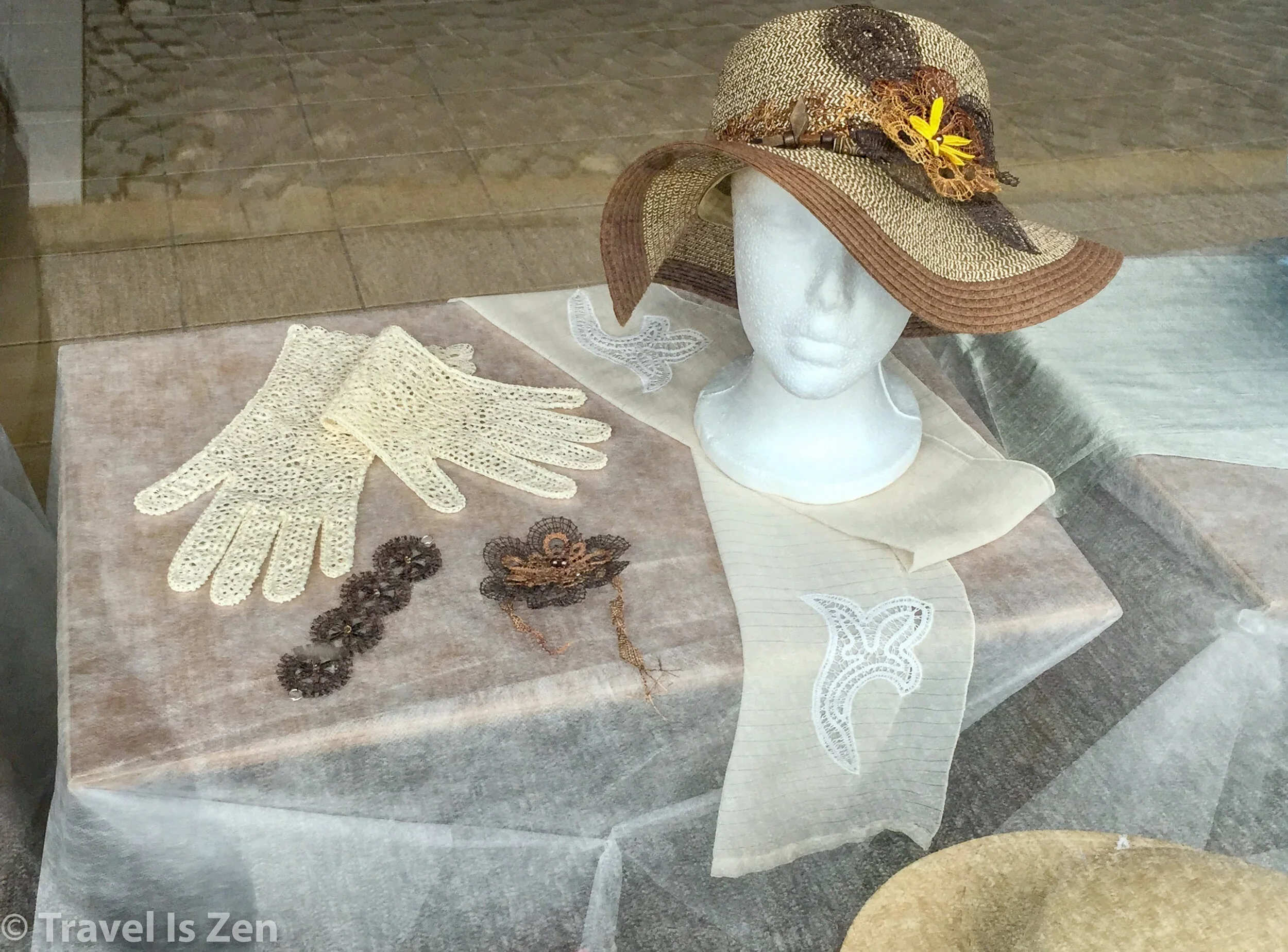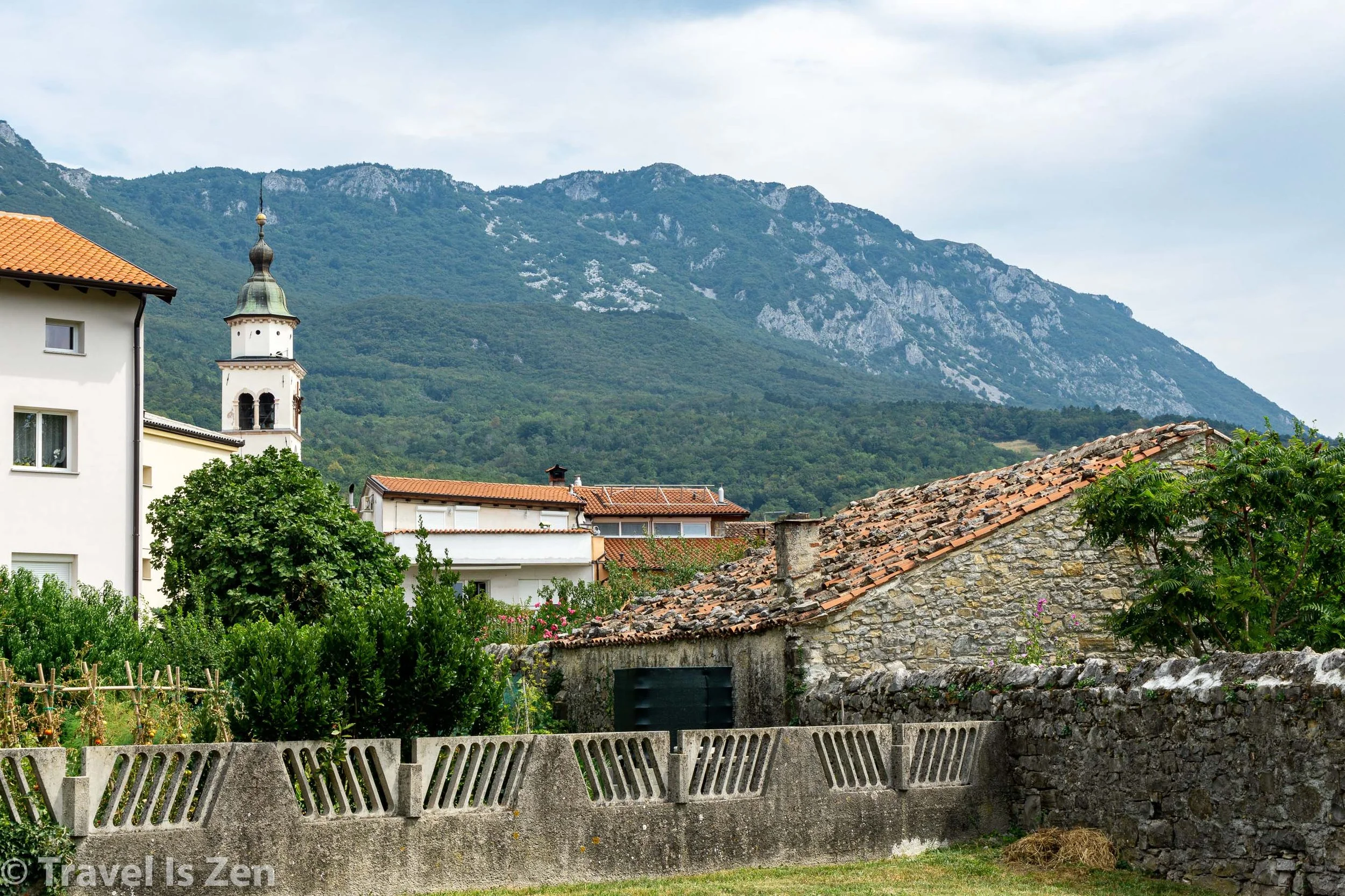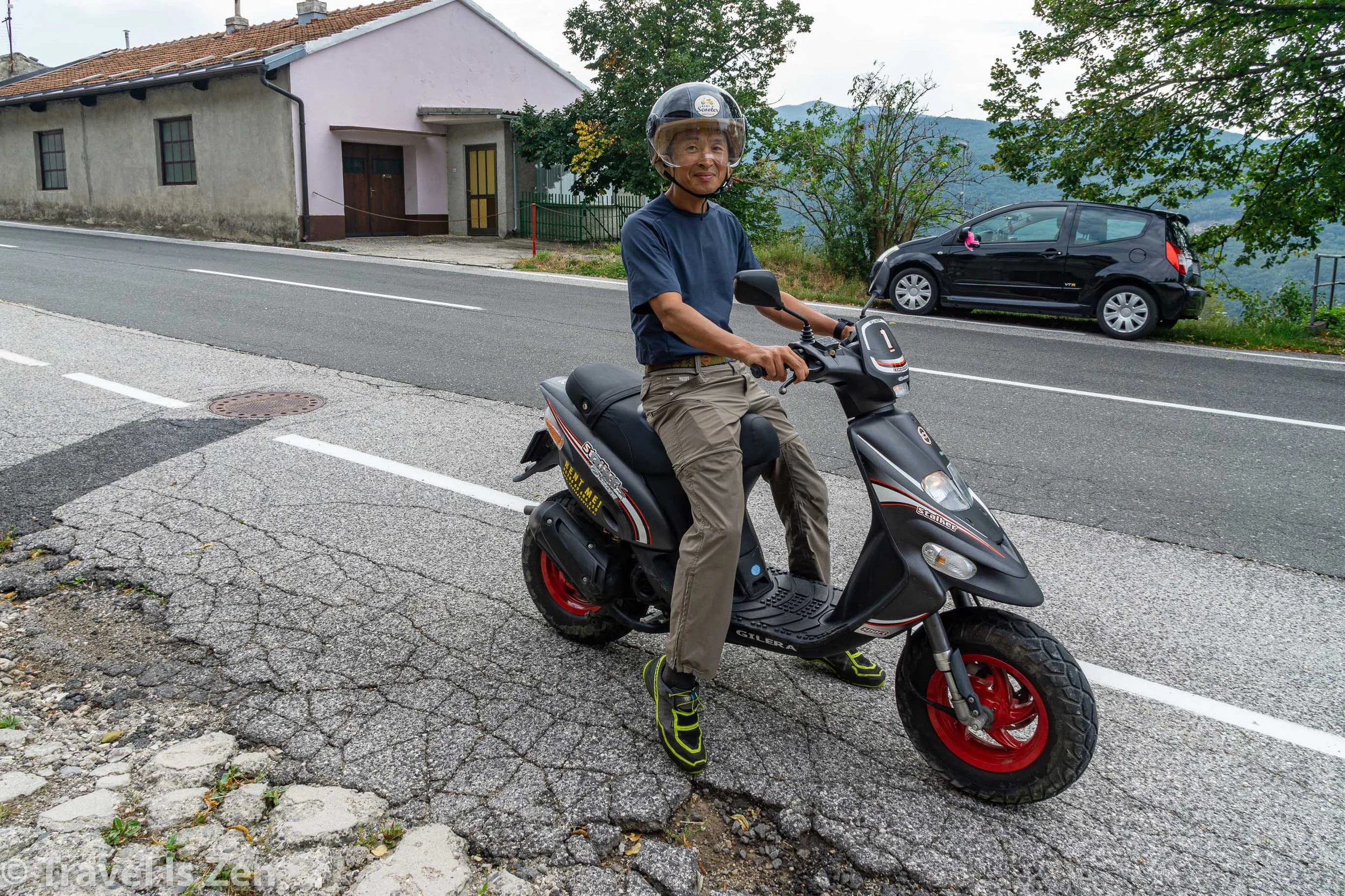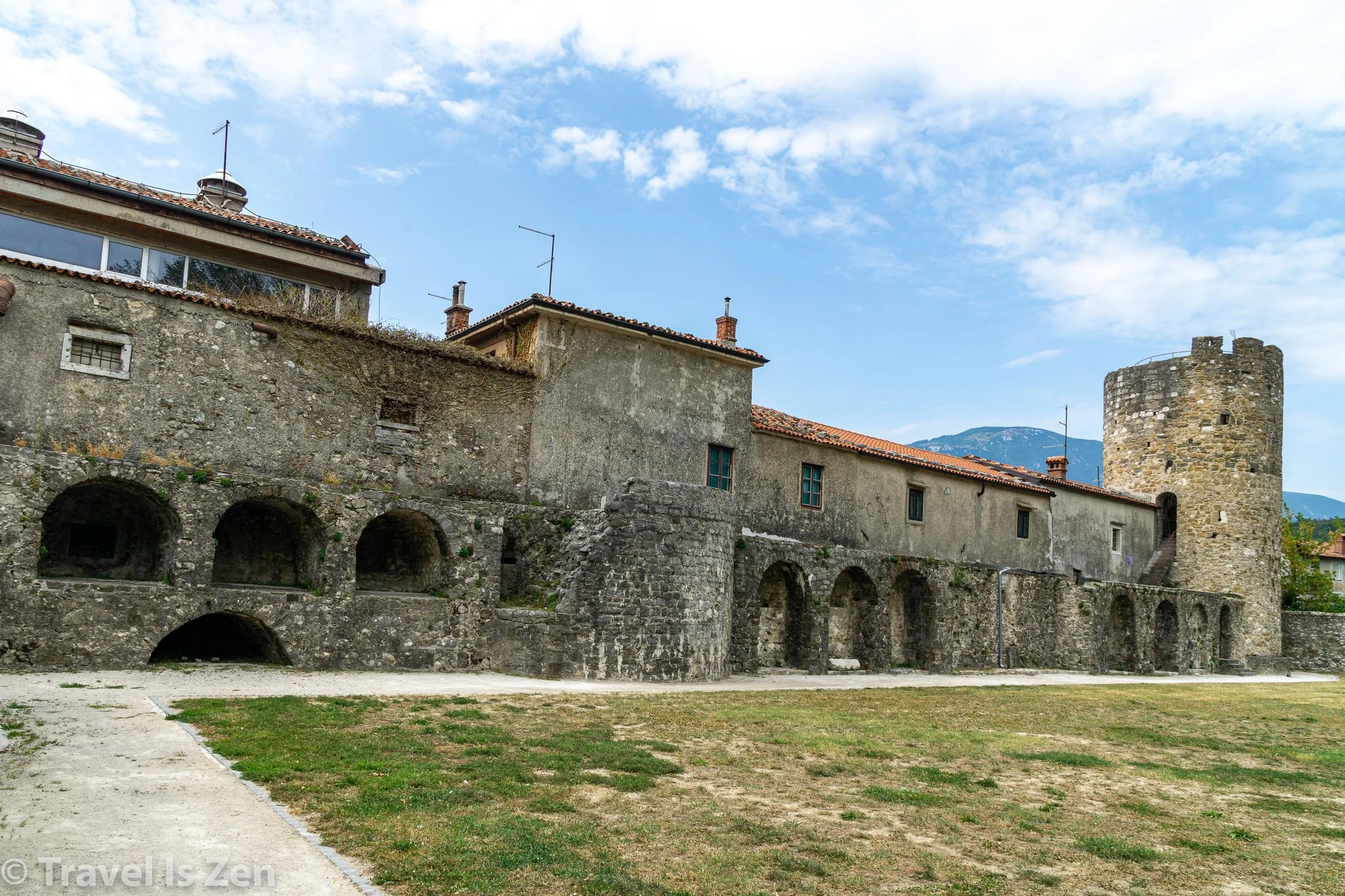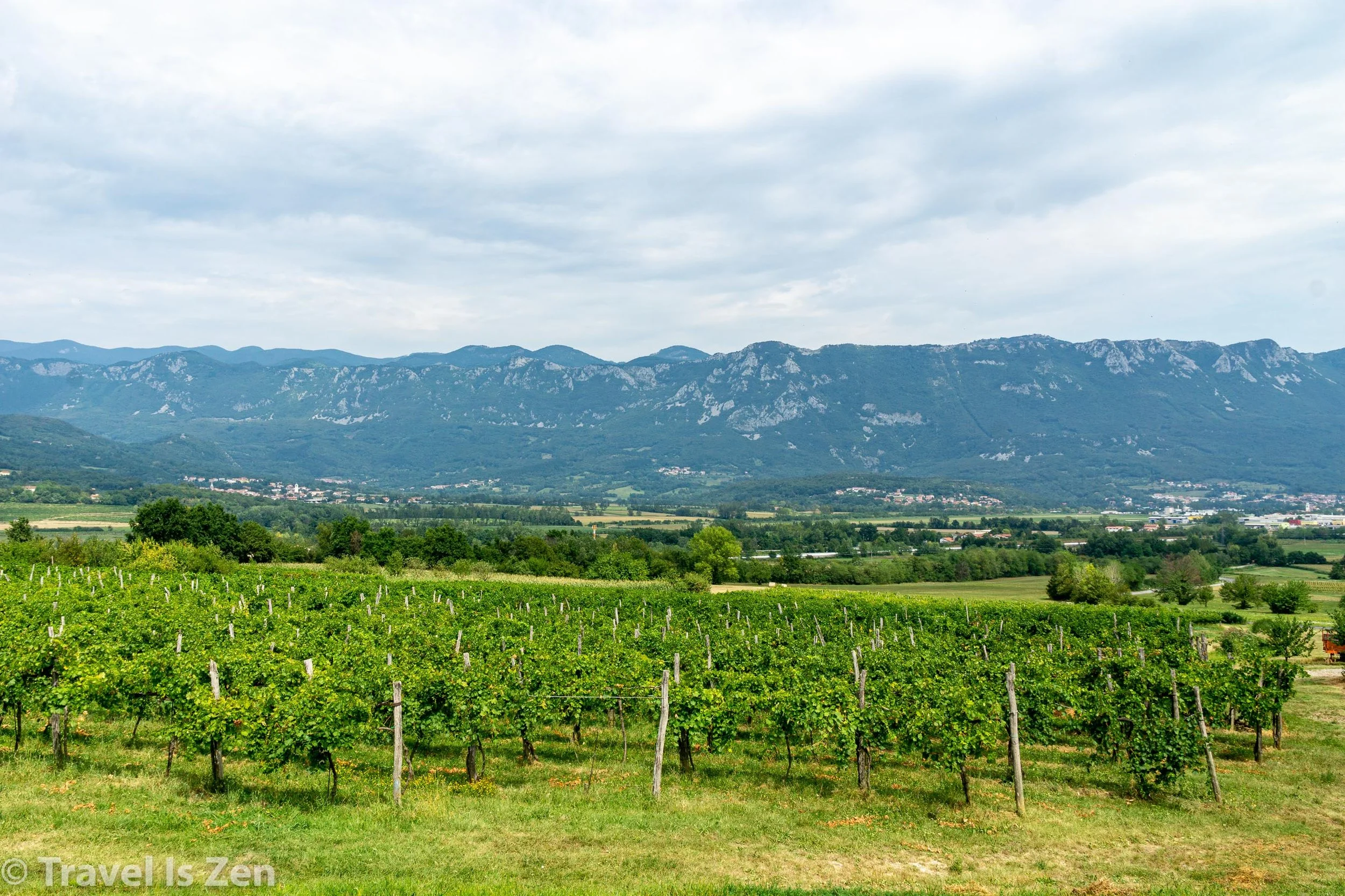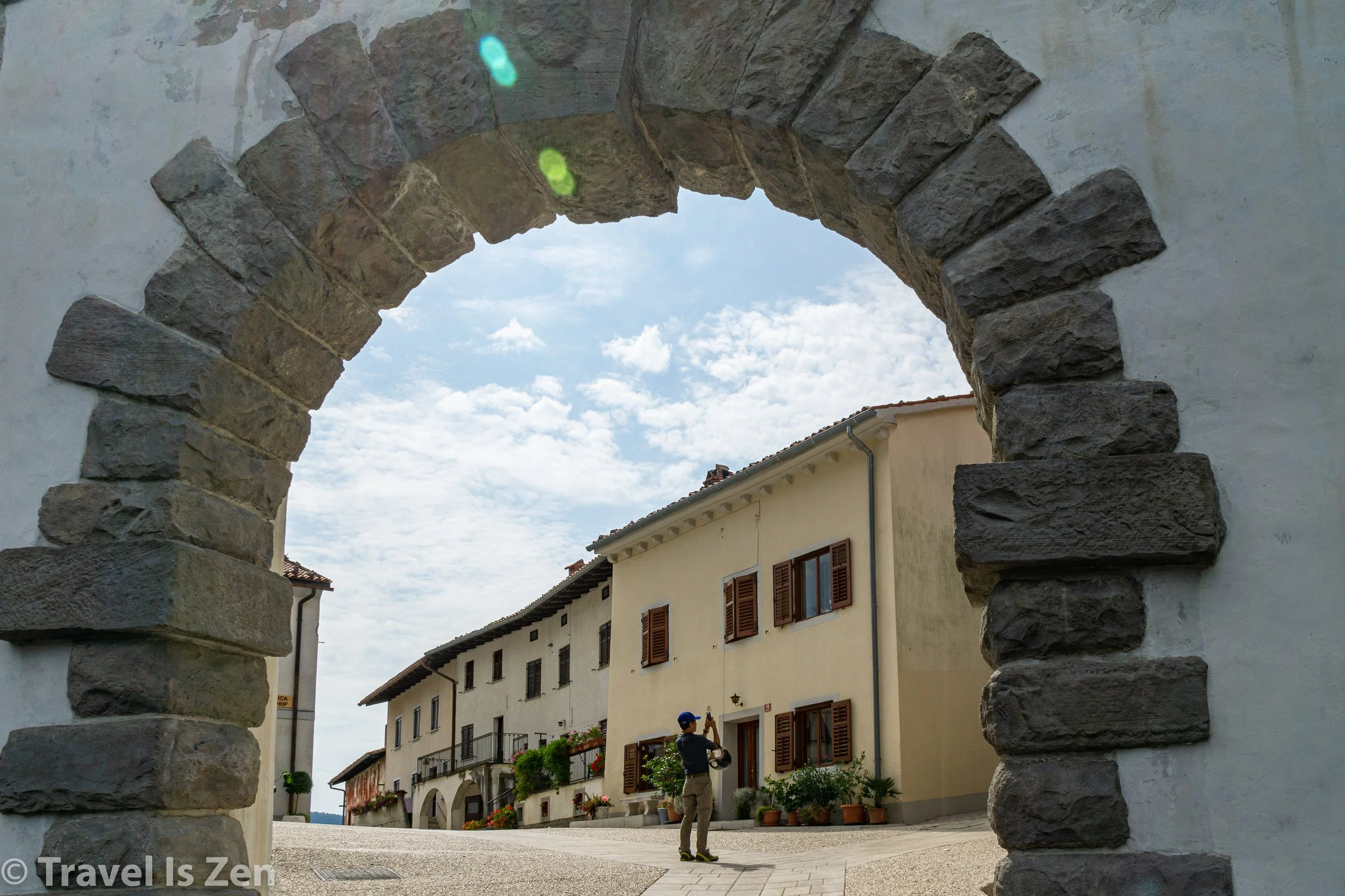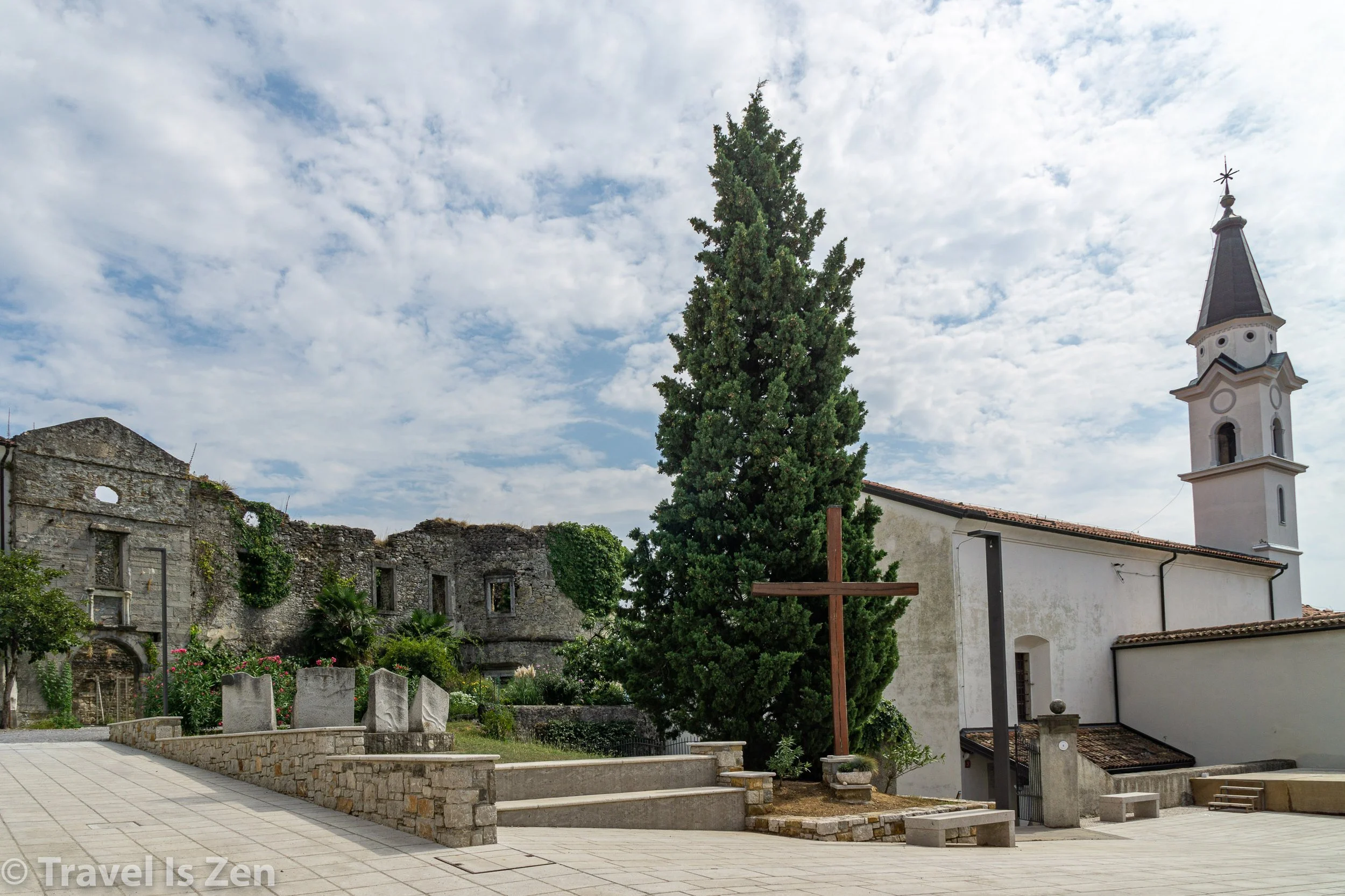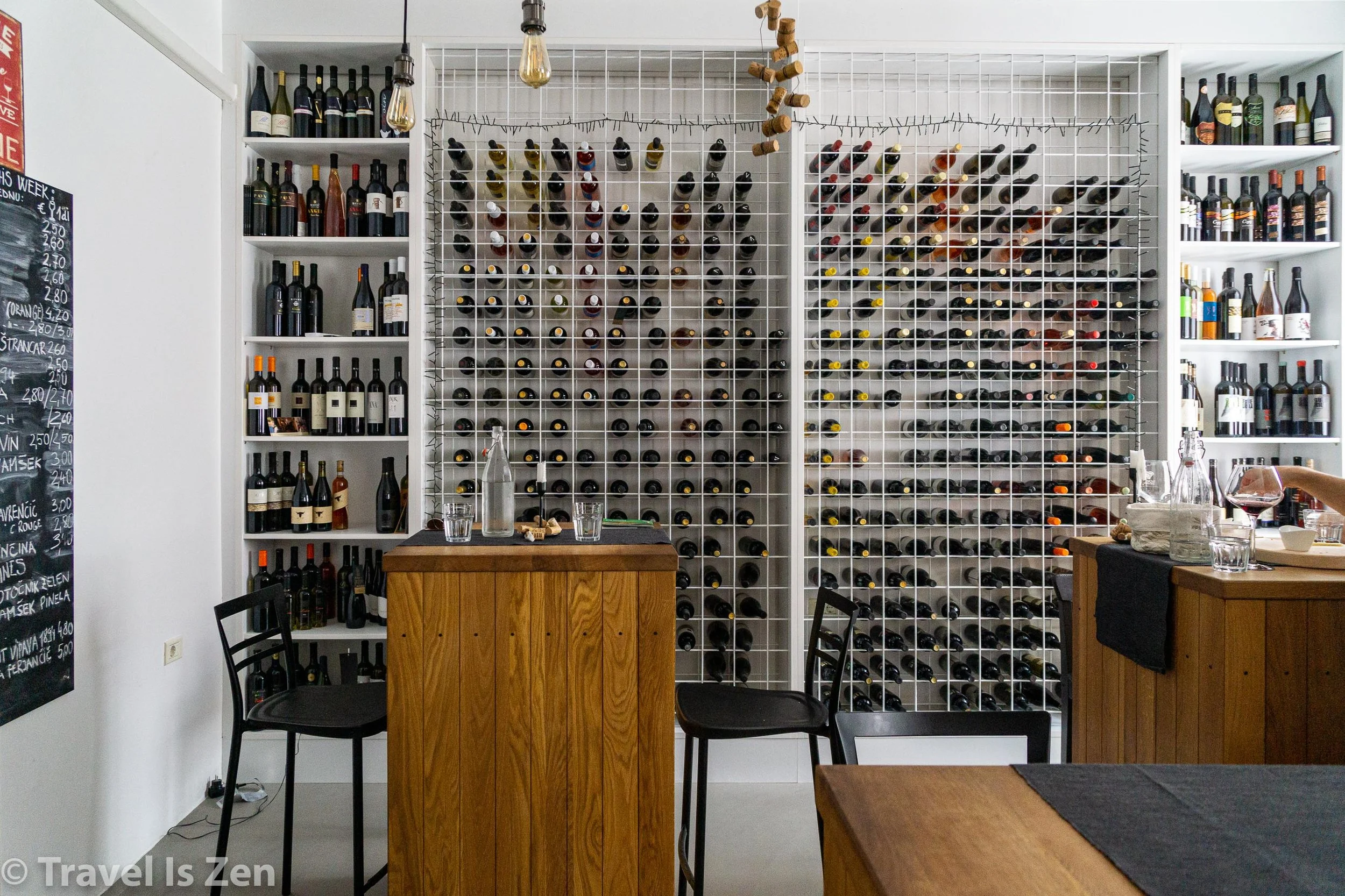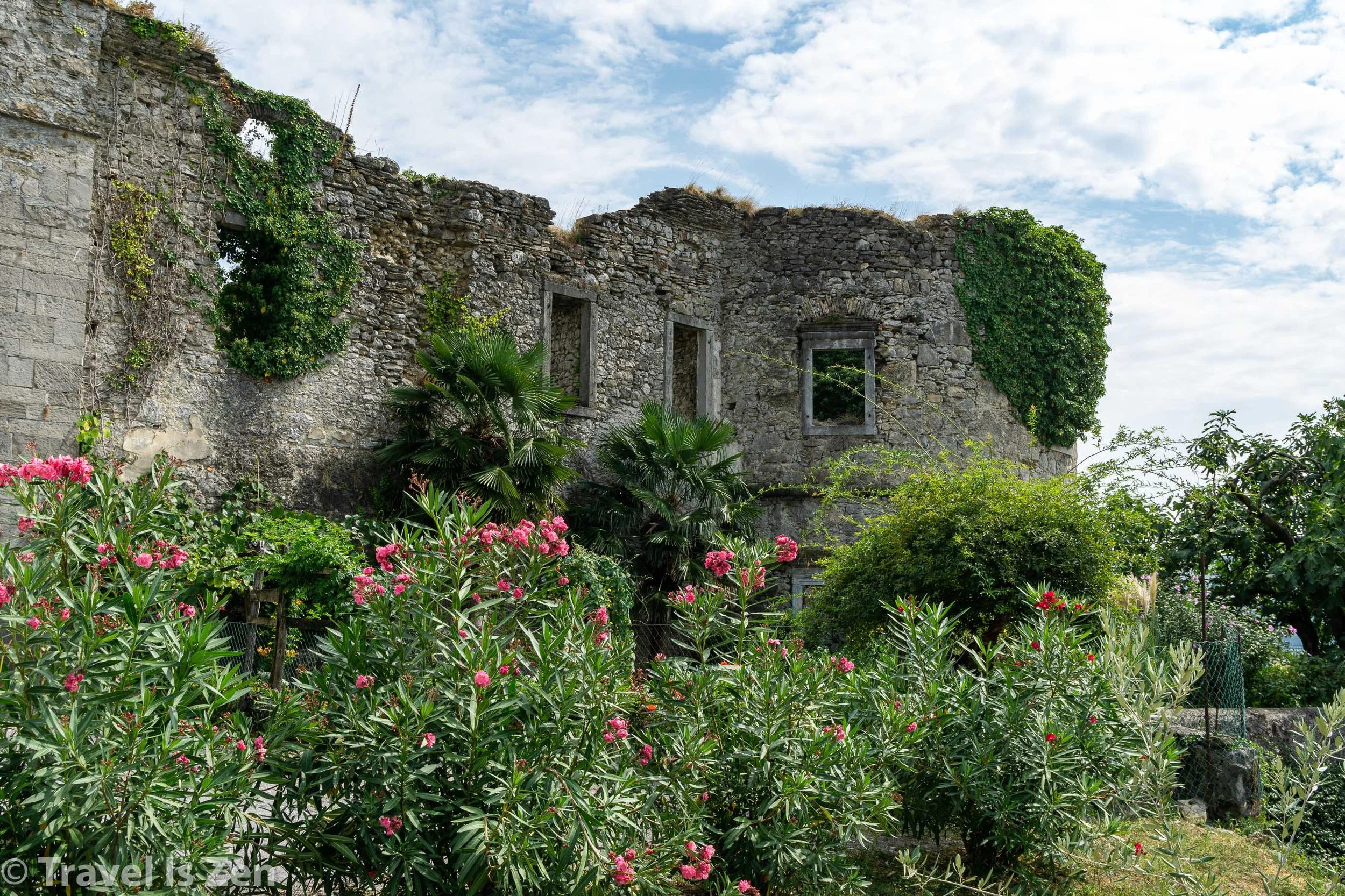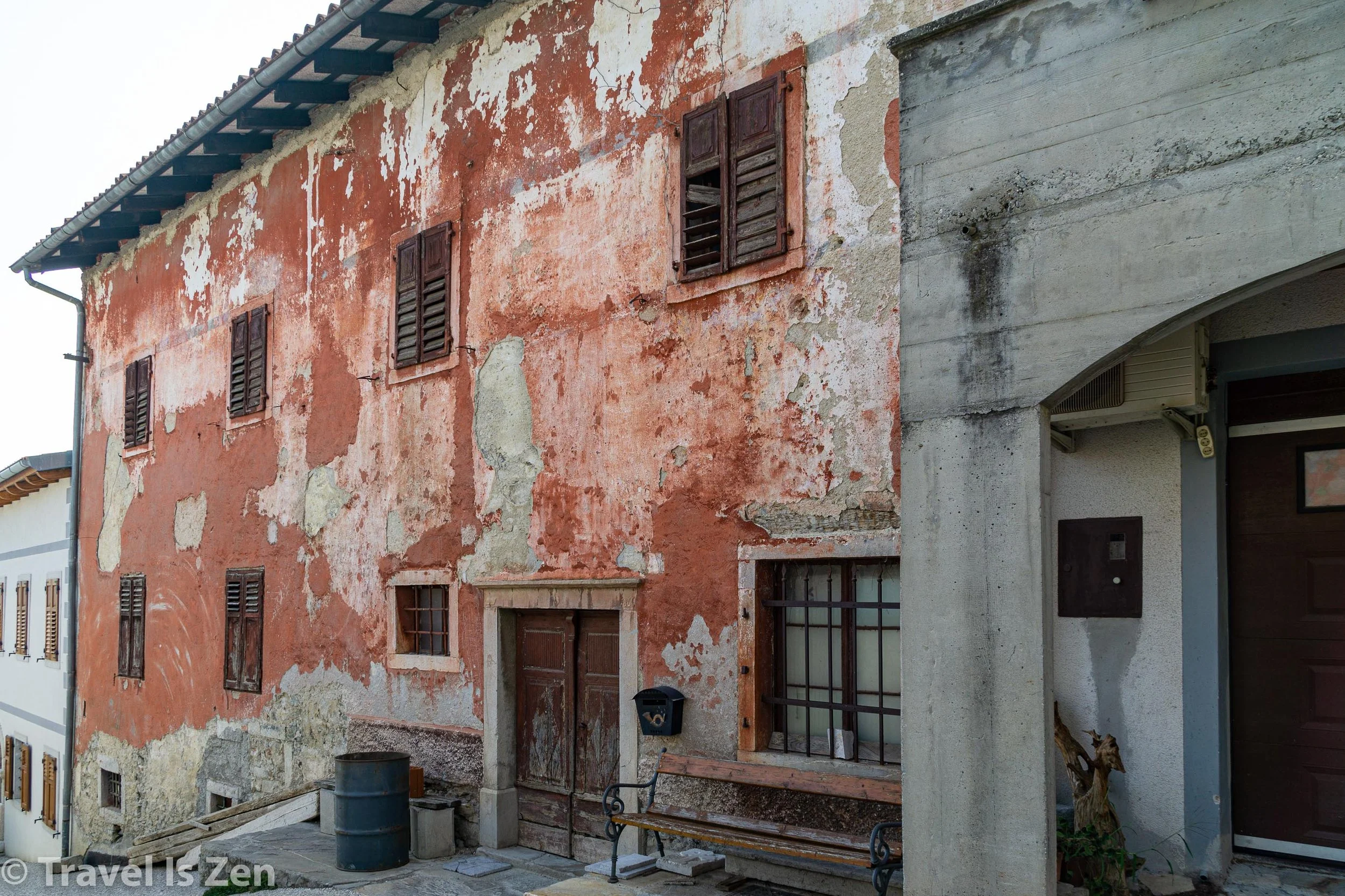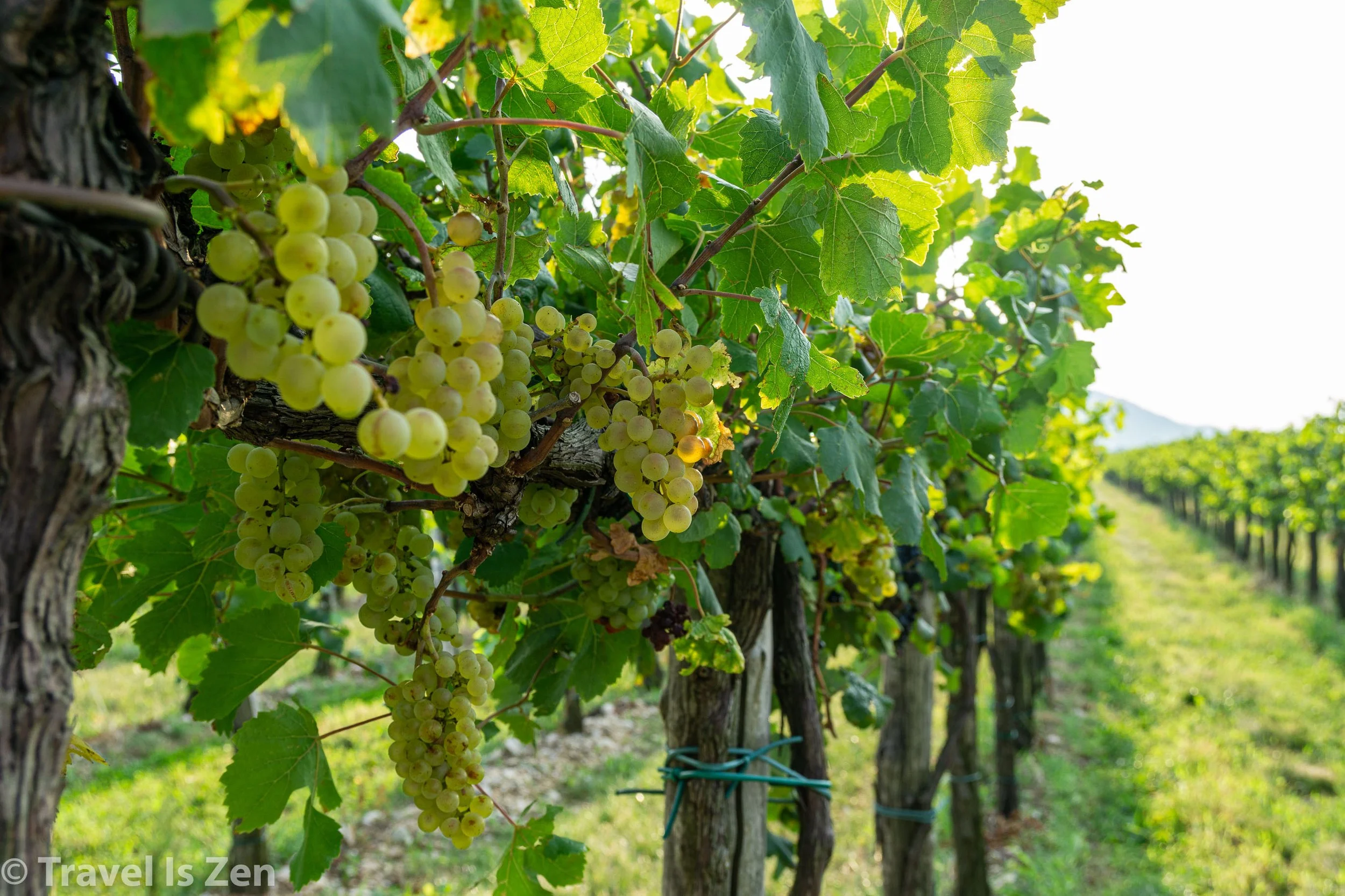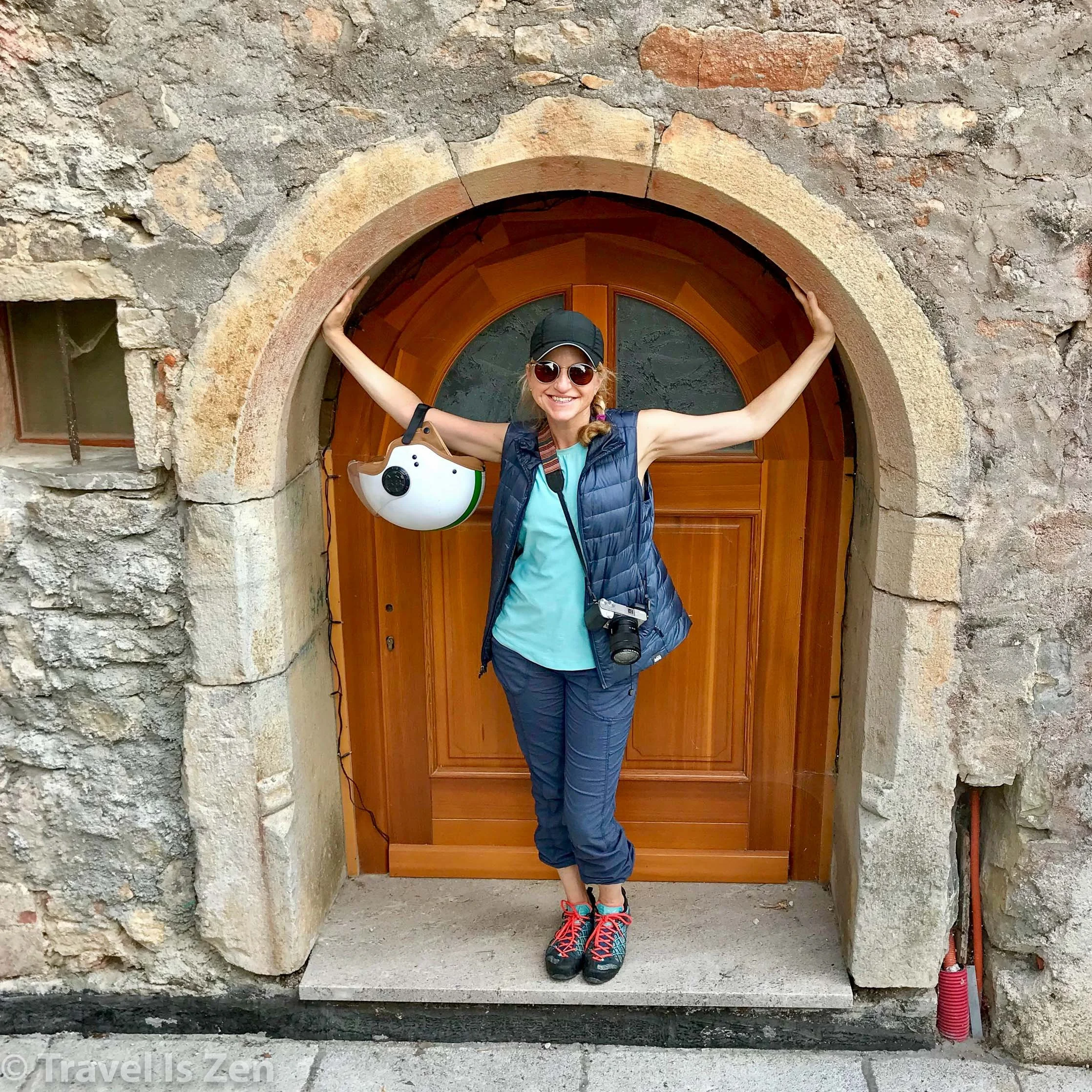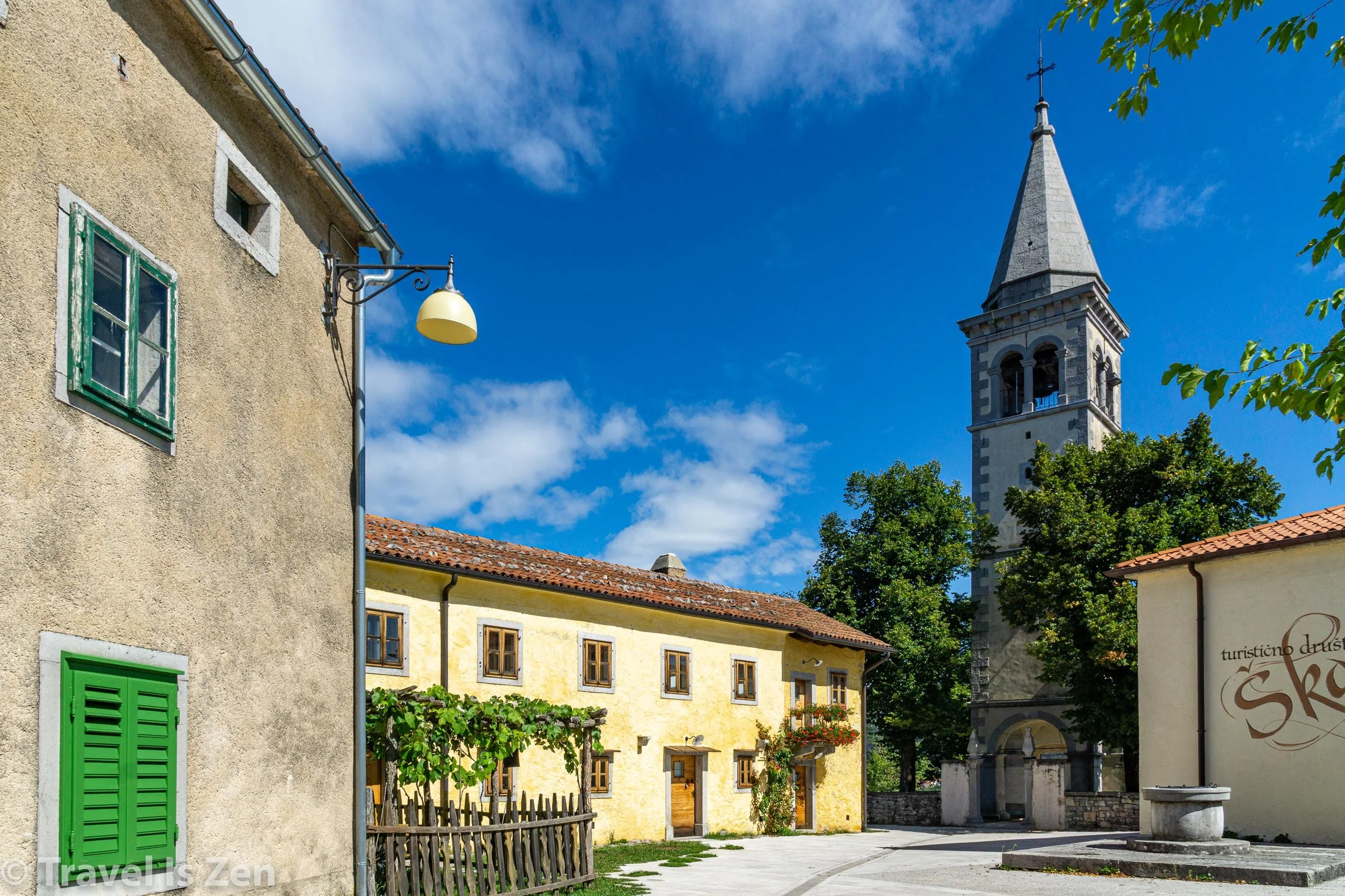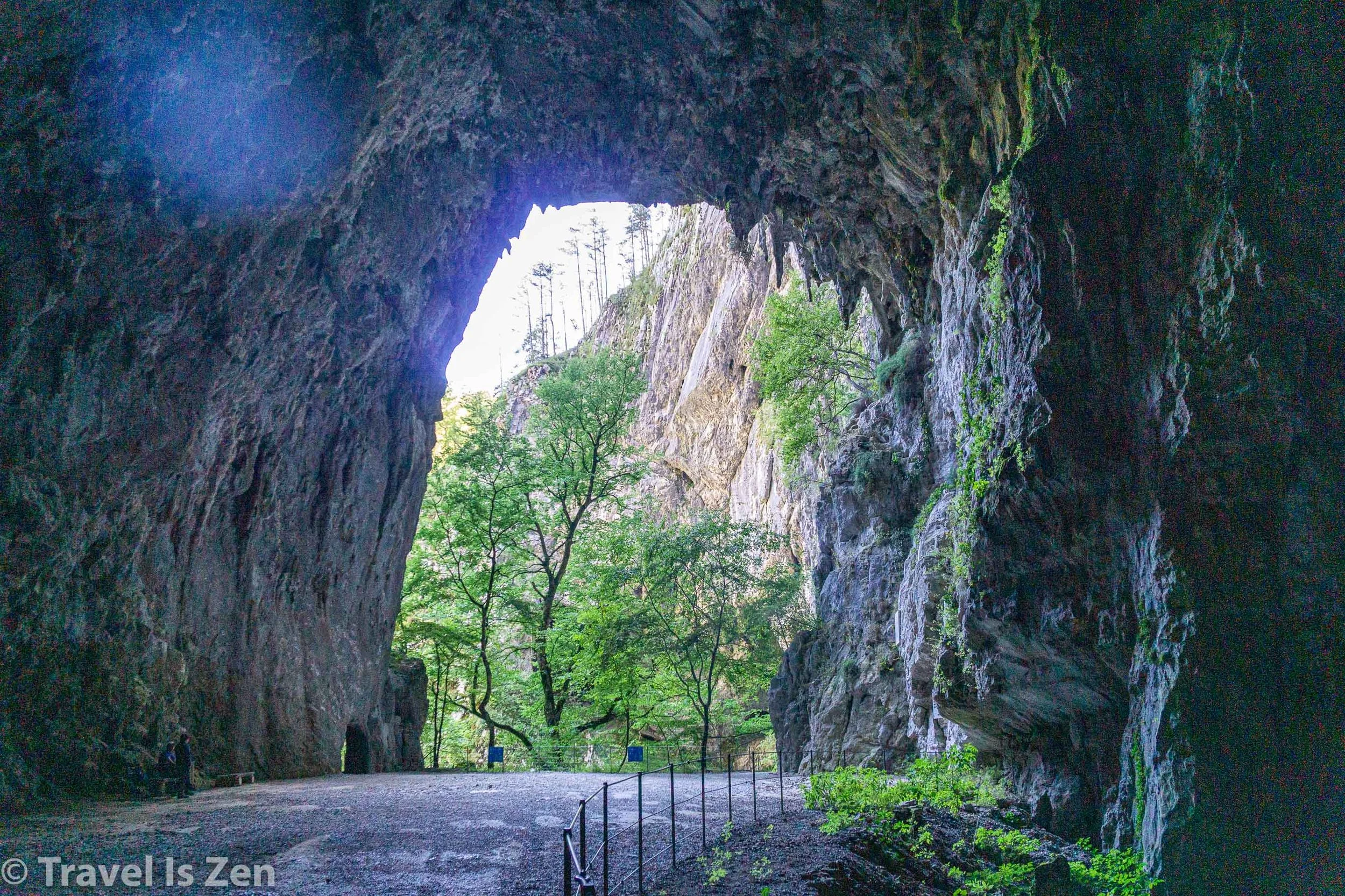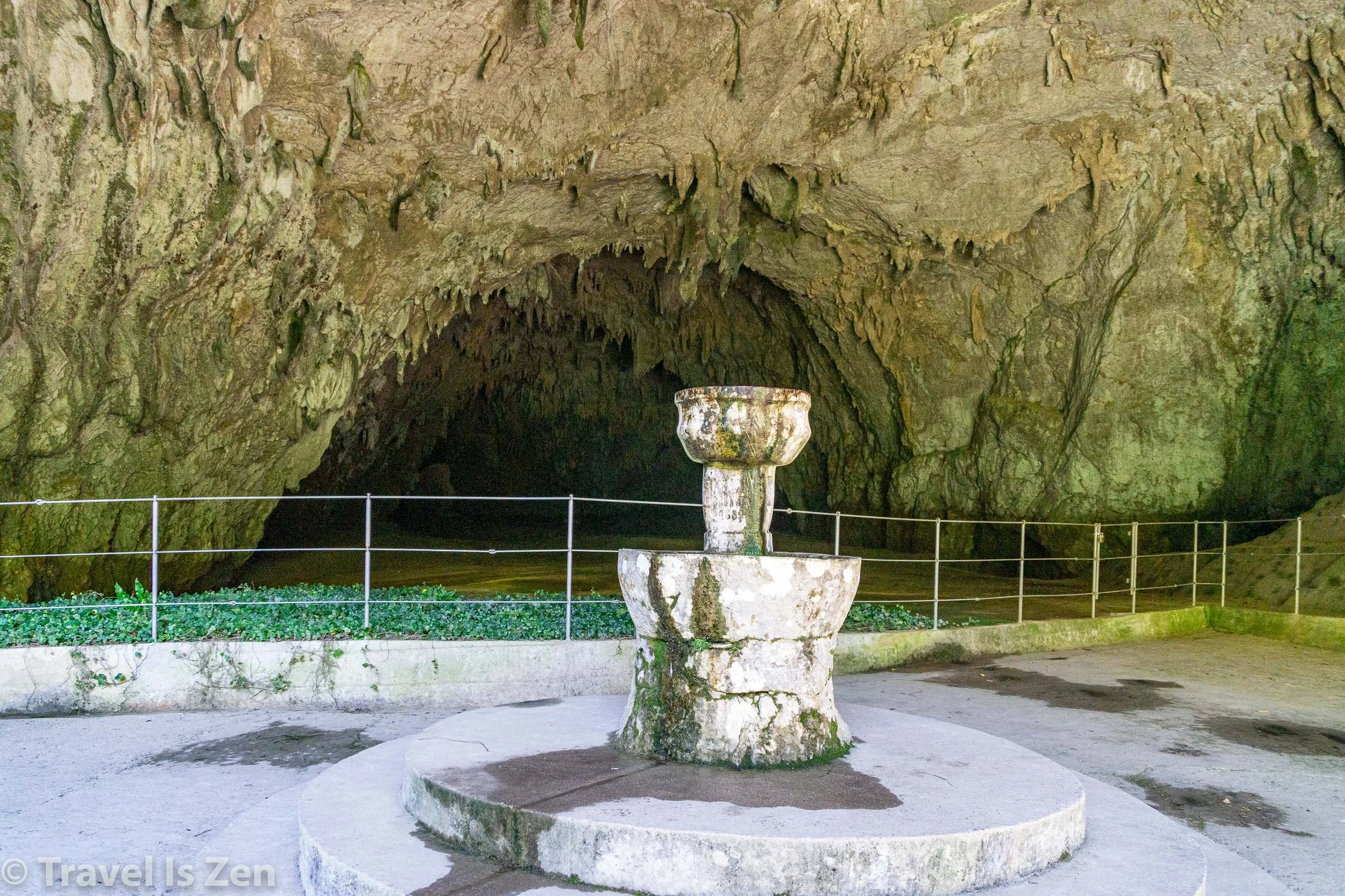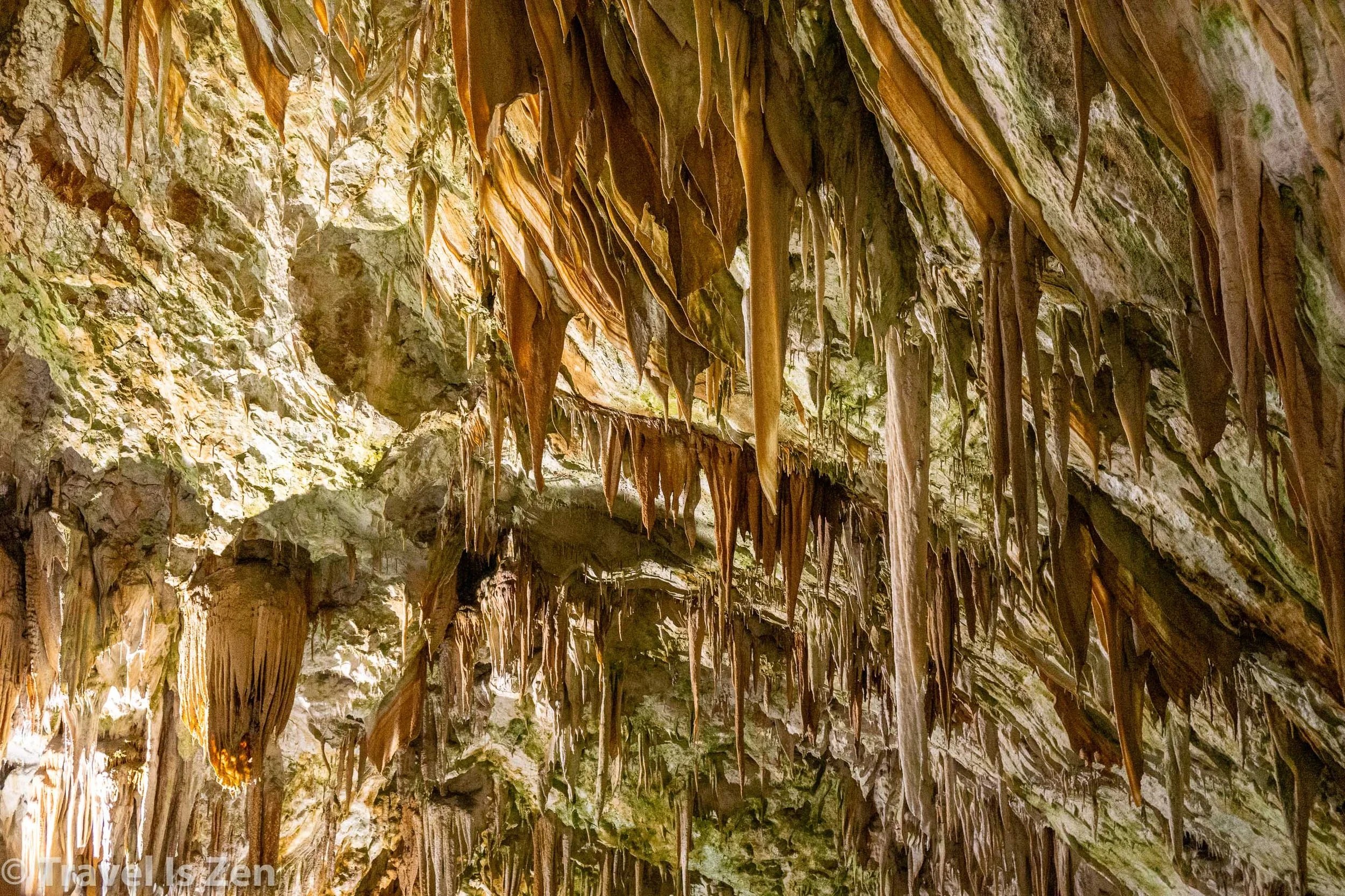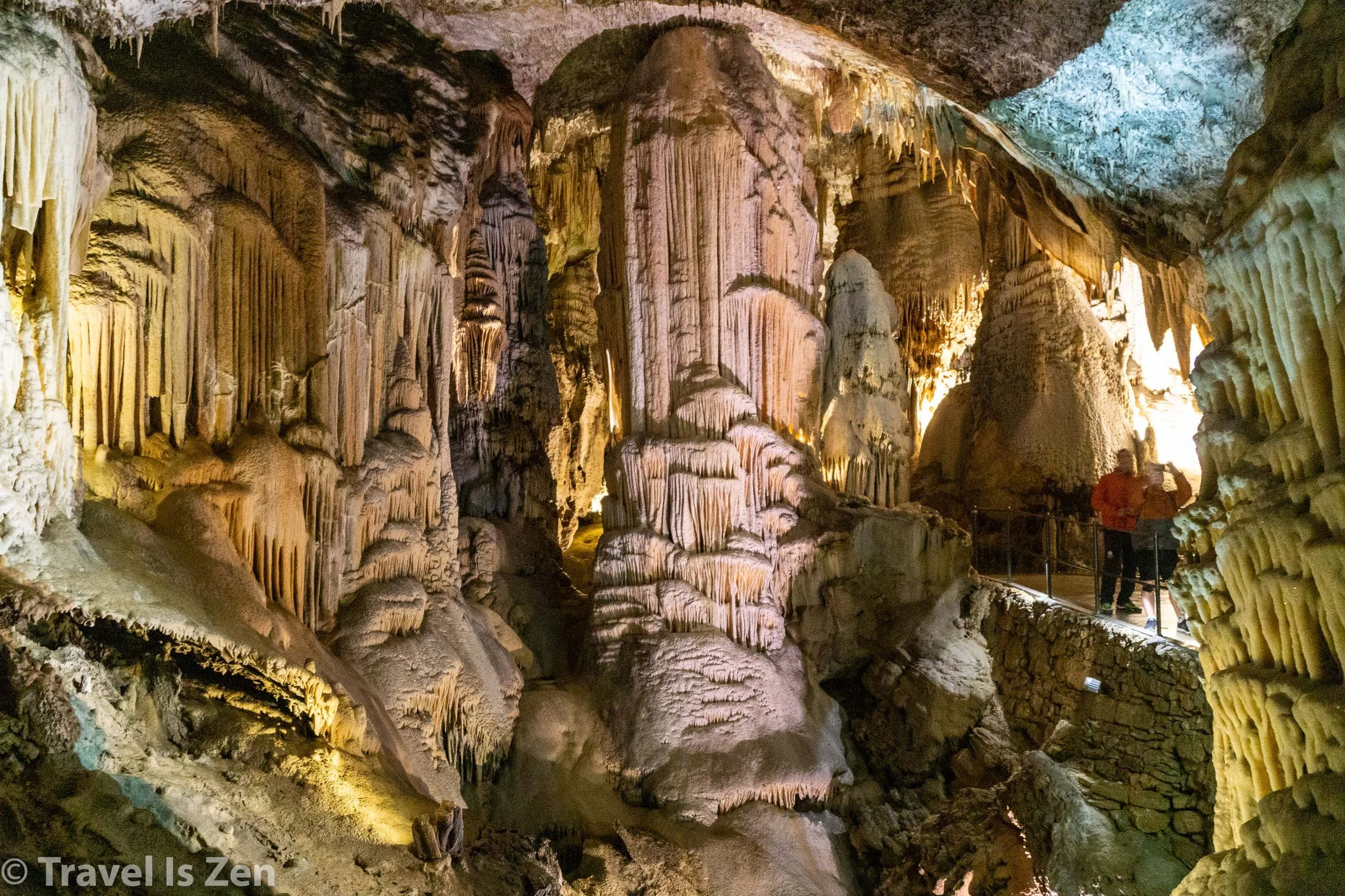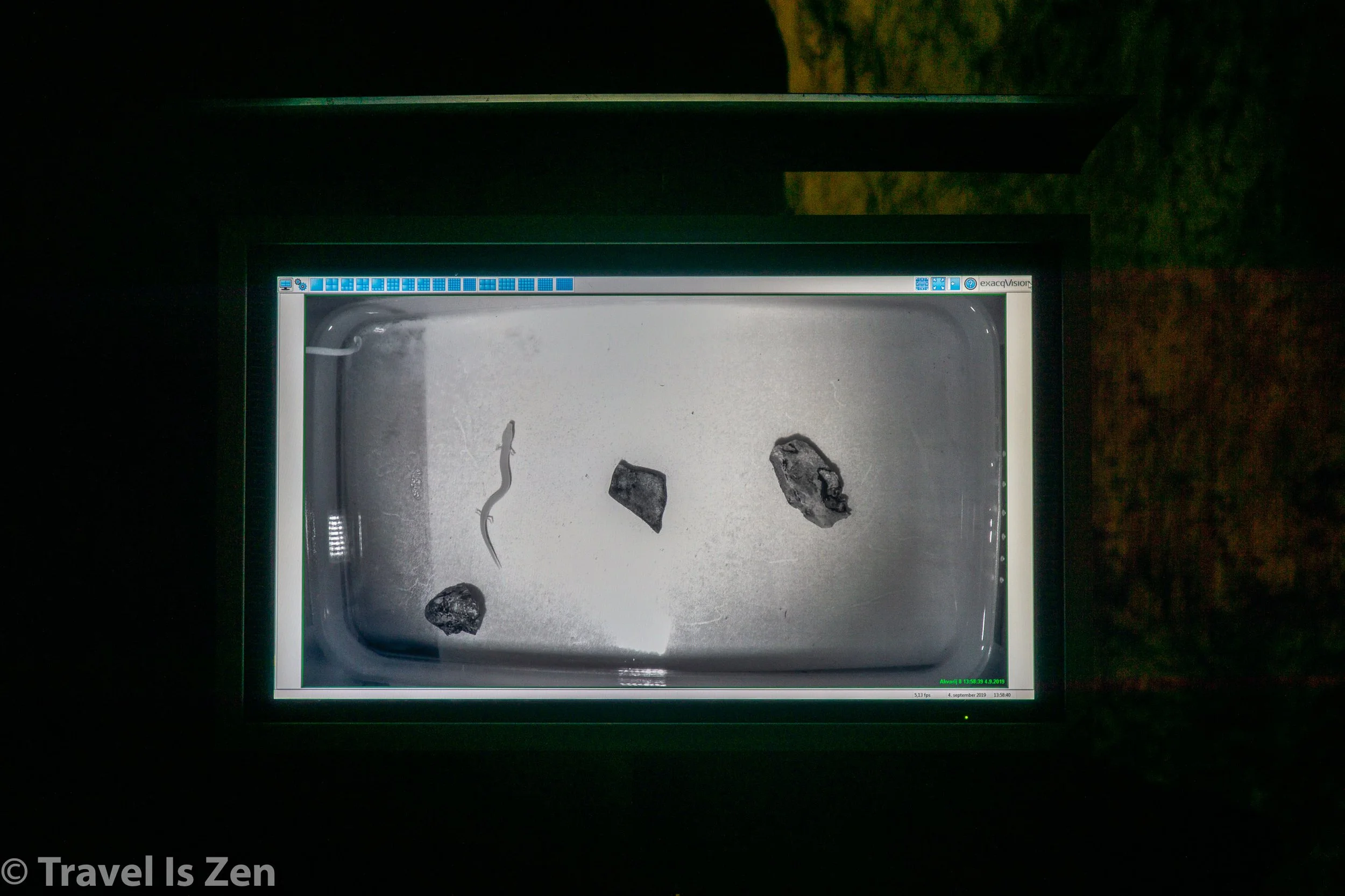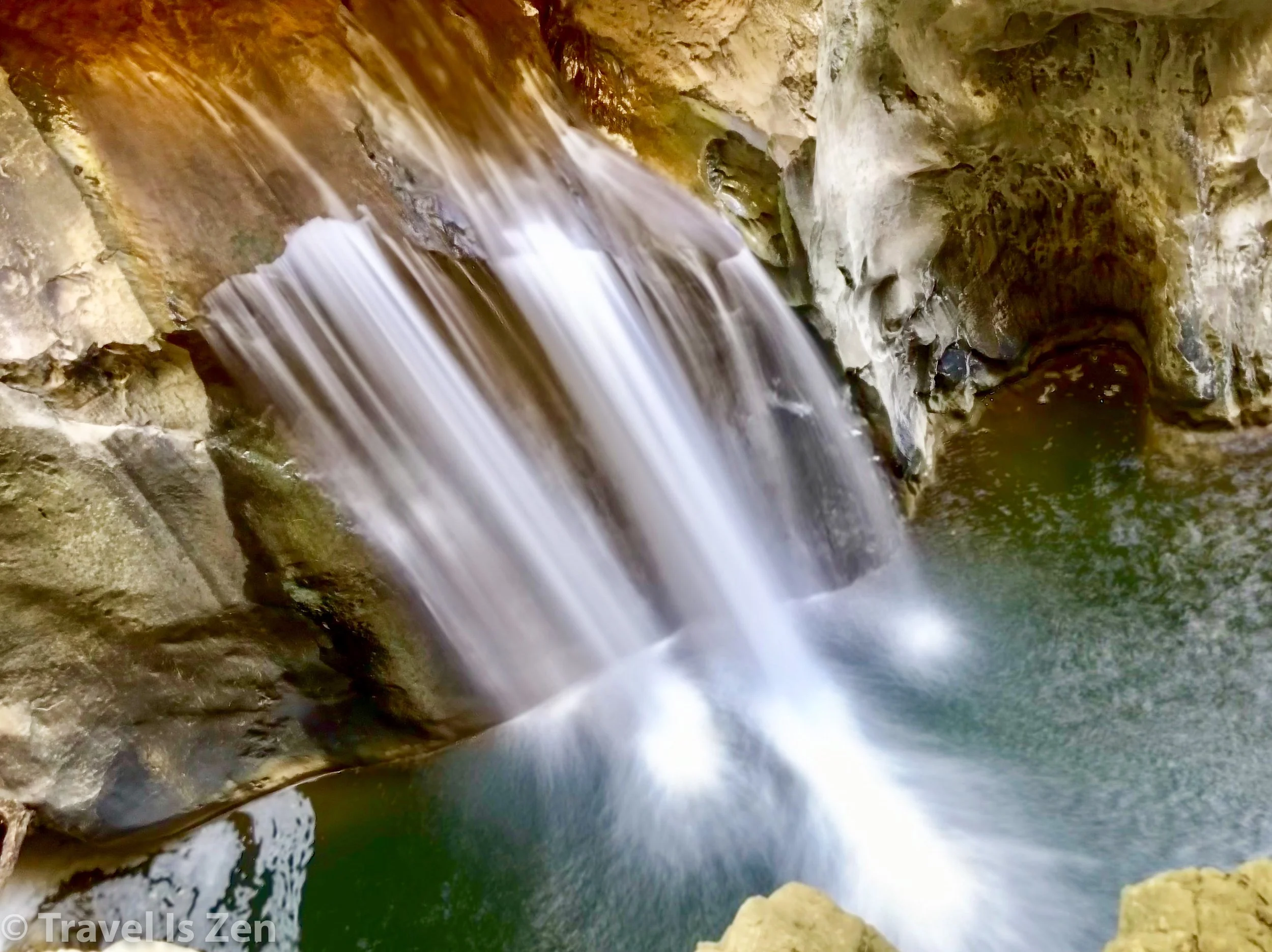Stages 9-11 of the Slovenian Mountain Trail: Mines, Lace, Wine and Caves
OVERVIEW OF STAGES 9 - 11
After crossing the Julian Alps, the Slovenian Planinska Pot bends southward. The mountains transition into rolling grassy hills, descend to broad wind-swept plateaus delineated by massive escarpments, and finally drop into semi-arid valleys peppered with vineyards. Stages 9 through 11 became more of a cultural experience. We improvised a lot, taking extra days to explore various attractions and enjoy the slow pace of Slovenia.
LODGING
The most difficult aspect of stages 9 through 11 is managing hut logistics. Most of the huts south of the Julian Alps are open only on the weekend, making hut-to-hut hiking challenging. The good news is that the Slovenian Mountain Trail passes through or near small towns with bed and breakfast inns (gostilnas) and hostels. We were able to hike without interruption by using a variety of accommodation types and being flexible. Call several days ahead of your intended arrival at a hut, gostilna or hostel to ensure that the place is open and that you have a reservation. It is also useful to ask about meals. Not all of the places we stayed provided breakfast and/or dinner. Furthermore, Slovenia Alpine Association Membership cards are not accepted at gostilnas, hostels, hotels and other types of lodging outside of mountain huts; we paid full price for lodging with no Alpine club discount.
PHOTO INSPIRATION
Stage 9: Petrovo Brdo to Idrija
Along the trail to Idrija, we learned some WWII history: In April, 1941, the Axis powers invaded the recently formed south slav Kingdom of Serbs, Croats and Slovenes (aka Kingdom of Yugoslavia) and occupied it, trisecting Slovenia into administrative zones under German Nazi, Italian Fascist and Hungarian rule.
A resistance movement against forced assimilation and repression formed, with Slovenes organizing into guerrilla militia forces. The Slovene resistance militia were called the Partizans. Initially, the Slovene partisans fought a purely revolutionary war against the occupying forces. By 1942, however, factions began to develop within the partisan movement and a civil war ensued between the communist Bolsheviks fighting for national liberation and anti-communist conservative Catholic leaders. As WWII raged, the Slovenes fought internally for their own sense of identity and nationalism; the communists (under Tito) eventually won the political battle. In 1945, post WWII, the Slovenian partizans merged with Tito’s militias to form the nation of Yugoslavia’s first military. Stage 9 is full of partizan and world war II artifacts.
Stage 10: Idrija to Col, along the Gora Escarpment
Stage 10 involves a hike along the Gora escarpment, where the land takes a sudden plunge to Vipava Valley and the city of Ajdovščina. It took us hours to cross the escarpment because we kept stopping every 5 minutes to take pictures of the stunning variety of wildflowers, butterflies and bees that inhabit the high plateau.
We had the pleasure of spending the night at Sinji Vrh art retreat center, high on a hilltop overlooking the valley. This special family-run pension house has been catering to artists for 30 years, holding annual conferences and workshops. The walls are covered in original works of art from artists all over the world. My favorite works were by Klavdij Tutta, a Slovenian painter whose inspiration comes from the Adriatic Sea and the mediterranean coast. Tutta is one of the founders of the Umetniki Za Karitas, the invitation-only artists symposium held annually at the pension. In exchange for room, board and materials, artists produce one small and one large theme-centered piece that are then donated to various charities and fund raising organizations in the region.
Stage 11: Col to Matavun and the Skočjan Caves
From Col, the trail rolls along across colorful meadows, past horse farms and enviable flower patches. It’s hard to tell that you are actually still hiking at elevation until you reach the edge of the Nanos plateau. Suddenly, the land plunges once again into lowlands that stretch towards the sea. Spoiler alert: we could actually see Nanos from the coast in Stage 12. This is the last steep dive you’ll make until you hit the Mediterranean. At the end of Stage 11, we stayed in Divača, a small town near Matavun within walking distance of the Skocjan caves. We day-hiked the trail around Skocjan, exploring the cave and nearby villages. In the morning, we took a train to Postojna (not on the Slovenian Mountain Trail) to visit Postojna Cave and Predjama castle, a worthwhile detour.
TOTAL WALKING MILES/KM: ~110 Miles
Stage 9: 36.5 miles / 59 kilometers
Stage 10: 36 miles / 58 kilometers
Stage 11: 38 miles / 61 kilometers
COST PER DAY PER PERSON: $46
Average cost per day during stage 9-11 was USD $46.00 a person, which included private rooms in mountain huts, bed and breakfast inns, hostels, and other room/apartment rentals. It also includes meals and drinks (including wine and beer) — and we ate WELL!! We paid primarily in cash in the mountain huts, but used credit cards in other types of accommodations.
EQUIPMENT
No via ferrata kit, climbing shoes, or helmet needed. Best advice is to pack very light and enjoy it!
FOOD (and WINE)
As the trail progresses through the Vipava Valley region, the wine quality and selections substantially improve! Food becomes less German and more Italian/Mediterranean influenced. Pasta dishes, a variety of meat, full-spread breakfast buffets, döner wraps and fresh salads become available in town accommodations. In mountain huts, it’s business as usual (jota and ričet — sauerkraut soup or barley porridge).
Side Trips
Stage 9 Side Trips: Bolnica Franja Military Field Hospital
Deep in the mountains, hidden within the Pasice Gorge, the Franja Partisan Field Hospital secretly operated throughout WWII. Built primarily to service the Slovenian Resistance Movement (against Italy), nearly 900 wounded soldiers of various nationalities were taken to this clandestine location for treatment, including Americans. The trail to the hospital has signboards explaining how soldiers and supplies were transported to the facility without detection and how defensive measures were taken to protect the hospital. It’s a thrilling walk and a testament that empathy, compassion and human decency exist even in war.
Stage 9 Side Trips: Idrija Mercury Mine Tour and Idrija School of Lace
Idrija is a town with a 500 year history of mercury (Hg) mining. In 1495, “quicksilver” was discovered in the cinnabar deposits beneath the town. Idrija quickly became the second largest mercury mine in the world, a title lasting into the 20th century. The mine officially closed in 1989 after the European Union outlawed the use of mercury due to its toxicity. Today, the government continues the process of securing the vast network of mining tunnels below the city and the upper levels of the mine have been turned into a museum showcasing 500 years of technological innovation in the mining business.
Miners lives were nasty, brutish and short. Mercury is toxic and the miners worked without proper safety gear until the 1970s. Most did not live beyond the age of 50. Wives in Idrija were widowed at a young age. To earn an income, the women learned to make lace. Since the 16th century, Idrija lace has maintained a reputation for quality, style, and refined beauty. The bobbin lace technique was passed down generation to generation. In 1876, the Idrija School of Lace was officially established. Today, the school has 450 students between the ages of 6-15 who come twice a week after school to continue the tradition of lacemaking.
Stage 10 Side Trips: Vipava Valley, Ajdrovscina and WINE!!
Vipava Valley is where alpine, karst, and mediterranean climates mesh into an eden of vineyards. While in Col, we rented a motor scooter and drove into the valley, stopping at Darovi Vipanske for a wine tasting. The region features an exciting diversity of autochthonous grape varietals, providing for a fresh tasting experience. The white Pinela grape, for example, is only grown on a 40 hectare plot in the Vipava Valley and nowhere else in the world. Its wine has a citrus taste; pleasantly dry; not too sweet. Perfect for a picnic lunch on a hot afternoon. The most interesting was a Rebula orange wine. While white wine is fermented without grape skins, orange wines are macerated with the skins and seeds, which imbues an orange hue and tannins (similarly, a rose wine is fermented without skins; reds with skins). The wine is tart, fuller-bodied than a white but flatter than a red. It takes a little getting used to, but was fun to try! We also snapped pics at the source of the Hubelj River and at Roman walls dating back 2,000 years!
Stage 11 Side Trips: Skocjan and Postojna Caves, Predma Castle
43% of Slovenia is limestone karst, with over 13,000 caves. Stage 11 culminates at Škocjan, actively explored since the 1880s. This cave is exceptional because the Reka River disappears into the cave system and flows underground through vast chambers for nearly 100 miles. The Slovenian Mountain Trail passes by an overlook of the cave at a “sunken dolina”, but take a few extra hours for a cave tour. It was worth the 12.50 euros per person.
From Divača, we also took a short train ride to Postojna (not on the Slovenian Mountain Trail) to visit Postojna Cave and Predjama castle. Postojna cave is unique in that a train takes you several kilometers deep into the cave belly to begin the tour. From the cave tourist center, a free bus shuttles visitors to Predjama, a castle built into a karst cave system 800 years ago in the 13th century. The rooms of Predjama Castle extend into the cave system, giving residents secret access to the outside world and subterranean water sources when under siege. It is an amazing fortress, never defeated in its history! It was owned by various clergy, knights, counts and titled families until it was nationalized after WWII and turned into a museum by the Yugoslav Communist government. Our ticket price for both the cave and the castle tour was quite steep at 35.50 euros per person, but they are two of the main tourist attractions in Slovenia. Sometimes you just gotta bite the bullet and pay.
ADDITIONAL NOTES
There are some long days along this section, often without any place in between for lunch. Be prepared with snacks/packed food…and take advantage of any place you DO see open for business. :-) Oh, and be wary at the Koča Anton Bavčerja — the owner conveniently disappeared in the morning and asked us to leave money in a box. We had no change and ended up over-paying 2 x’s the amount (for really poor accommodations). This was one of very few “bad” experiences at a mountain hut. At Koča Anton, we watched the family eat this gigantic spread of yummy looking food; when we asked for dinner, they said they served ONLY jota. The hot water was not working and the sleeping area was so musty that I could barely breathe. Not a good place, but there is no other option. Very poorly run.
The food, accommodations, and art at Sinji Vrh (end of stage 9) are worth spending an additional night. This place was one of the highlights of the entire Slovenian Mountain Trail, especially after Koča Anton! Although the food was top-rate, they gave us a nice discount on our "full board”. We felt like we received 5-star treatment for mountain hut prices and Betty (the manager) was super sweet, smart and passionate about fostering the art community.
It goes without saying that you should either hike down to Vipava Valley or rent a motor scooter and sight-see while in Col/Ajdovscina. The Slovenian Mountain Trail skirts the valley along the highlands; unless you make a side-trip, you won’t descend into this magnificent area. We spent an extra night in Col at Gostilna Tratnik; “Rent a Scooter” delivered a scooter to the BnB and picked it up 24 hours later for just 30 euros per day (2 helmets included; gas cost us a mere 2.25 euro for an entire day of driving). Riding through Ajdovscina and Vipava Valley is like driving through the Italian countryside! Beautiful vineyards, Mediterranean flora, and ancient Roman history — you really don’t want to miss Vipava Valley.
